It seems we can’t find what you’re looking for. Perhaps searching can help.
Sign Up for newsletter!
Subscribe to get the latest eBook!
Hotline






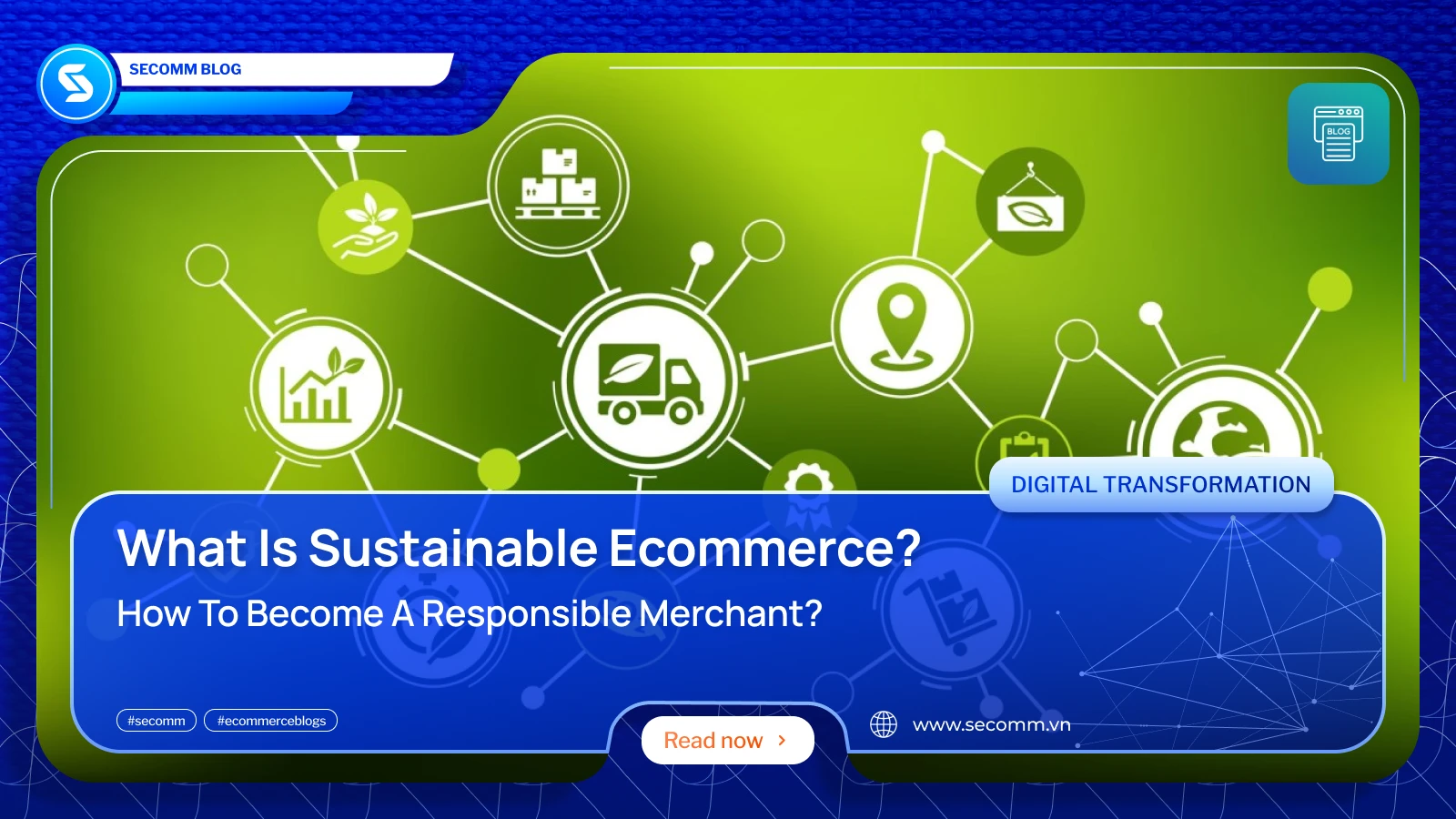
eCommerce has become an integral part of our daily lives, offering unparalleled convenience and access to a vast array of products. However, as the industry continues to grow, so does its environmental footprint. From excessive packaging waste to carbon emissions from shipping, the environmental impact of eCommerce cannot be ignored. This brings us to the concept of sustainable eCommerce—a transformative approach that seeks to minimize the negative environmental effects of online retail while promoting ethical business practices.
Sustainable eCommerce is not just a trend; it’s a response to the increasing consumer demand for environmentally friendly and socially responsible products. A survey shows that 72% of respondents reported that they were actively buying more environmentally friendly products than they did five years ago, while 81% said they expected to buy even more over the next five years.
In this blog, we will delve into the essence of sustainable eCommerce, explore its importance, examine the growing demand for it, and provide practical steps on how you can become a responsible merchant.
Sustainable eCommerce refers to the practice of conducting online business in a way that minimizes environmental impact and promotes social responsibility. At its core, it involves making mindful decisions at every stage of the business process, from product sourcing and manufacturing to packaging, shipping, and customer engagement. The goal is to reduce the carbon footprint, minimize waste, and ensure that ethical standards are upheld throughout the supply chain.
There are some common components in the eCommerce sustainability, including:
Offering products that are made from sustainable materials, are biodegradable, or have a lower environmental impact is crucial. This means choosing materials that are renewable, such as organic cotton or bamboo, over conventional materials that may deplete natural resources or cause pollution. Additionally, promoting products that are ethically sourced ensures that they are produced under fair labor conditions, respecting workers’ rights and contributing to social sustainability.
Sustainable packaging involves using materials that can be recycled, are biodegradable, or are made from recycled content. For instance, using cardboard boxes made from recycled paper or packing peanuts that are biodegradable can greatly reduce the environmental footprint. This approach not only minimizes waste but also appeals to environmentally conscious consumers.
Reducing energy consumption in the warehousing and logistics aspects of eCommerce is another critical component. This can be achieved by:
Minimizing waste throughout the entire eCommerce process is essential. This involves:
Ensuring that all business practices are ethical and transparent is fundamental to sustainable eCommerce. This includes:
By integrating these key components to strategies, eCommerce businesses can significantly reduce their environmental impact, support social responsibility, and meet the growing demand from consumers for more sustainable and ethical products.
Understanding the importance of eCommerce sustainability is crucial for businesses looking to thrive in today’s market. Here are several reasons why adopting sustainable practices in eCommerce is vital:
The environmental impact of traditional eCommerce practices is significant. From the excessive use of plastic packaging to the carbon emissions from shipping and logistics, the eCommerce industry contributes to environmental degradation. By adopting sustainable practices, businesses can significantly reduce their carbon footprint, decrease pollution, and help conserve natural resources. Sustainable eCommerce practices, such as using eco-friendly packaging and optimizing delivery routes, play a vital role in mitigating the industry’s environmental impact.
Consumer behavior is shifting towards sustainability. More and more customers are becoming environmentally conscious and prefer to purchase from brands that align with their values. Studies show that a growing number of consumers are willing to pay a premium for products that are sustainably produced and packaged. By adopting sustainable practices, eCommerce businesses can meet this demand, attract a broader customer base, and enhance customer loyalty. Being a responsible and eco-friendly brand can also differentiate a business in a crowded market.
Sustainable eCommerce practices can lead to significant business benefits. These include cost savings from reduced waste and energy consumption, improved brand reputation, and increased customer loyalty. Businesses that prioritize sustainability can also access new markets and opportunities, such as partnerships with other eco-friendly brands and certifications that can enhance credibility. Additionally, sustainable practices can lead to innovation, as companies find new ways to reduce their environmental impact and improve efficiency.
Governments and regulatory bodies are increasingly implementing stricter environmental regulations. Businesses that do not comply with these regulations risk facing fines, penalties, and damage to their reputation. By adopting sustainable practices, eCommerce businesses can stay ahead of regulatory changes, ensure compliance, and avoid potential legal issues. Proactively embracing sustainability also positions businesses as leaders in their industry, setting an example for others to follow.
Sustainability is essential for the long-term viability of businesses. As natural resources become scarcer and environmental issues become more pressing, companies that do not adopt sustainable practices may face higher costs and supply chain disruptions. By integrating sustainability into their business model, eCommerce companies can ensure they are resilient to future challenges and are better prepared for a changing market landscape. Sustainable practices also contribute to a positive corporate image, which can attract investors and stakeholders who prioritize responsible business operations.
Becoming a sustainable eCommerce business involves implementing practices that minimize environmental impact and promote social responsibility. Here are key steps to help you achieve sustainability:
Optimizing your supply chain is crucial for sustainability. This involves sourcing materials and products from suppliers who adhere to ethical and environmental standards.
Shipping is a significant contributor to the environmental footprint of eCommerce. Optimizing your shipping strategy can help reduce emissions and improve efficiency.
Packaging is a major source of waste in eCommerce. Switching to recyclable packaging can significantly reduce environmental impact.
Supporting environmental charities and initiatives can enhance your sustainability efforts and demonstrate your commitment to making a positive impact.
By implementing these strategies, your eCommerce business can significantly reduce its environmental impact, meet the growing demand for sustainable practices, and build a loyal customer base that values social responsibility. Adopting sustainability is not only good for the planet but also beneficial for your business’s long-term success.
Final words
eCommerce sustainability is no longer a luxury but a necessity. Consumers are increasingly prioritizing eco-friendly and socially responsible brands, and businesses must adapt to meet this demand. Embracing sustainable eCommerce practices, businesses can make informed decisions that contribute to a healthier planet.
 80
80
 2,863
2,863
 1
1
 27
27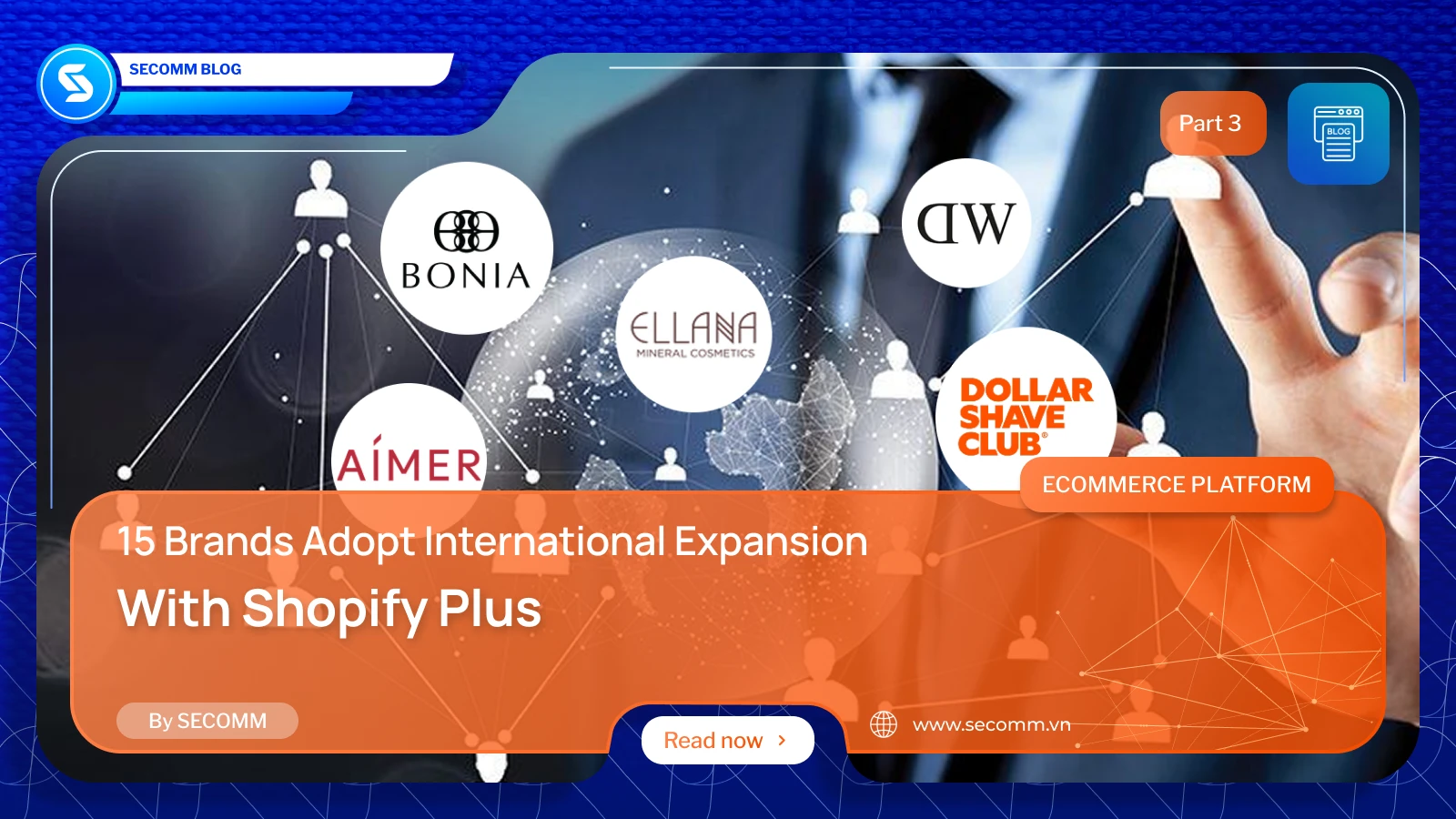
Welcome to the final installment of our three-part series on brands that have successfully embraced international expansion with Shopify Plus. In the previous parts, we explored the journeys of ten dynamic brands that leveraged Shopify Plus to navigate the complexities of global growth. In this concluding chapter, we turn our attention to five more outstanding brands: Ellana Cosmetics, Dollar Shave Club, Daniel Wellington, BONIA, and AIMER.

Dollar Shave Club (DSC) is a renowned American company that revolutionized the personal care industry with its subscription model for razors and personal care products.
Initially, DSC built its own custom eCommerce platform, which provided flexibility and high customization. While this allowed DSC to shape its business model in the digital landscape, managing and maintaining it became complex and resource-intensive over time. As technological solutions like Shopify emerged, offering features and tools that DSC could leverage, the company explored available solutions to integrate them into its existing system. After careful consideration, DSC transitioned to Shopify Plus to better support its profit growth and international expansion goals.
Through Shopify Plus, DSC operates and manages its subscription business model more effectively, integrating multiple applications within the Shopify ecosystem to optimize marketing campaigns and customer care. As a result, DSC reduced system maintenance resources by 40%, reached over 100 million global consumers through ShopApp, swiftly converted international stores to Shopify Plus within weeks instead of months, and increased conversion rates using Shopify’s applications.
Website: dollarshaveclub.com
Industry: Men Health
Traffic: 3.148M/month
Rank: #9,907 (USA) & #50,278 (Global)
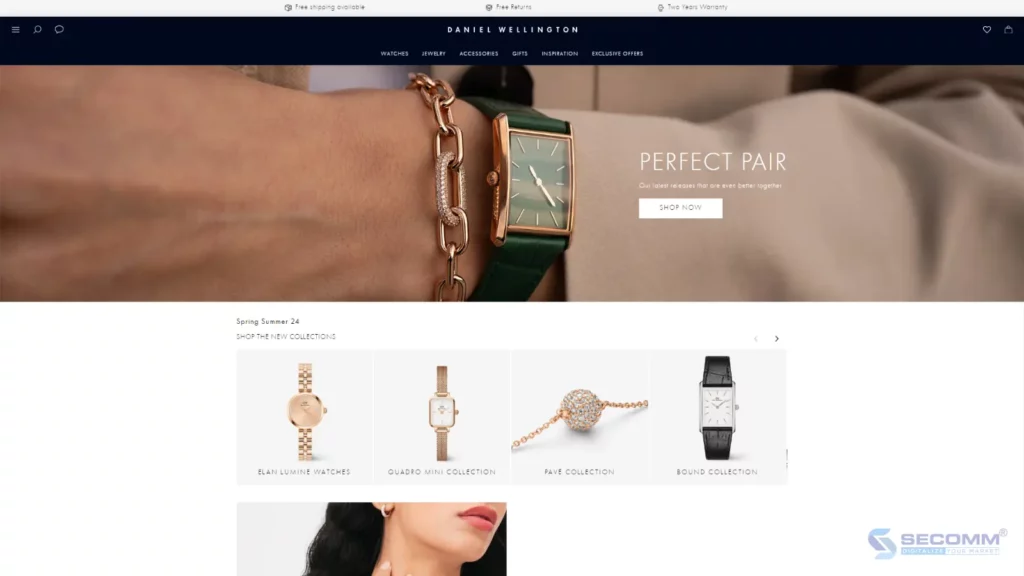
Launched in Sweden in 2011, Daniel Wellington is known for its elegant, minimalist watch designs and superior quality. Before Daniel Wellington adopted Shopify, they faced significant operational challenges, particularly the complexity and cost of their current technology systems, which included an e-commerce platform lacking user interface from CommerceTools and Contentful as their chosen CMS platform. The development and rollout of new features were time-consuming and cumbersome, consuming substantial resources. Additionally, Daniel Wellington used an on-premise ERP system, which increased costs and complexity. With multiple stores and integrated systems, product changes took months or even years to implement, resulting in delayed time-to-market.
Since transitioning to Shopify Plus, all these issues have been thoroughly addressed. Website features that previously took months or even years to develop and launch now take only days or weeks. This practical approach allows for quicker decision-making and agile response based on market dynamics. Other notable outcomes include the rapid launch of 12 expansion stores, a 50% reduction in platform fees, and fewer resource expenditures on maintenance and development compared to before.
Website: https://global.danielwellington.com/
Industry: Fashion
Traffic: 2.773M/month
Rank: #78,900 (USA) & #63,785 (Global)

Established in 1974, BONIA has gradually become a prestigious and irreplaceable fashion brand in Southeast Asia. After making the strategic decision to transition from Adobe Commerce to Shopify due to previous challenges with product launch speed and website responsiveness, BONIA aimed to leverage its online presence for international expansion. Recognizing the need to provide personalized experiences for customers while maintaining a consistent brand identity across different markets, BONIA also sought to ensure that managing multiple websites wouldn’t burden its team with excessive time and costs.
Therefore, BONIA upgraded to Shopify Plus. This strategic move enabled BONIA to harness the expansive capabilities of Shopify Plus storefronts, allowing them to establish multiple online storefronts alongside their flagship Malaysian website. Leveraging this capability, BONIA seamlessly integrated themes and layouts from its Malaysian store while ensuring each new store exudes its own distinct charm and is localized to specific locations. This localization was achieved through customized adjustments tailored to each specific region. Shopify Plus’s organizational admin also played a crucial role, providing BONIA with a centralized command center for all its stores.
As a result, BONIA increased its overall revenue by 10% through expansion into Singapore and saw a 25% annual increase in website traffic.
Website: https://bonia.com/
Industry: Fashion
Traffic: 108,842/month
Rank: #27,473 (Malaysia) & #1,510,285 (Global)

In 2007, Ellana Cosmetics was founded with the goal of helping global consumers achieve better skin and improve their skincare knowledge. Recognizing the opportunity to reach more customers online, the brand initially started with a basic HTML website, then moved to Adobe Commerce and later WooCommerce. However, Ellana Cosmetics was dissatisfied with the results these platforms provided. The lack of robust data management tools made it difficult to personalize customer experiences across different markets, resulting in significant online sales losses.
Ellana Cosmetics switched to Shopify when their e-commerce marketing efforts were still in their infancy in the Philippines. This allowed Ellana to strengthen its technological foundation and accelerate growth and efficiency by upgrading to Shopify Plus shortly thereafter. The company leveraged various solutions to optimize managing multiple expanded storefronts, including Shopify Flow. As a result, the average order value increased by 17%, payment failure rates decreased by 40%, and online revenue increased by 50%.
Website: https://www.ellanacosmetics.com/
Industry: Cosmetics
Traffic: 88,075/month
Rank: #61,563 (Philippines) & #2,754,014 (Global)
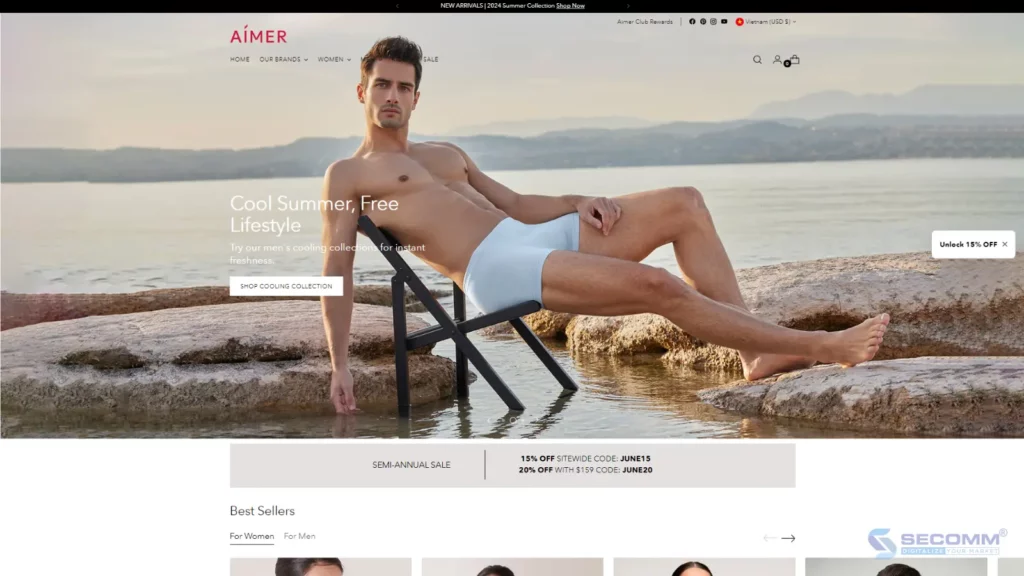
Founded in 1993, AIMER is one of the leading lingerie brands in China. With over 20 years of experience in designing and creating premium and luxurious lingerie, AIMER takes pride in its continuously evolving creative design team, which has developed more than 400 new products under its five main brands: AIMER, imi’s, LA CLOVER, AIMER Men, and Aimer Kids. Supported by these innovative products, AIMER has established an international presence far beyond its homeland, including regions such as North America, Europe, and the Middle East.
International sales are a crucial part of AIMER’s development strategy. However, the brand faced challenges regarding customization, taxation, and compliance with tax rules. AIMER migrated its platform to Shopify Plus, leveraging its customization capabilities to meet the needs of customers in international markets.
Additionally, utilizing Shopify Plus’s Avalara tax automation feature helped AIMER automatically calculate taxes based on the customer’s international address. Instead of manually calculating taxes, Shopify Plus accurately computed taxes for each order based on the latest tax regulations of the target market and automatically added taxes to the final checkout page, ensuring transparency in tax costs for consumers.
As a result, AIMER saw a 105% increase in monthly site visits, a 57% increase in monthly conversion rates, and a 62% increase in monthly page views.
Website: https://aimeronline.com/
Industry: Fashion
Traffic: 32,449/month
Rank: #51,992 (Hong Kong) & #1,948,207 (Global)
Final Words
In this final part of our series, we’ve delved into the inspiring journeys of Ellana Cosmetics, Dollar Shave Club, Daniel Wellington, BONIA, and AIMER. These brands exemplify how leveraging Shopify Plus can transform the challenges of international expansion into opportunities for growth and success.
As we conclude our series, it is evident that the journey to international expansion is complex but highly rewarding with the right tools and strategies. For brands looking to embark on this path, the experiences of 15 success stories will provide valuable insights and inspiration.
Need a deep consultation? Contact SECOMM for free!
 2
2
 3,712
3,712
 0
0
 1
1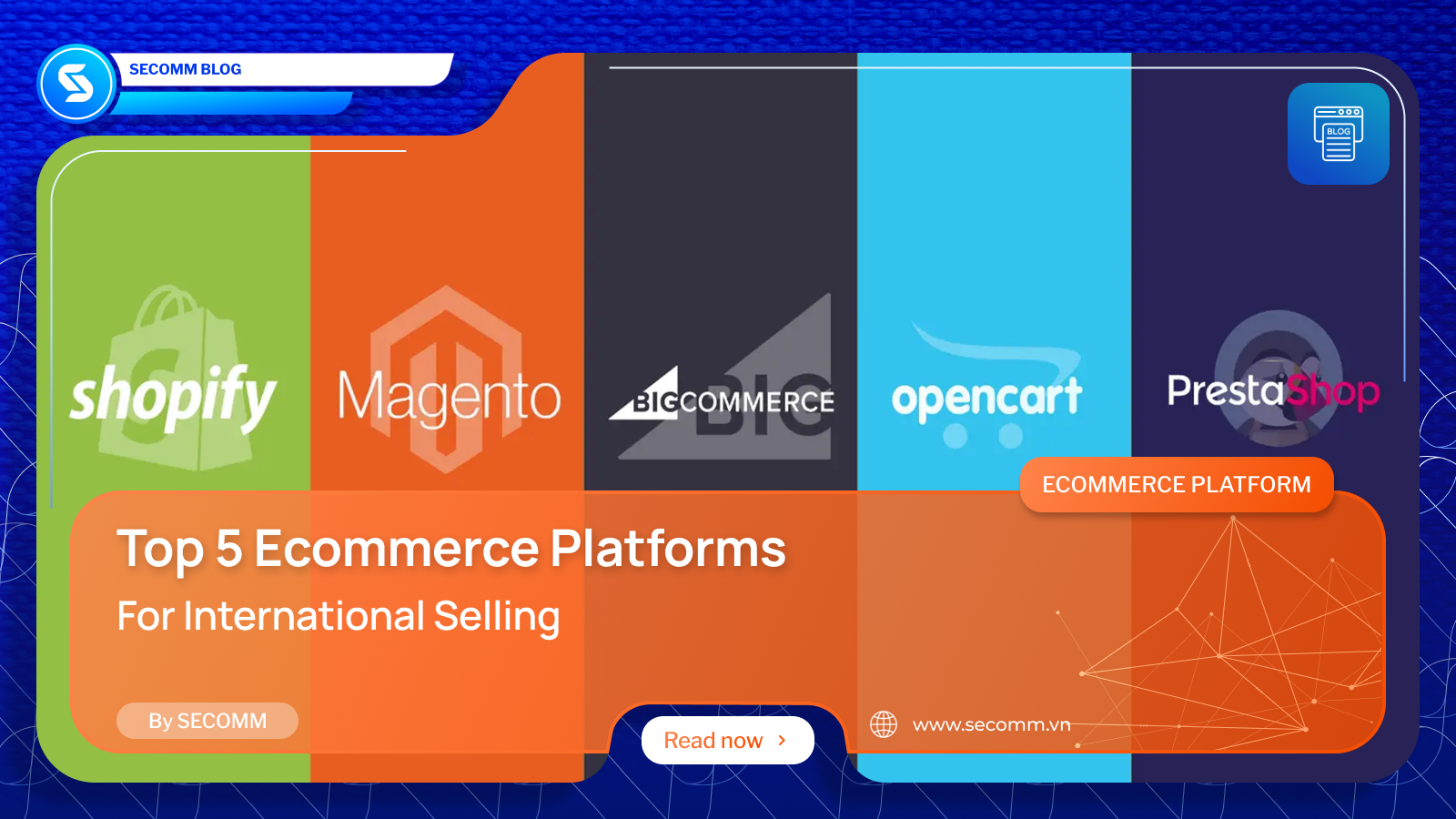
International eCommerce platforms are shaping the shopping trends of modern consumers worldwide, where geographical boundaries are no longer barriers to business activities. With the continuous development of technology and the internet, businesses have the opportunity to reach millions of customers around the globe more easily than ever. However, to succeed in the international market, choosing the right eCommerce platform is crucial.
In this article, let’s explore the top 5 platforms that effectively meet the needs of many businesses for implementing international eCommerce.
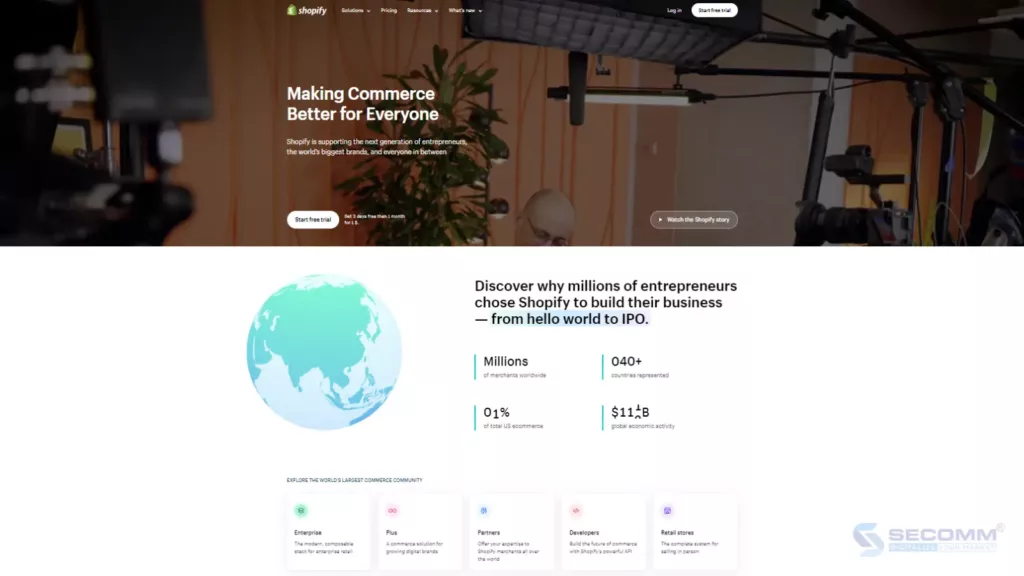
Shopify is a well-known SaaS eCommerce platform for businesses worldwide. It offers an all-in-one solution called Shopify Markets, allowing businesses to start selling in over 150+ different markets and manage efficiently on a single dashboard. Shopify Markets comes in two versions:
Integrated into all Shopify plans, providing core features including:
Fees are incurred per international transaction, including:
Includes all core features plus additional advanced features such as:
The cost of Markets Pro is 6.5% per transaction, including local payment processing fees, so businesses do not need to pay this fee separately. Additionally, businesses will pay 2.5% per transaction for currency conversion fees.
Advantages:
Disadvantages:
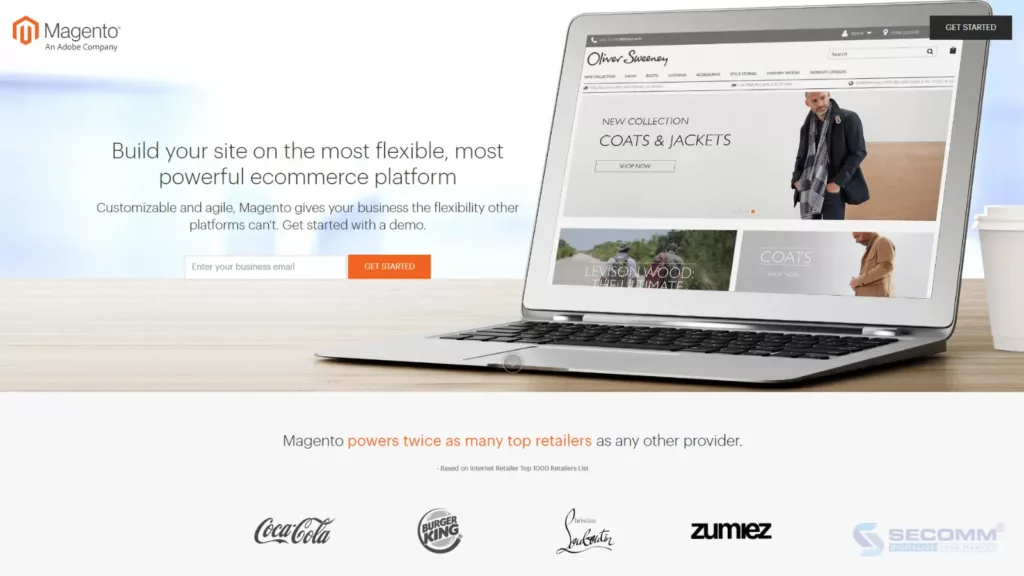
Implementing international eCommerce involves many challenges related to language, currency, and taxes, requiring websites to be optimally customized to provide the most engaging customer experience. This is why Magento is on this list.
Some standout features of Magento that support international commerce include:
Advantages
Disadvantages:
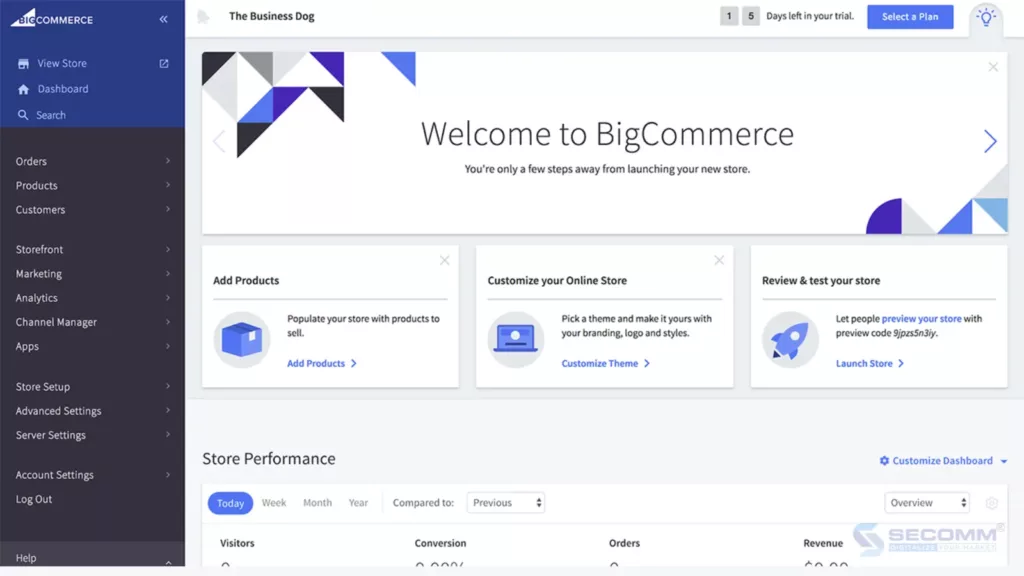
Similar to Shopify, BigCommerce is also a SaaS eCommerce platform that provides international eCommerce solutions. The platform offers features and tools to help businesses expand their operations in the international market simply and effectively.
Some standout features of BigCommerce supporting international eCommerce include:
Advantages:
Disadvantages:
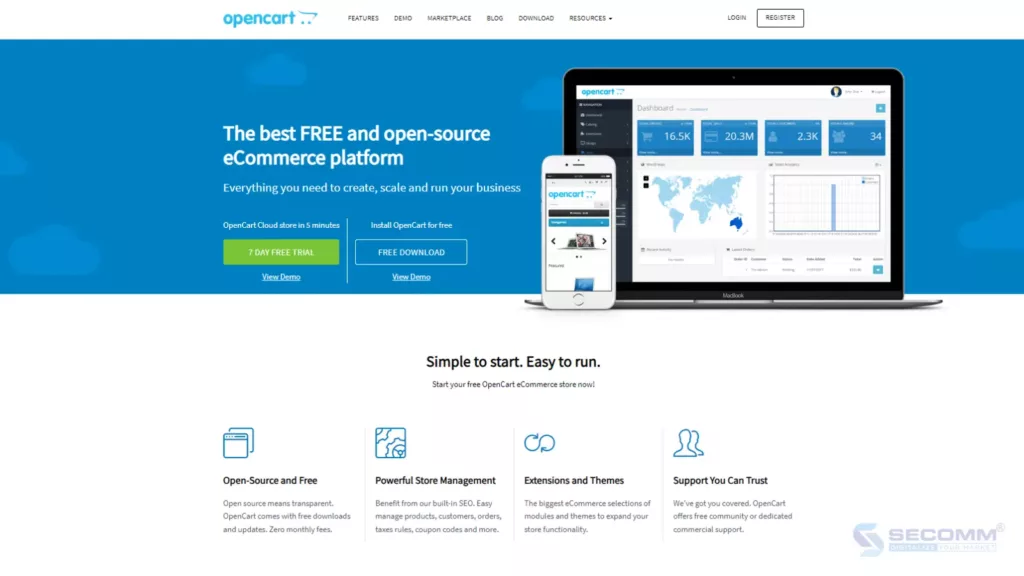
Similar to Magento, OpenCart is a popular open-source eCommerce platform used for international eCommerce implementation. This platform offers many useful features and tools, allowing businesses to better serve global customers.
Some standout features of OpenCart supporting international eCommerce include:
Advantages:
Disadvantages:
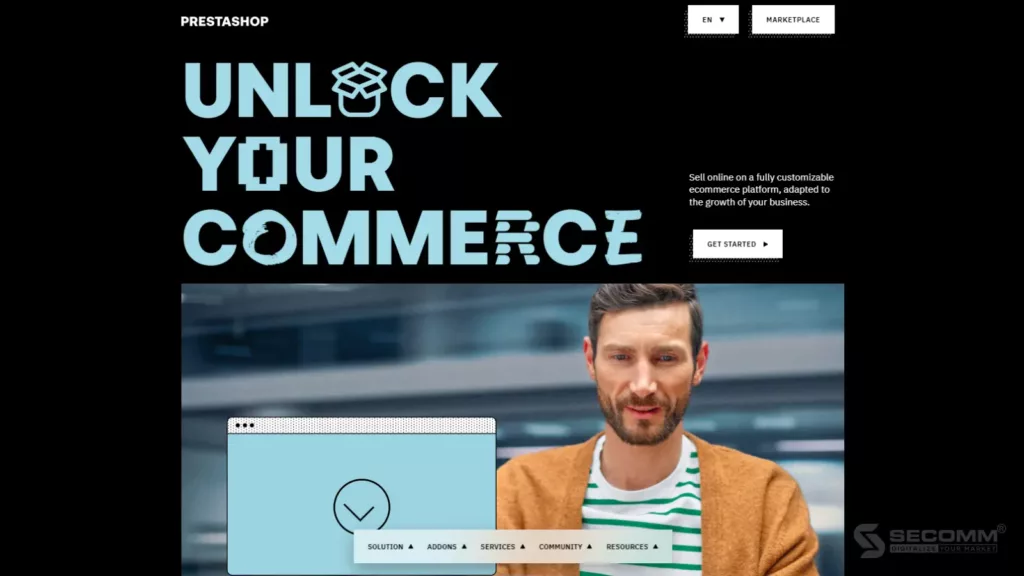
Another widely used open-source eCommerce platform for international e-commerce implementation is PrestaShop. With excellent customization and scalability, as well as outstanding tools and features, PrestaShop is the perfect choice for businesses looking to expand globally.
Some standout features of PrestaShop supporting international eCommerce include:
Advantages:
Disadvantages:
The Bottom Line
The above provides an overview of the top 5 platforms for implementing international eCommerce, each with its advantages and disadvantages. Depending on the scale, budget, and technical requirements, businesses can choose the most suitable platform for themselves.
Regardless of the choice, investing in a robust and flexible eCommerce platform will help businesses effectively reach international markets, increase sales, and expand their scale.
Need advice on implementing international eCommerce? Contact SECOMM today!
 152
152
 1,969
1,969
 0
0
 1
1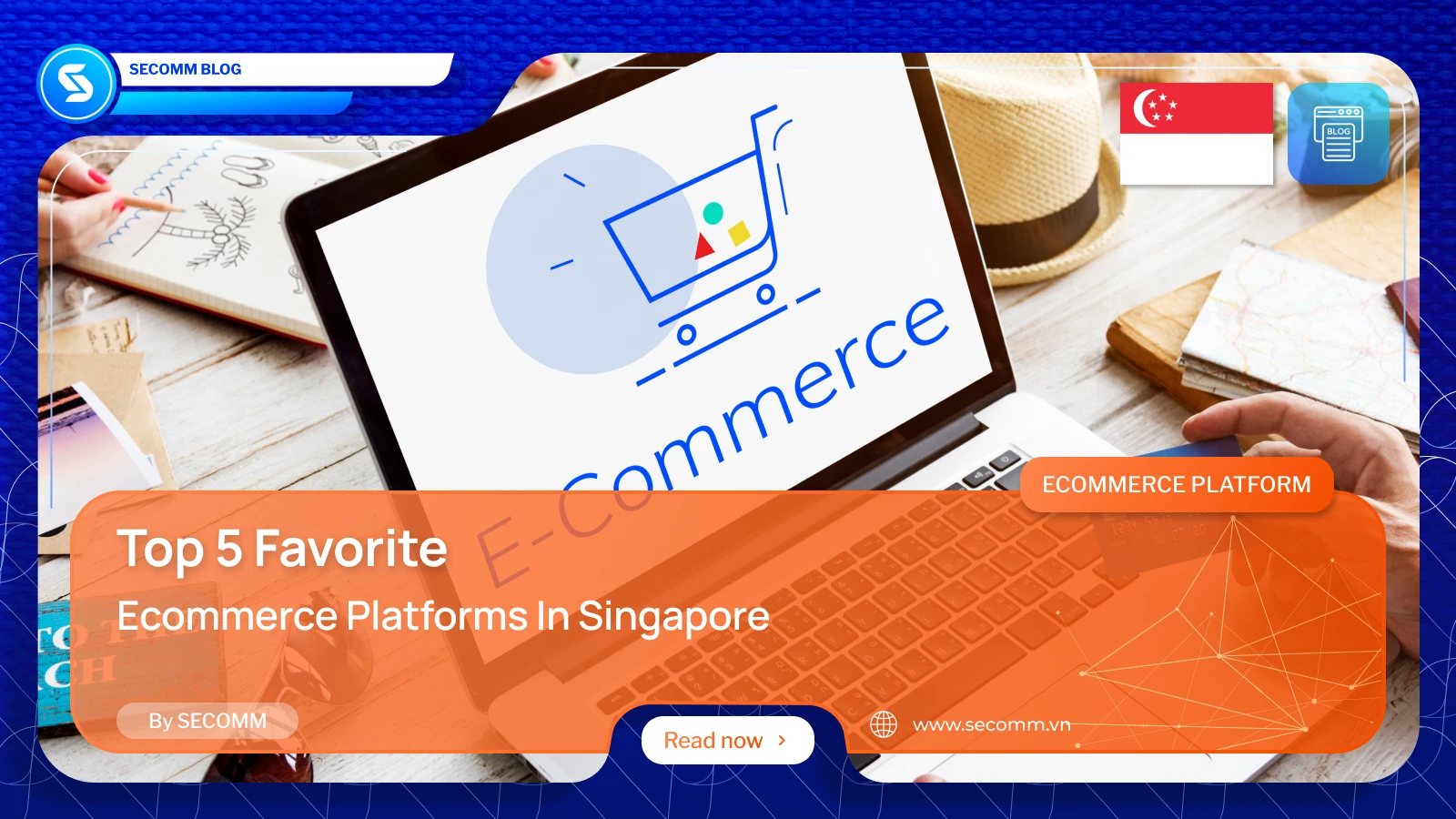
eCommerce in Singapore is continuously evolving with the emergence of new technological solutions. As a result, the options for eCommerce platforms are becoming increasingly abundant and diverse. This presents both opportunities and challenges for every merchant, as selecting the right platform to build an eCommerce website is a crucial first step.
Here are the five most commonly used eCommerce platforms in the Lion City.

Shopify is a popular SaaS eCommerce platform with over 4.8 million active websites. In Australia alone, over 8 thousands live stores are operating on the Shopify platform.
Recently, the premium version of Shopify, ‘Plus,’ has garnered attention from businesses across various sectors in Singapore. These merchants may have previously deployed different eCommerce platforms and later switched to Shopify Plus to seek a superior solution. Some merchants initially launched websites with standard Shopify packages and later upgraded to ‘Plus’ to optimize their operations.
Key features:
Pros:
Cons:
Shopify Pricing

Magento is a globally popular open-source platform, and its prevalence extends to Australia as well. According to BuiltWith, there are currently about 661 e-commerce websites operating on the Magento platform in the Lion Island.
With its high flexibility, merchants can effortlessly tailor features and scale the system according to their unique business requirements.
Presently, Magento provides two versions: Open Source (Free) and Adobe Commerce (Paid).
Key features:
Pros:
Cons:
Pricing:
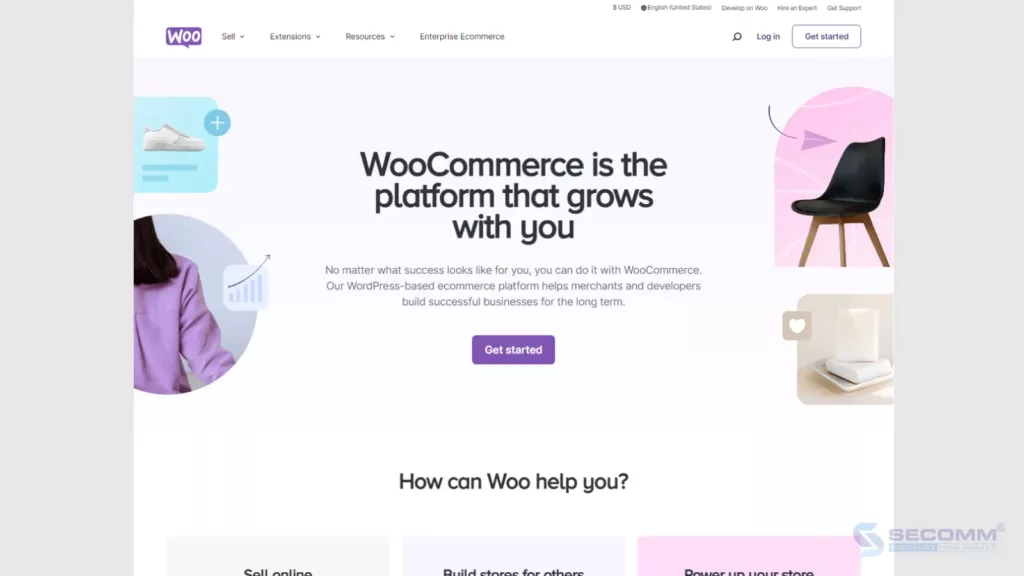
WooCommerce, a free and open-source WordPress plugin, enables brands to integrate eCommerce functionality into their existing WordPress websites. With just a few clicks, the WooCommerce plugin helps convert a standard WordPress site into a fully-featured eCommerce platform, complete with essential features and easy customization. At the time of writing, there are over 13,000 WooCommerce eCommerce websites operating effectively in Singapore.
Key features:
Pros:
Cons:
Pricing: Free to use. However, some integrations with other plugins may incur charges.
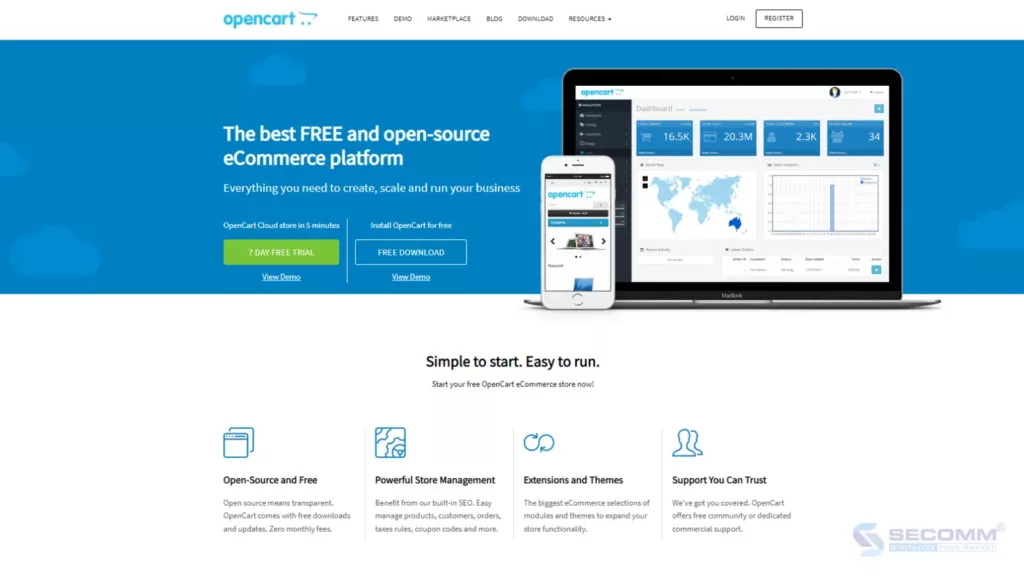
OpenCart is a globally popular open-source eCommerce platform, powering over 900 thousand active websites worldwide. In Singapore, it has gained popularity with more than 1,600 live OpenCart sites, establishing itself as a favored open-source platform in the country, following Magento.
Founded by Daniel Kerr in 1998, OpenCart operates as open-source software, utilizing the PHP programming language. It currently offers two versions: Free (Free-to-use version) and Cloud Store (Paid version).
Key features:
Pros:
Cons:
Pricing:
Free for the Free version. For the Cloud Store version, the specific costs are as follows: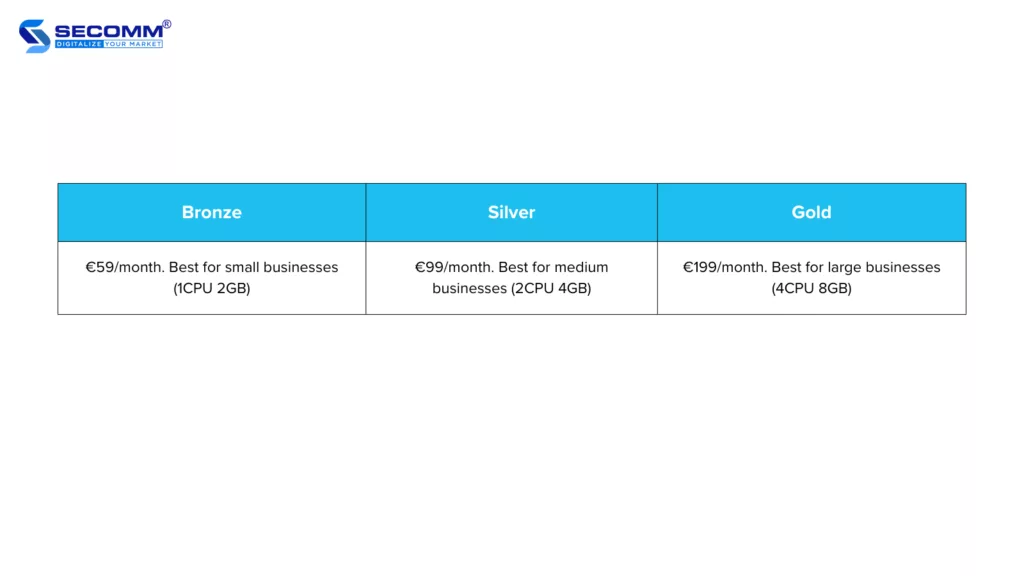
The ‘Cloud Store’ version pricing plan

Another open-source platform that is equally popular in Singapore is PrestaShop, with over 270 eCommerce websites currently in operation. The strength of PrestaShop lies in its flexibility and high customization capabilities, allowing users to easily adjust functionalities and interfaces to meet their specific needs. Additionally, with a vibrant developer community and thousands of available modules and themes, PrestaShop not only provides a comprehensive eCommerce solution but also continuous support to ensure that websites run smoothly and efficiently.
Key features:
Pros:
Cons:
Pricing: Free to use, but charges apply for complex requirements
These are the five popular eCommerce platforms in Singapore that many merchants choose to build their eCommerce websites. Depending on specific implementation needs, businesses can consider the most suitable platform.
Need more advice? Contact SECOMM today!
 2
2
 2,015
2,015
 0
0
 1
1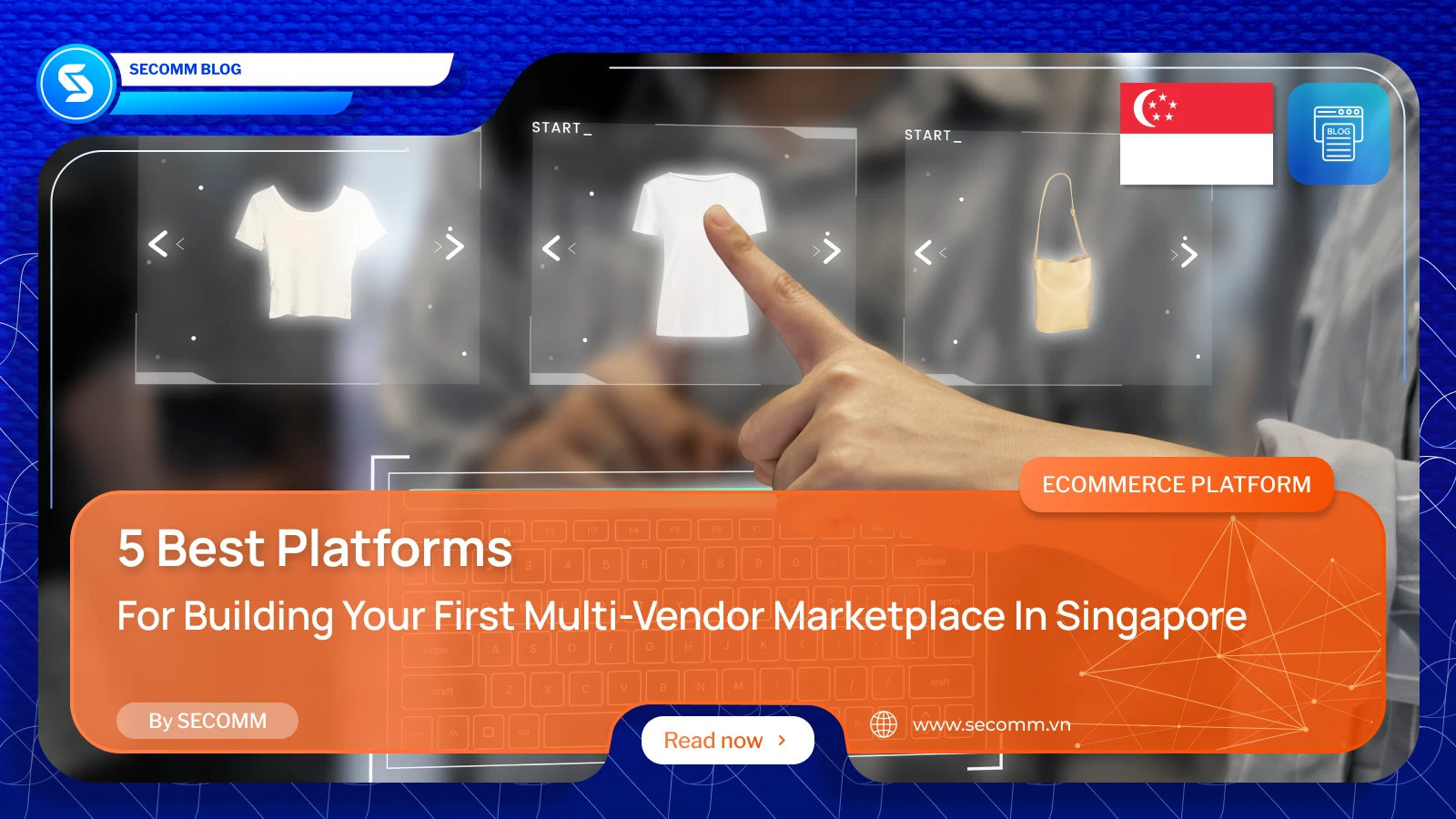
Shopping on multi-vendor marketplaces has become an essential part of modern life, particularly in Singapore, one of the busiest commercial hubs in Asia. As such, building and efficiently managing an eCommerce marketplace is crucial for businesses. However, selecting the right platform can be challenging. This article will introduce the five most reliable platforms that many businesses in Singapore use to build their own.
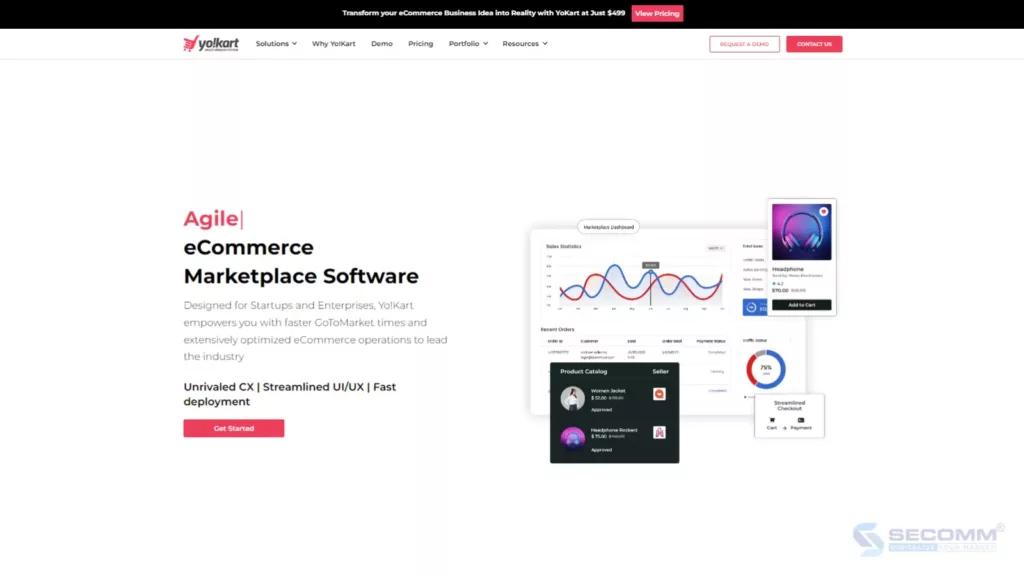
Yo!Kart is a leading self-hosted eCommerce solution that businesses can consider for building a custom multi-vendor marketplace. Designed to be user-friendly, Yo!Kart allows businesses to have full control, customization, and flexible scalability to manage and operate their eCommerce platform more effectively.
Key features:
Pros:
Pros:
Price: Starting from $1099/year. However, costs may vary based on specific requirements.
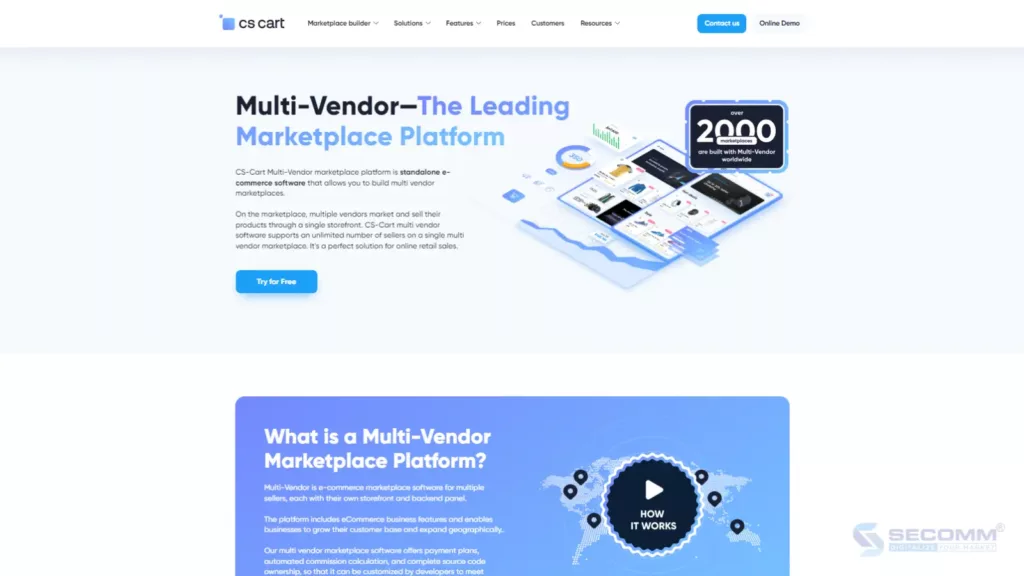
CS-Cart Multi-Vendor is known as a specialized platforms for building multi-vendor marketplaces with robust customization and scalability. With over 26 integrated languages and numerous unique features, this platform is an all-in-one solution suitable for various industries and deployment needsneeds.
Key features:
Pros:
Cons:
Price: Pricing may vary depending on specific needs
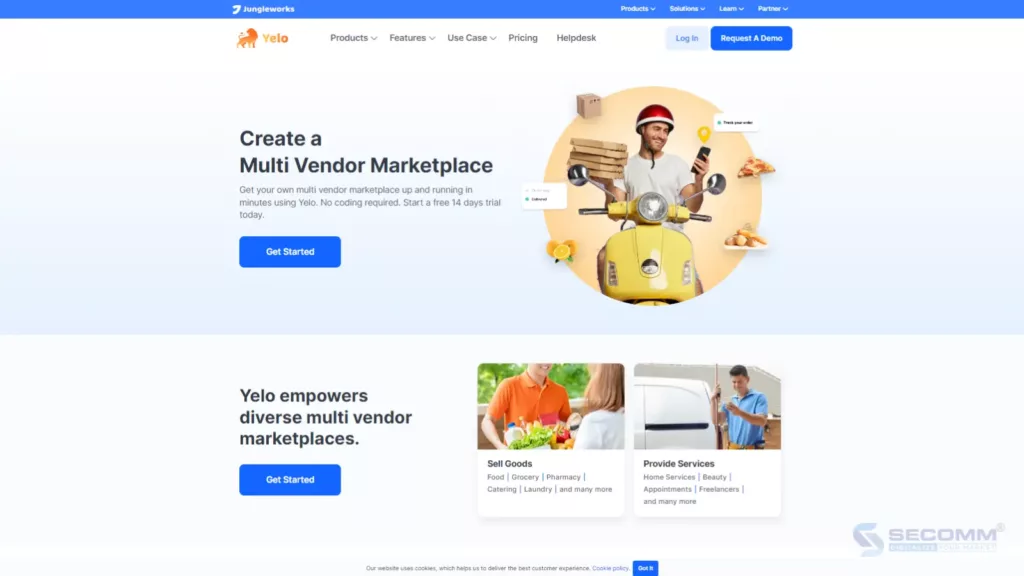
Yelo is flexible multi-vendor marketplace designed to help businesses of all sizes easily create and manage their online store. With Yelo, businesses can quickly build custom eCommerce marketplaces equipped with comprehensive features for administrators, sellers, and buyers.
Key features:
Pros:
Cons:
Giá: Costs start at $12/month
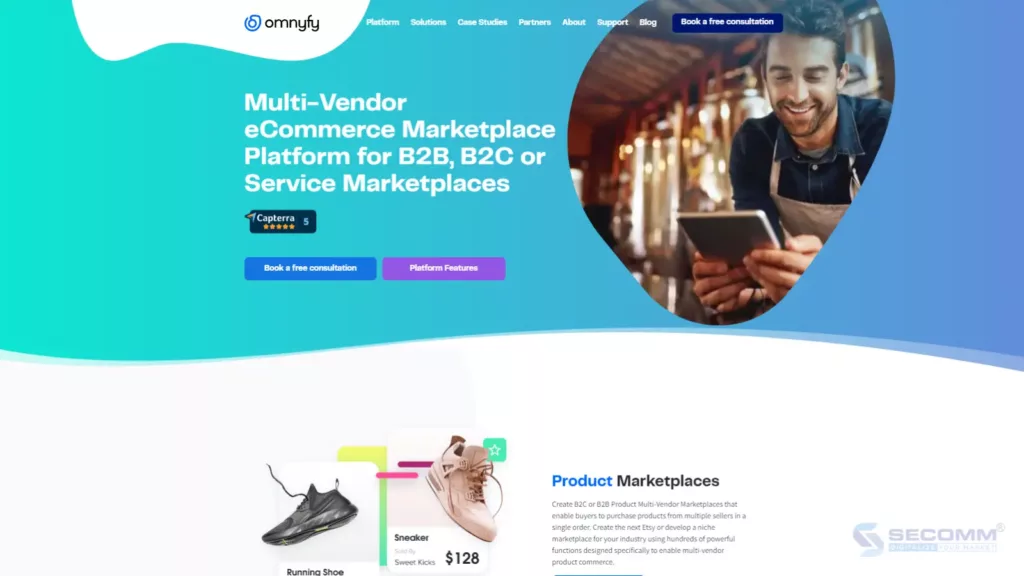
Omnyfy is a powerful multi-vendor marketplace designed to meet the needs of both B2B and B2C businesses. With its multi-channel management support and flexible integrations. Omnyfy enables businesses to create a comprehensive eCommerce ecosystem, from product management to customer service.
Key features:
Pros:
Cons:
Price: Pricing may vary depending on specific needs
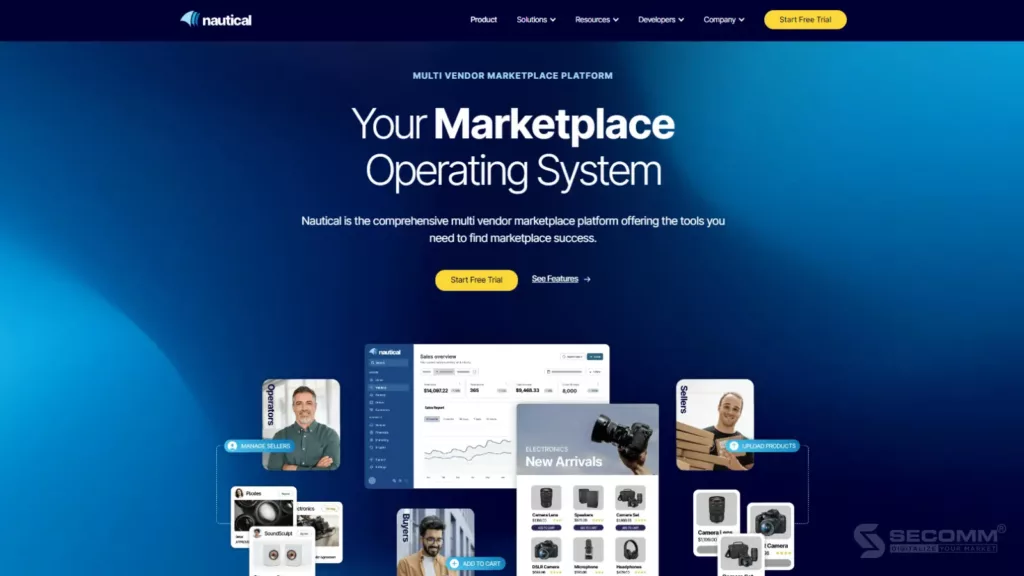
Nautical Commerce is favored by businesses in Singapore for providing a range of comprehensive solutions to make managing and operating multi-vendor marketplaces easier. With Nautical Commerce, businesses can leverage the latest technologies to improve business efficiency and enhance user experience.
Key features:
Pros:
Cons:
Price: Pricing may vary depending on specific needs but 14-day free trial available
Final Words
Here are 10 popular and reliable multi-vendor marketplace platforms widely deployed in Singapore. From Yo!Kart, CS-Cart Multi-Vendor, Yelo to Omnyfy and Nautical Commerce, each platform has its own pros and cons, suitable for different needs.
Need advice on deploying an eCommerce marketplace? Contact SECOMM today!
 2
2
 1,795
1,795
 0
0
 1
1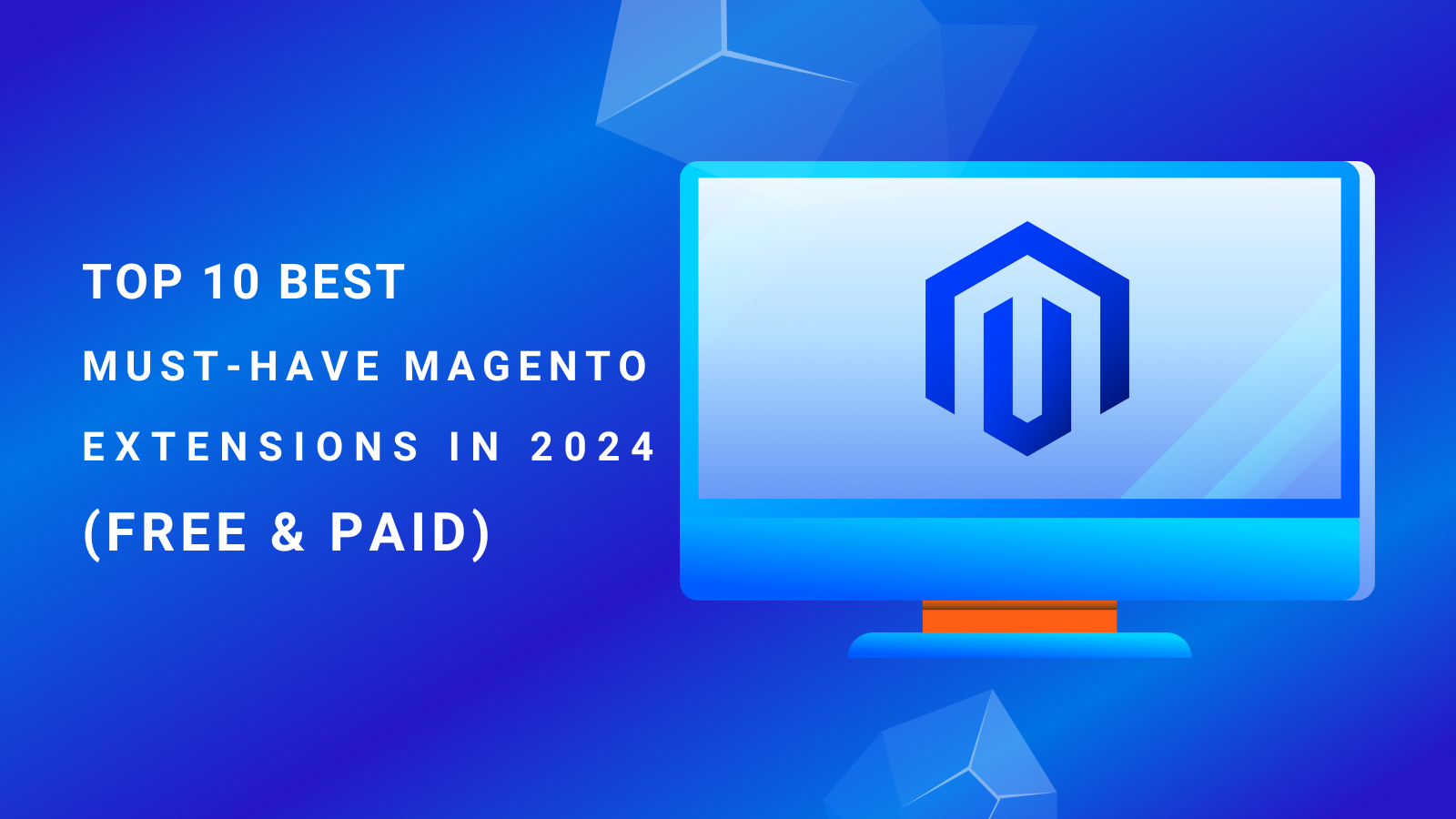
Using Magento extensions isn’t just a trend; it’s a critical factor for the success of an eCommerce website. With the ever-growing market, delivering an optimized online shopping experience has become a must for attracting and retaining customers.
In this context, integrating best-suited Magento extensions into the website system will enhance performance, streamline management, and enrich customer engagement. Let’s explore the top 10 Magento extensions worth integrating to ensure your eCommerce website stands strong amidst fierce competition.
Before delving into the list of top Magento extensions, let’s gain a deeper understanding of this concept. Magento extensions are simply additional software integrated into the Magento platform to extend the functionality and capabilities of Magento websites. These extensions can provide new features, enhance user experience, optimize management, and upgrade core functions such as marketing, payments, shipping, and more.
These extensions are developed by the Magento community, including software development companies and eCommerce service providers. Most of them are available in both free and paid versions. While the free versions typically offer basic features, the paid versions often include advanced features and deeper support services.
Choosing the right Magento extensions is a crucial part of building and managing a successful eCommerce website on the Magento platform. Let’s explore four benefits that using Magento extensions brings:
Extensions help expand the functionality of Magento websites by adding new features and capabilities that the core system doesn’t provide. For example, businesses can integrate advanced search features to make it easier for customers to find products, add filters for customers to sort products based on various criteria, or integrate social features to encourage sharing and interaction on social media. As a result, Magento websites can offer a more engaging shopping experience, retaining and attracting more customers.
One of the significant challenges of managing eCommerce websites in general and Magento websites in particular is efficiently managing inventory, orders, and customer information. Magento extensions provide smart inventory management tools, user-friendly order management interfaces, and integration with customer relationship management (CRM) systems. Thus, businesses can save time and effort in managing daily business operations and focus on more critical development goals.
eCommerce websites are not just places for online shopping but also forums where customers can interact with each other and with the brand. Magento extensions offer interaction features such as product review and rating systems, loyalty points programs for loyal customers, and CRM software, helping businesses create a rich and engaging online shopping space.
Lastly, using Magento extensions helps improve business performance by enhancing conversion rates, increasing sales revenue, and optimizing marketing strategies. Thanks to the flexibility and diversity of these extensions, businesses can customize and adjust their business strategies to meet market needs and achieve sustainable growth.
At the time of writing, the Magento platform offers over 4000 eCommerce extensions across a range of functions including marketing, payment processing, shipping, reporting, and analytics. Here are the top 10 most powerful extensions to consider adding to your Magento website:
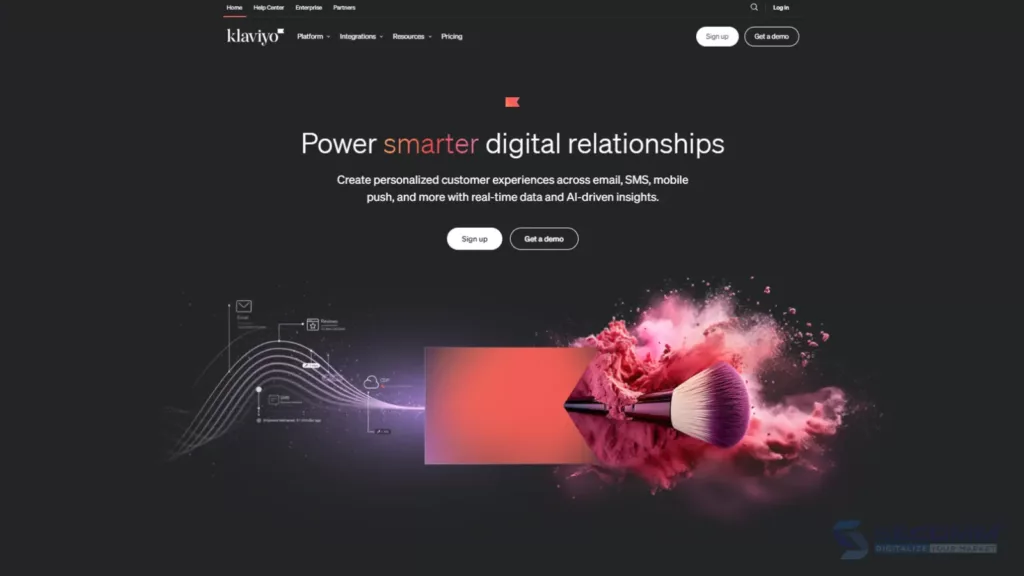
Klaviyo is a powerful tool for email and SMS marketing. With Klaviyo, businesses can create custom and automated email campaigns based on customer behavior, track performance, and interactions to optimize conversion rates and establish closer customer relationships.
Key features:
Pricing:
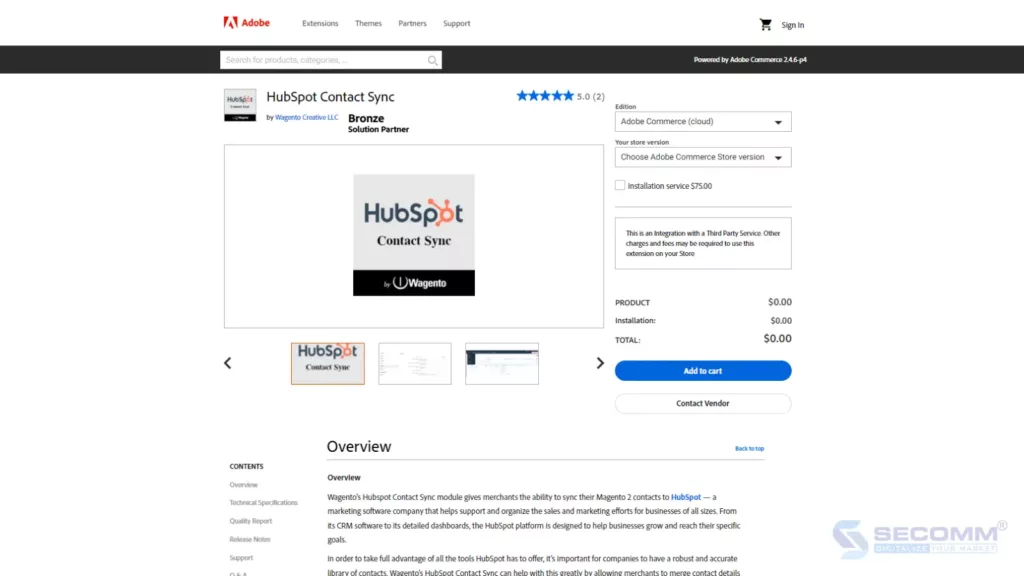
This extension integrates Magento with HubSpot CRM, allowing businesses to automatically synchronize customer information between the two platforms. This facilitates more efficient tracking and management of customer information and enables optimized marketing campaigns.
Key features:
Pricing: Free to use
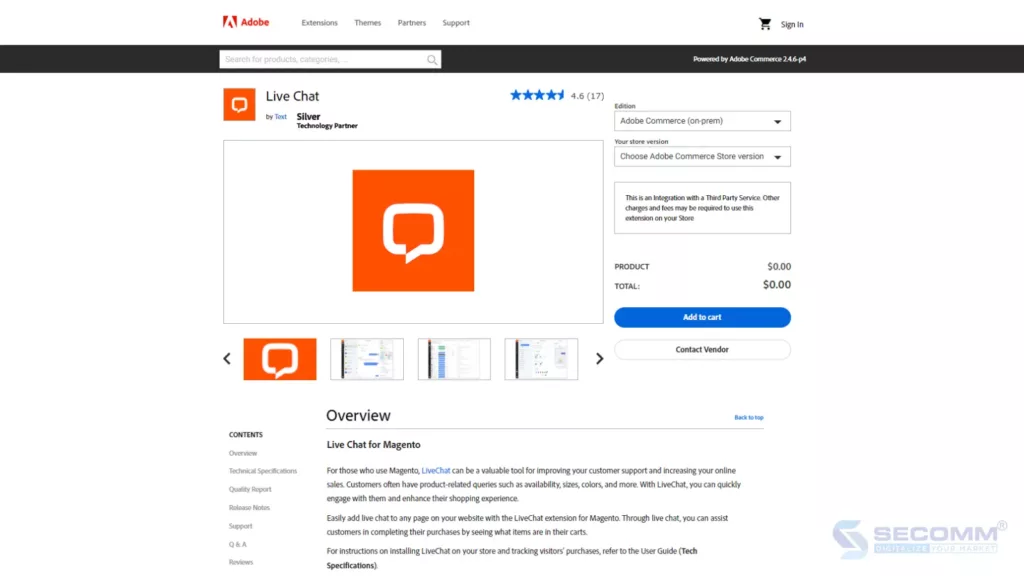
LiveChat is a powerful online customer care solution for Magento. LiveChat helps businesses enhance interaction and provide quick and professional support. This helps businesses improve the shopping experience for customers and increase conversion rates.
Key features:
Pricing:
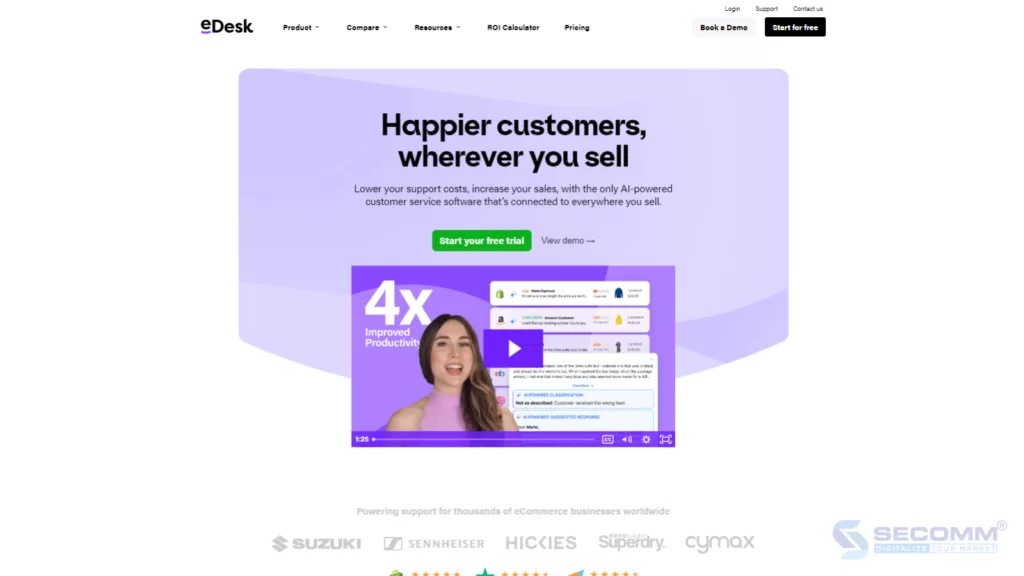
eDesk is a preferred centralized customer service and support management platform by many Magento businesses. This tool helps efficiently manage and respond to customer inquiries in an automated manner. This improves the efficiency of customer service teams and enhances customer satisfaction.
Key features:
Pricing:
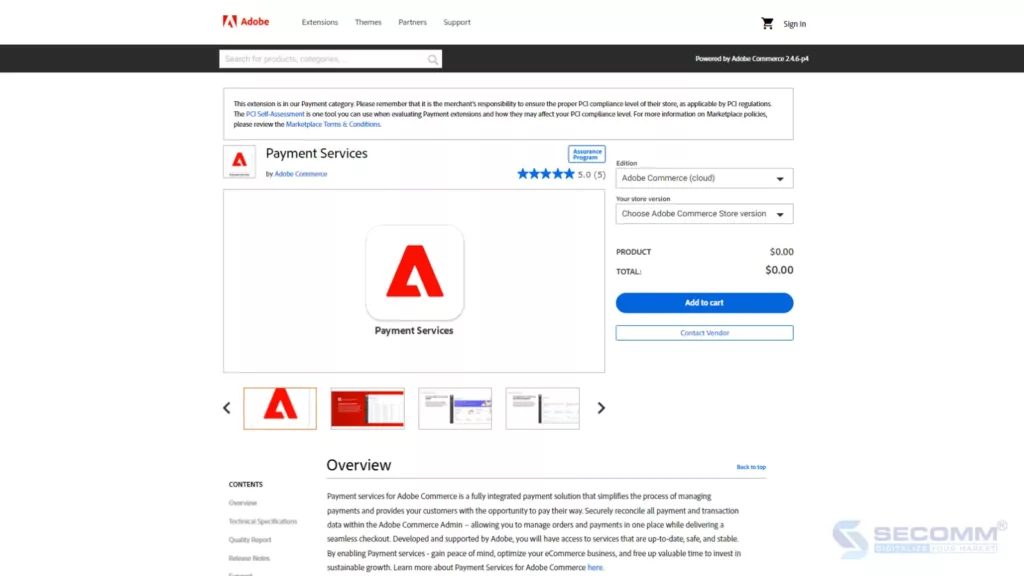
This is an Adobe Commerce extension that simplifies the payment process for businesses and allows customers to pay for orders the way they prefer. This extension ensures security for payment data and transactions, allowing admins to manage orders and payments in one central location while still providing a seamless payment experience.
Key features:
Pricing: Free to use
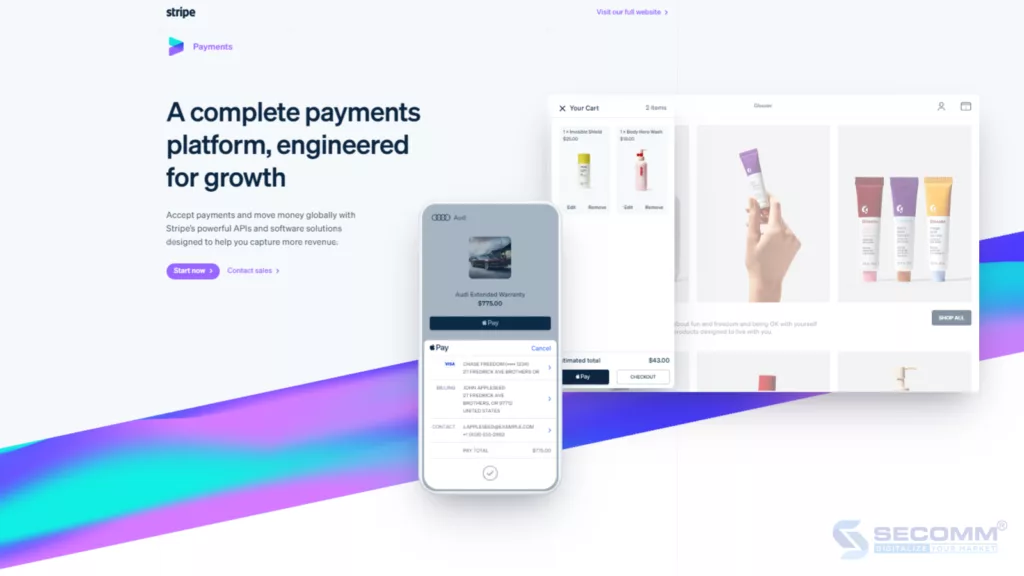
Stripe Payments is a prominent extension of the Magento platform, allowing for easy and secure online payment integration via Stripe, one of the leading payment gateways in the market. Stripe enables businesses to accept various forms of payment, providing convenience and flexibility for both customers and businesses.
Key features:
Pricing:
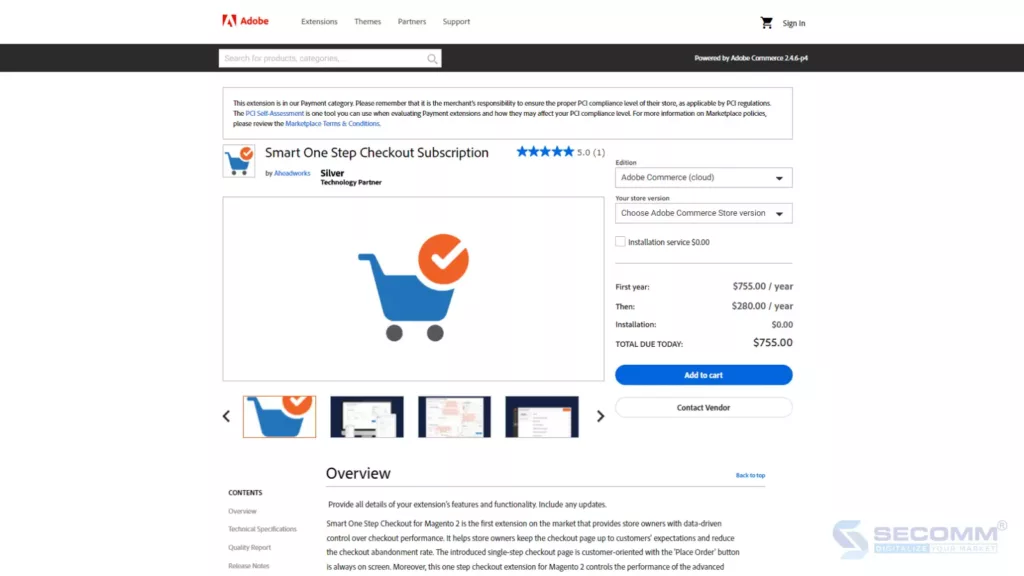
This extension provides a quick and convenient payment experience for customers, helping to reduce the time and steps required to complete an order. This contributes to increasing order completion rates and reducing cart abandonment rates.
Key features:
Price:
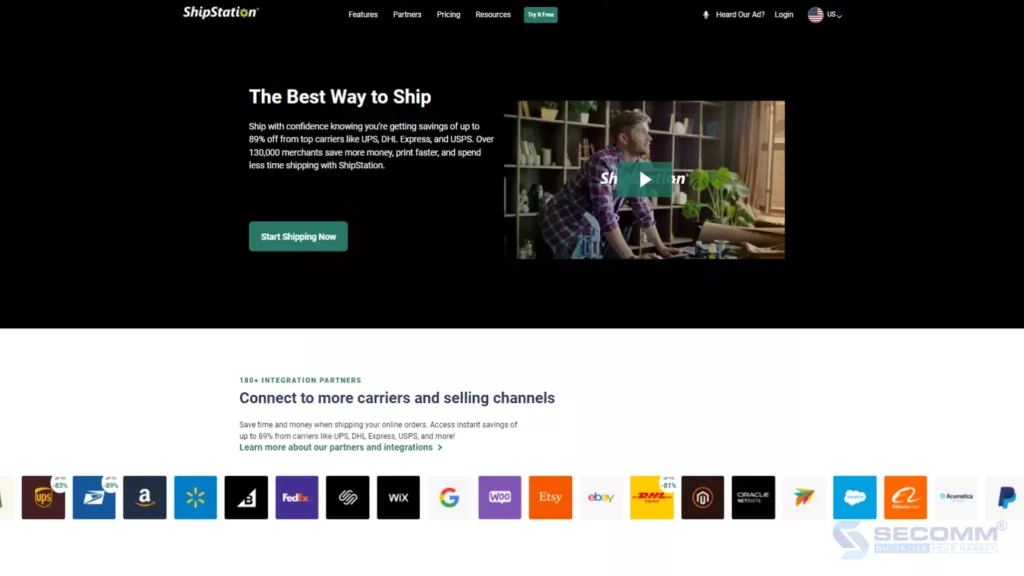
ShipStation is an integrated shipping platform that helps businesses easily manage and ship orders from various sources. By automatically integrating with leading carriers, businesses can save time and effort in processing and shipping orders.
Key features:
Pricing:
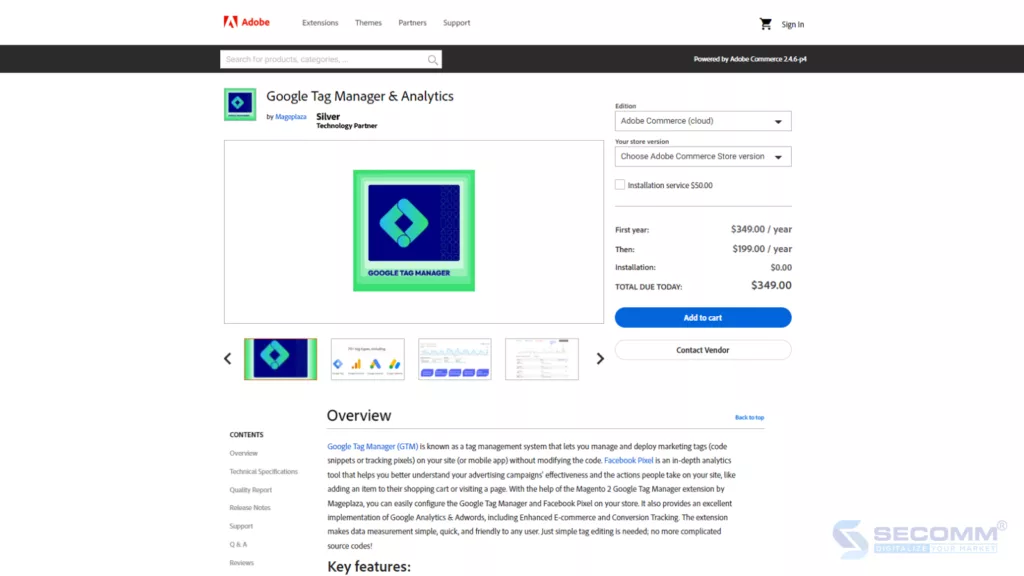
One of the noteworthy Magento extensions to consider integrating is Google Tag Manager & Analytics. This is a Google management and analytics tool that seamlessly integrates with the Magento website system, allowing businesses to track and analyze customer behavior on the website more effectively. With this extension, businesses can easily manage tags and track the performance of marketing campaigns.
Key features:
Pricing:
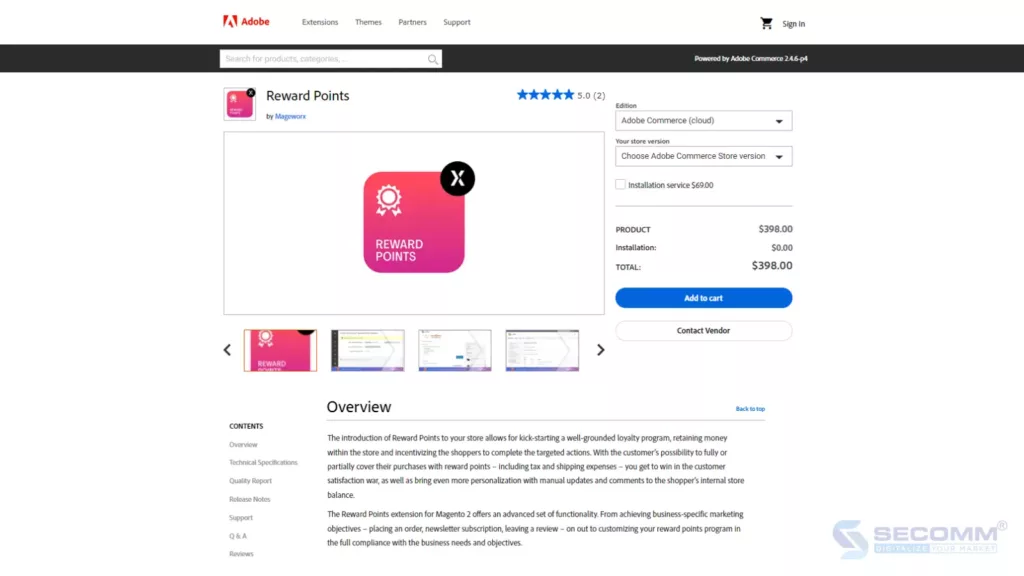
This extension allows businesses to create attractive reward point programs on the Magento website. This contributes to encouraging customer loyalty and increasing conversion rates. By providing rewards for every shopping action, customers are incentivized to return and shop more frequently.
Key features:
Pricing:
Above are the 10 best Magento extensions, ranging from free options to paid solutions. Using extensions provides many opportunities to improve business performance and create the best shopping experience for customers.
Need advice on choosing the best-suited extensions for your Magento store? Contact SECOMM today!
 2
2
 2,198
2,198
 0
0
 1
1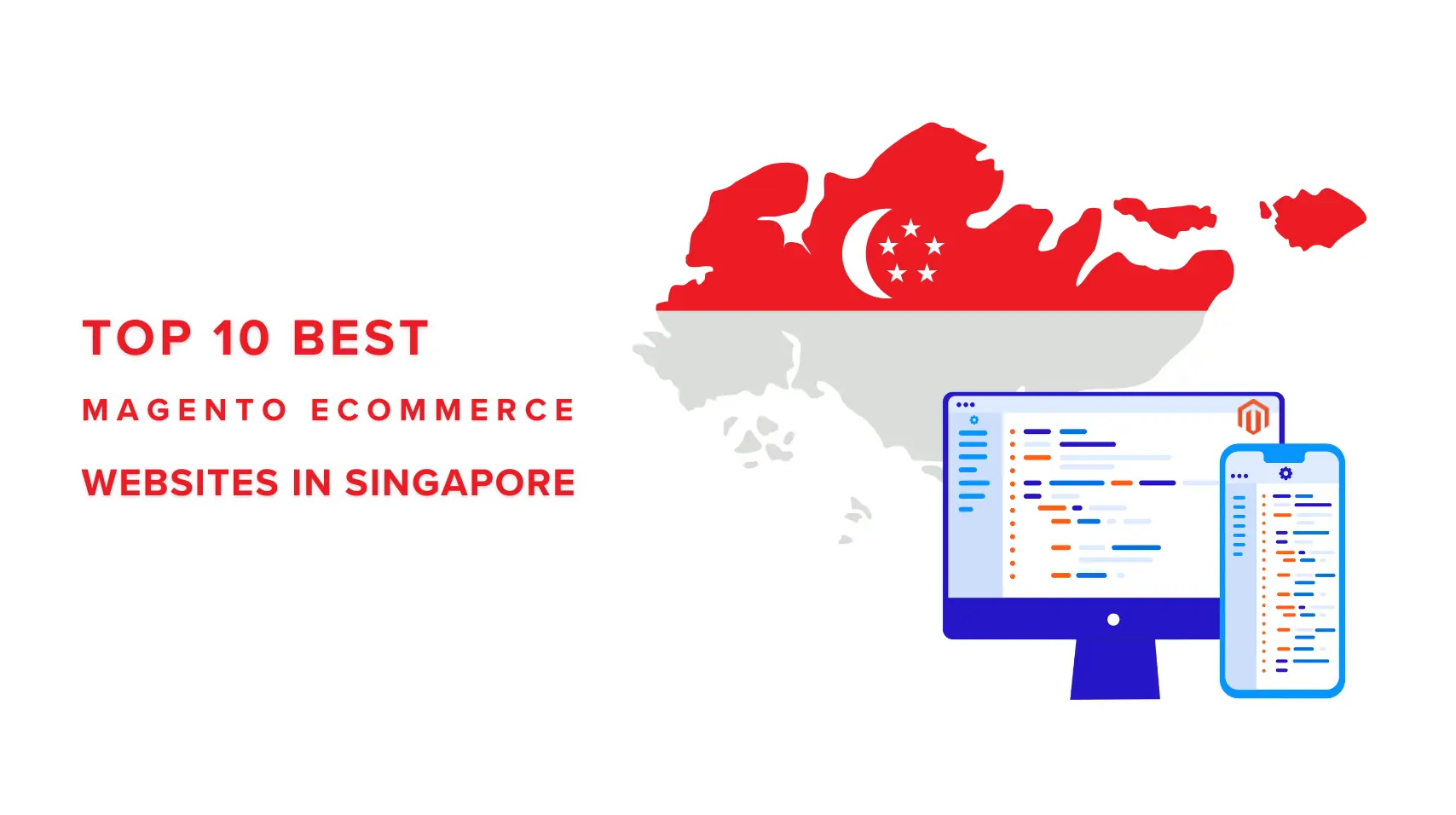
Building Magento eCommerce websites has become an undeniable trend in Singapore, where the blend of technology and creativity has brought unique and appealing shopping experiences to customers. According to Builtwith, there are currently over 600 live eCommerce websites on the Magento platform, and this list is predicted to continue expanding. This indicates that businesses in the Lion City have chosen Magento to create high-quality eCommerce websites, attracting customers and boosting sales.
In this article, let’s explore the top 10 Magento websites in Singapore that have leveraged the power of Magento to enhance the customer experience.

Dyson Singapore is not just an ordinary eCommerce website but also a destination for technology and premium design enthusiasts. With a range of products from vacuum cleaners to smart fans and hair dryers, Dyson continually innovates and enhances the quality of consumers’ lives.
Dyson’s Magento website is designed to provide an optimal shopping experience. From its bright and user-friendly interface to smart product search and categorization features, every detail is carefully crafted to ensure customers have the best online shopping experience. Additionally, Dyson is renowned for its excellent customer care service. From detailed product guidance to flexible return policies, they are committed to ensuring absolute satisfaction for every customer.
Website: https://www.dyson.com.sg/
Industry: Consumer Electronics
Traffic: 690,356/month
Ranking: #1,599 (Singapore) & #292,561 (Global)
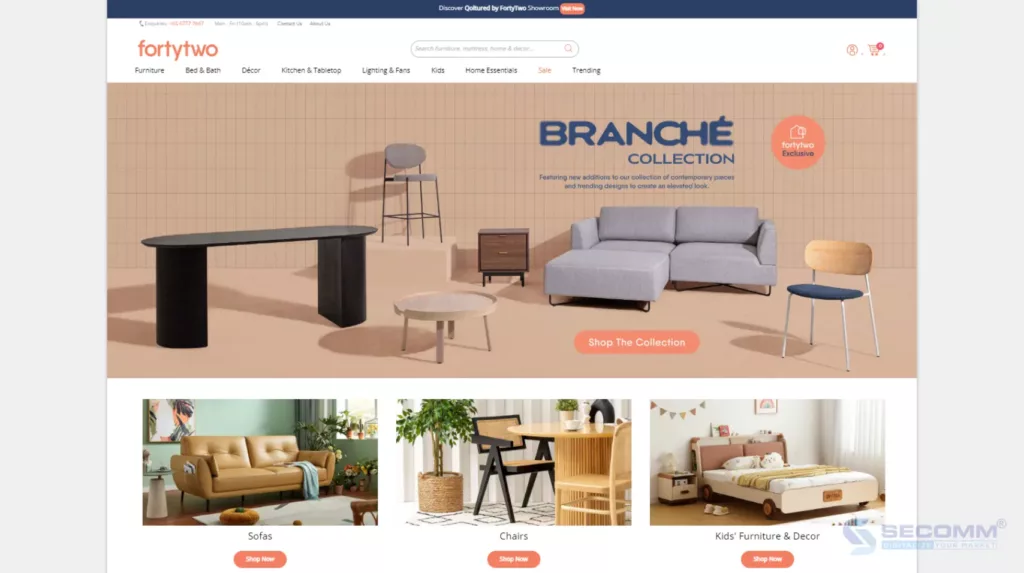
FortyTwo is one of the reputable destinations for household and interior decoration shopping in Singapore. With a diverse collection ranging from living room furniture, bedroom sets to household essentials, FortyTwo offers customers a convenient and varied online shopping experience.
FortyTwo’s eCommerce website is built on the Magento platform, focusing on creating a user-friendly interface. Not only does it display products clearly, but it also provides flexible product search and filtering features, making it easy for customers to find items that reflect their style and personal needs.
Website: https://www.fortytwo.sg/
Industry: Furniture
Traffic: 625,855/month
Ranking: #493 (Singapore) & #107,563 (Global)
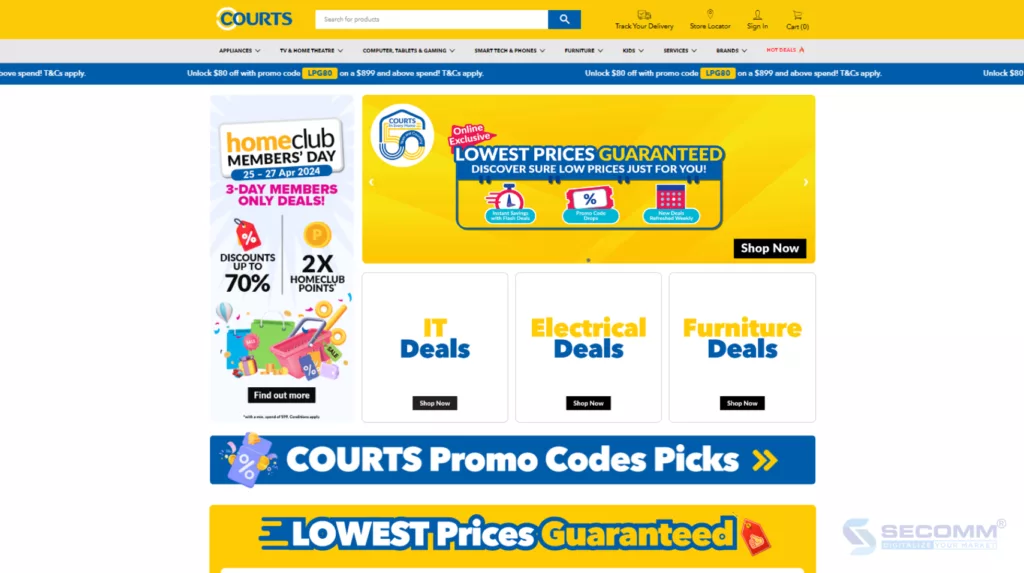
COURTS is known as the leading retailer in Singapore, specializing in a range of diverse products from furniture, electronics to household services. With over 14 stores across the island and a convenient e-commerce website, COURTS is the ideal destination for all shopping needs of Singaporean families.
COURTS’ Magento eCommerce website is designed and built to ensure an easy and comfortable online shopping experience. Through the Magento website, COURTS customers can easily search and select from a variety of high-quality products with flexible search and sorting features.
The brand stands out not only with its diverse products but also with its professional customer service. From shopping advice to delivery and installation services, they are committed to providing maximum satisfaction for every customer.
Website: https://www.courts.com.sg/
Industry: Consumer Electronics
Traffic: 510,240/month
Ranking: #502 (Singapore) & #105,498 (Global)
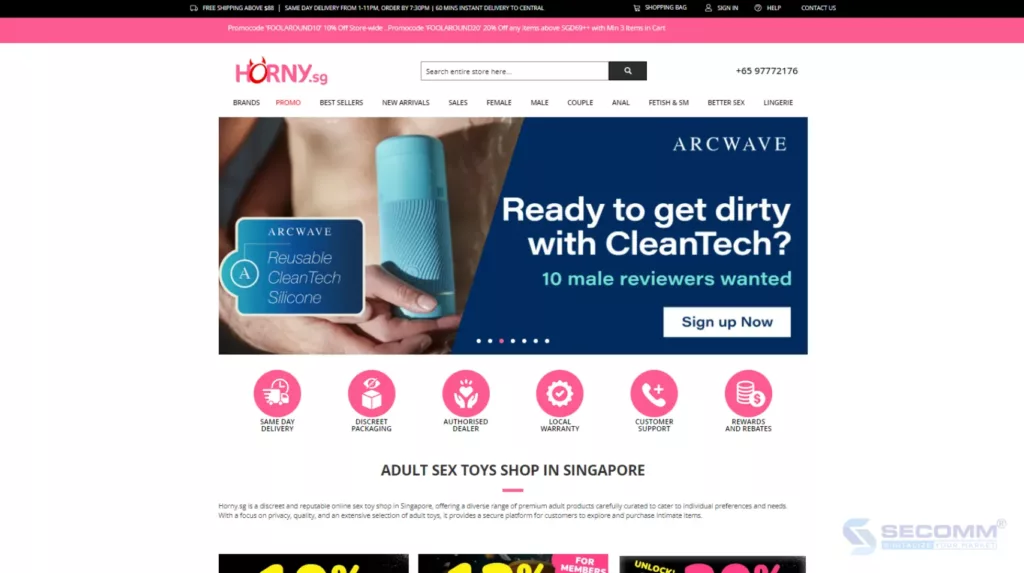
Horny is a unique eCommerce website based in Singapore, focusing on providing modern adult accessories. With a mission to help customers feel confident and satisfied in their romantic lives, Horny has created an enjoyable and convenient shopping experience through the Magento platform. Horny’s Magento eCommerce website is built with a focus on creating a reliable and user-friendly online shopping space. From attractive interface layouts to clear and detailed product displays, every detail is meticulously crafted to create the best shopping experience. Additionally, Horny stands out with the diversity of fashion and accessory products. Customers can easily find items that suit their individual needs.
Website: https://horny.sg/
Industry: Adult
Traffic: 482,417/month
Ranking: #1,133 (Singapore) & #193,753 (Global)
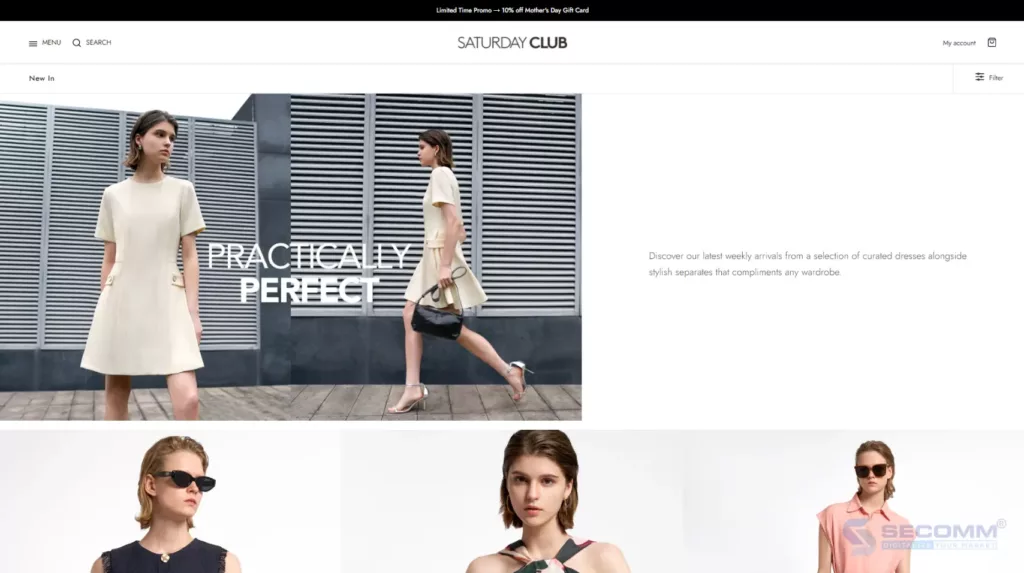
Saturday Club is not just a fashion brand but also an icon of confidence and freedom in women’s workwear fashion in Singapore. With a creative spirit and a mission to celebrate natural beauty, Saturday Club continuously brings fresh, stylish, and unique fashion collections.
Saturday Club uses Magento to develop its eCommerce website to provide customers with a smooth shopping experience with an easy-to-use interface. Customers can easily choose from a variety of products and the latest collections, with detailed information and clear images. Additionally, the brand stands out with attentive customer care service and fast and flexible delivery policies.
Website: https://sg.saturdayclub.com/
Industry: Fashion
Traffic: 406,335/month
Ranking: #2,115 (Singapore) & #240,670 (Global)
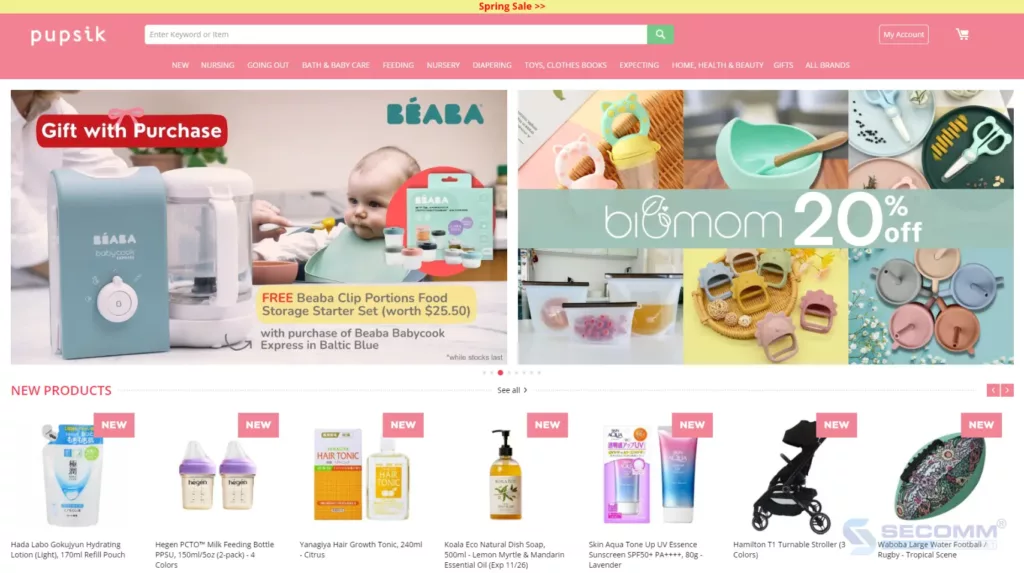
Pupsik is the go-to online shopping destination for parents in Singapore, where they can find everything they need for the care and nurturing of their children. With a humane mission and special attention to the needs of families, Pupsik is committed to providing a peaceful and convenient shopping experience.
Pupsik has built its Magento website to easily customize features and shopping experiences. From smart search features to product filtering and optimized checkout pages, every detail is focused on ensuring shopping becomes easy and quick.
In particular, Pupsik is famous for the diversity and quality of products for children and mothers. From clothing, toys to everyday essentials and healthcare products, they ensure that all family needs are comprehensively met.
Website: https://pupsik.sg/
Industry: Childcare
Traffic: 264,148/month
Ranking: #3,684 (Singapore) & #677,191 (Global)

Cellarbration is the ideal destination in Singapore for wine and alcoholic beverage enthusiasts. This brand boasts an extensive collection of wines and alcoholic beverages from top brands worldwide.
Shopping on the eCommerce website is also efficiently optimized by Cellarbration through the power of the Magento platform. From search operations to product browsing and payment, everything is deeply customized to ensure customers have a more engaging shopping experience.
Not only prominent for the richness of products but also for professional and dedicated customer service. Cellarbration is committed to customer satisfaction by providing personalized support and diversifying payment options as well as delivery.
Website: https://cellarbration.com.sg/
Industry: Wine
Traffic: 125,878/month
Ranking#6,676 (Singapore) & #1,075,981 (Global)

In Singapore, the Wine Collection brand is a favorite destination for wine enthusiasts who want to explore premium wines from the most famous wine regions in the world. Wine Collection also offers customers a rich and diverse collection of wines.
The Wine Collection’s Magento website is customized to optimize the experience, allowing customers to search for wines by origin, grape variety, explore special collections, and choose preferred payment and delivery methods.
Not only does it provide a modern and engaging online shopping space, but Wine Collection also serves as a source of wine knowledge. Customers can find articles and detailed guides on how to choose and enjoy wine to better understand the art and science behind the delicate flavors.
Website: https://wineconnection.com.sg/
Industry: Wine
Traffic: 82,788/month
Ranking: #12,447 (Singapore) & #1,701,444 (Global)

Far East Flora is a brand specializing in providing plant products, fresh flowers, and decorations made from greenery. The Far East Flora Magento eCommerce website is built with a priority on customer experience through a user-friendly interface and deeply developed and customized features. Customers can search for plants by filtering by type, size, and make quick payments with just one page. Additionally, Far East Flora’s fast and reliable delivery service is highly rated by customers. The brand is committed to delivering quality products to customers’ hands safely and promptly, helping them decorate living spaces beautifully and meaningfully.
Website: https://fareastfloragarden.com/
Industry: Gardening
Traffic: 40,864/month
Ranking: #20,995 (Singapore) & #2,327,136
(Global)
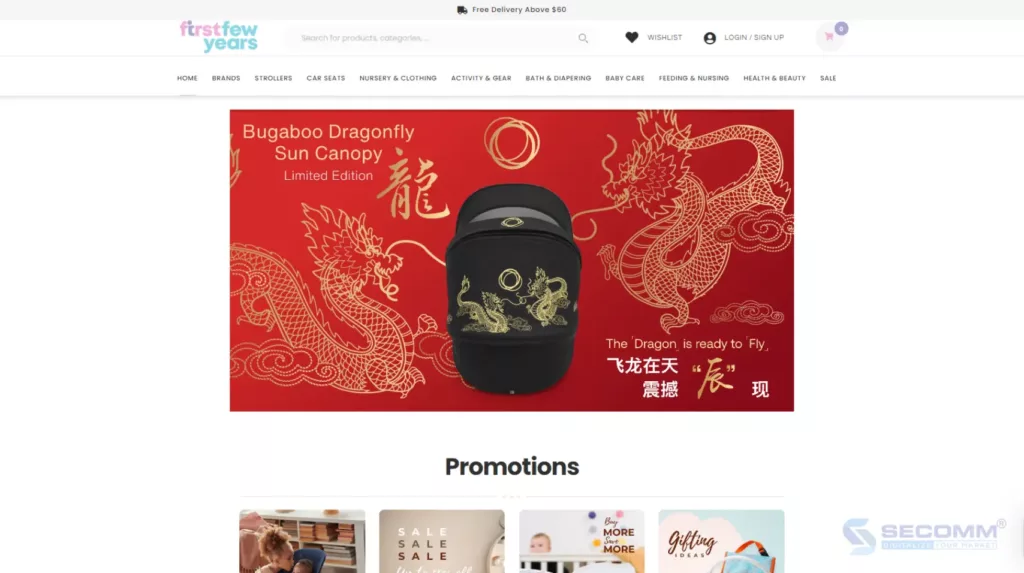
First Few Years is not just a store but also a loyal companion for parents in the journey of caring for their children from the early years. With a dedicated spirit and profound understanding of children’s needs, First Few Years provides a meaningful and trustworthy shopping experience.
The Magento website of this brand is not only a place for shopping but also an important source of information and support for parents. From advising on safe toy selection and development to sharing experiences in childcare, all information is conveyed sincerely and meticulously.
Website: https://firstfewyears.com.sg/
Industry: Childcare
Traffic: 10,245/month
Ranking: #86,167 (Singapore) & #7,519,723 (Global)
The Bottom Line
Above are 10 leading Magento eCommerce websites in Singapore, each providing customers with a unique and memorable shopping experience. From product diversity to professional customer service, each website has prioritized the mission of serving and satisfying customers.
Need more advice to build your first Magento website? Contact SECOMM today!
 2
2
 1,923
1,923
 0
0
 1
1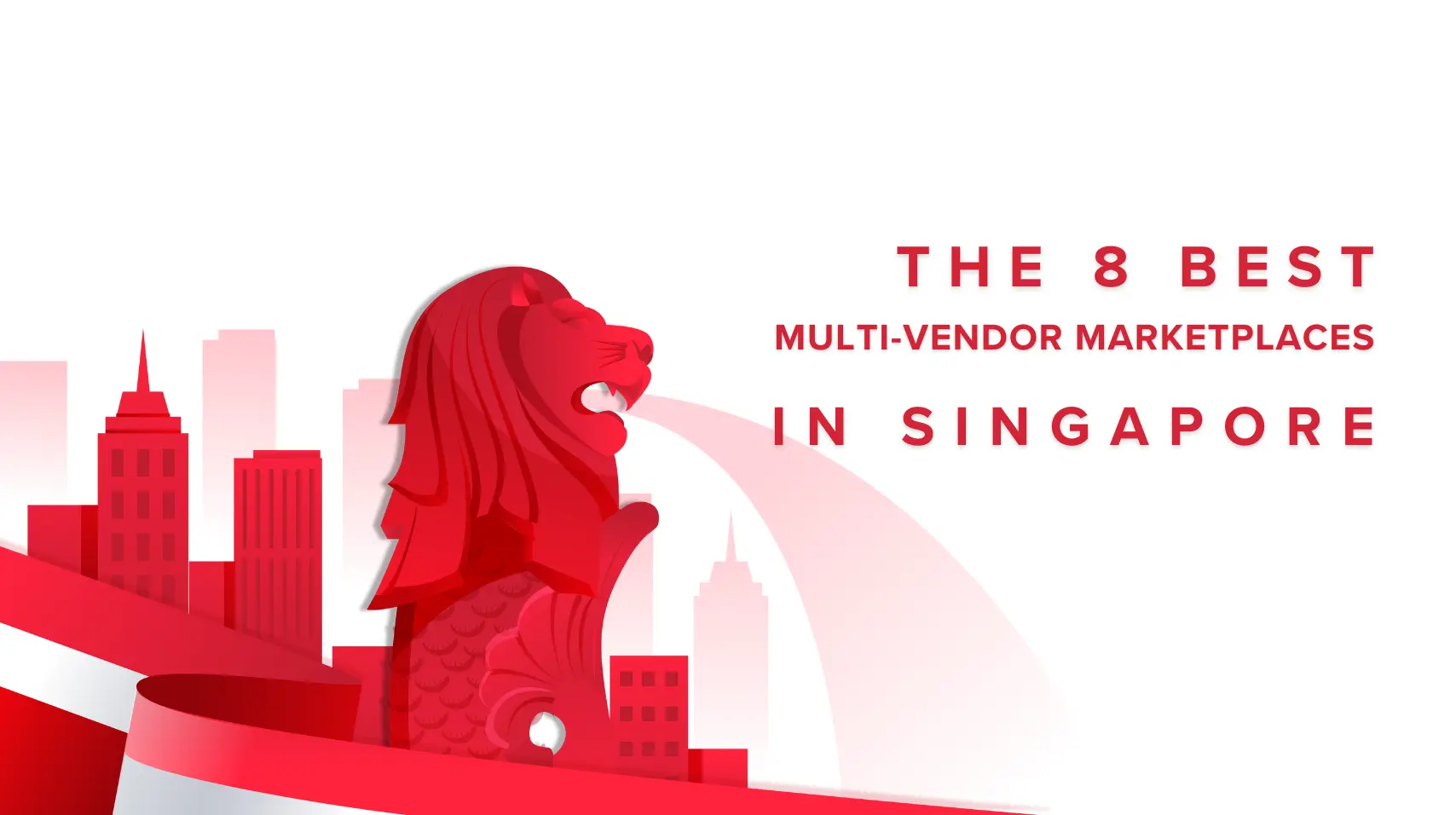
The Singapore multi-vendor marketplace market is booming, with stiff competition from Western giants like Amazon and eBay, as well as trusted local brands such as Shopee and Lazada. Statista reports that in 2023, the industry’s revenue reached $4.45 billion and is projected to hit $5 billion in 2024 and $8.2 billion by 2029. In this context, identifying and understanding the leading online marketplaces in Lion City is crucial for maximizing potential and opportunities in this rapidly evolving market.
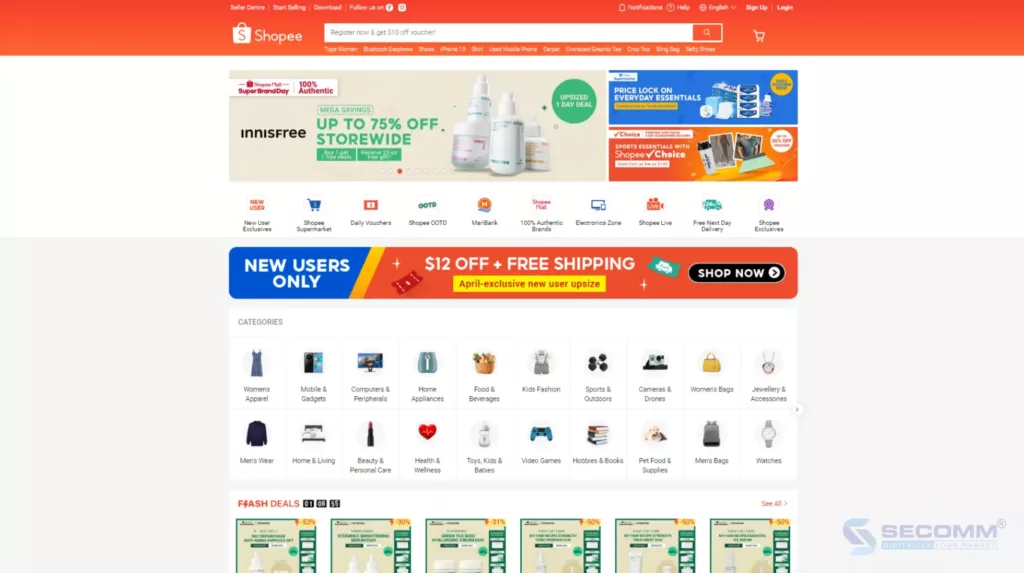
Shopee Singapore is one of the leading multi-vendor marketplaces not only in Singapore but also throughout the Southeast Asia region. The range of products available for purchase and sale on the Shopee platform is quite diverse, spanning from consumer goods to fashion, electronics, toys, and much more. Shopee Singapore is renowned not only for its convenience and flexibility in the online shopping process but also for its attractive promotional programs and fast delivery services. With its open and user-friendly business model, the eCommerce marketplace has become a popular destination for people looking for quality products at reasonable prices.
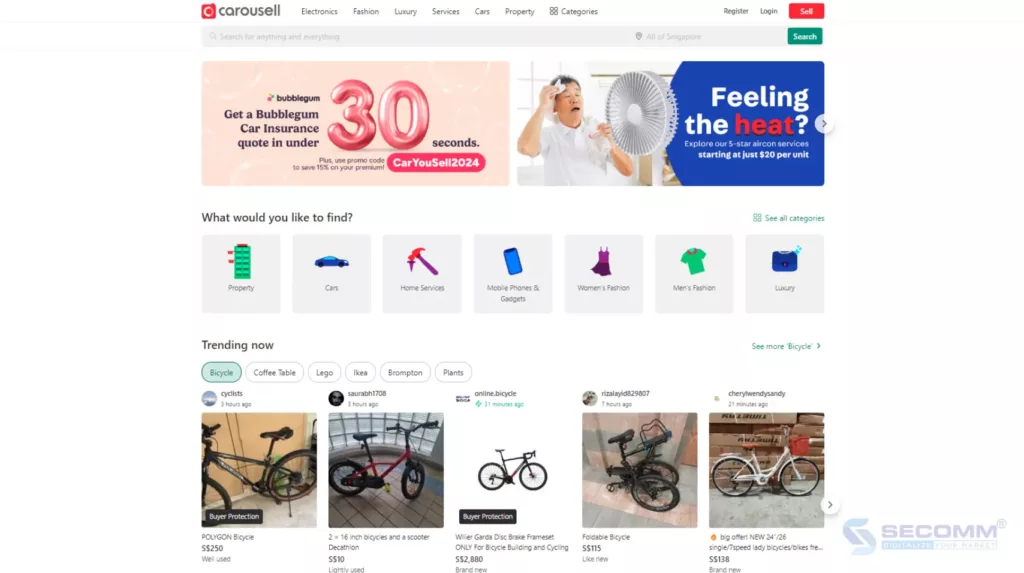
Carousell, a well-known online marketplace based in Singapore, offers a stylish and personalized online shopping experience. It specializes in enhancing the buying and selling process both on its website and mobile app. What makes Carousell stand out is its wide range of unique items available. Beyond just new products, Carousell also serves as an eCommerce marketplace for secondhand items, spanning from clothing and electronics to household goods. This creates an engaging shopping environment for those in search of one-of-a-kind items or looking to recycle goods.
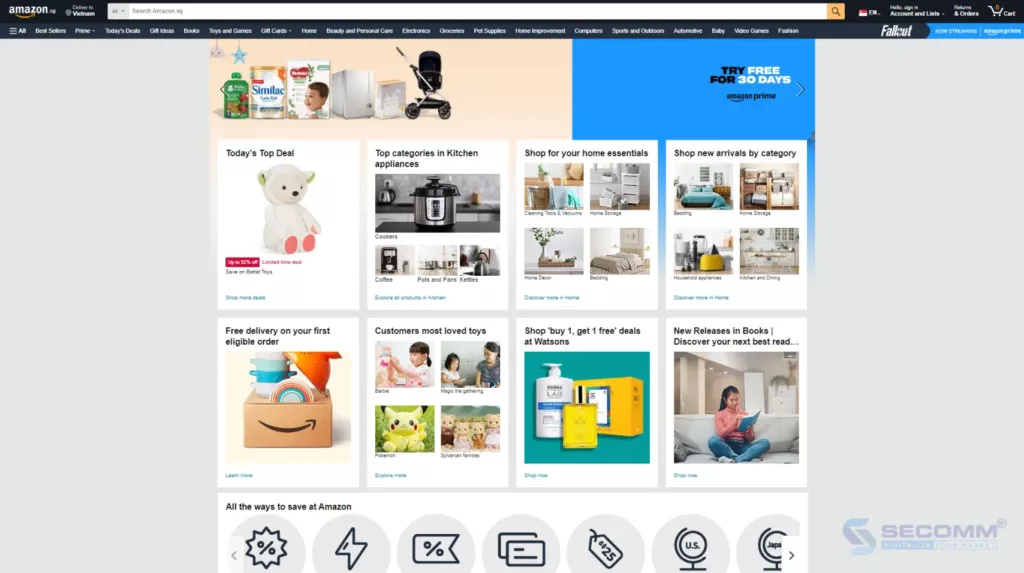
When expanding into the Singapore market, retail giant Amazon brought a top-notch and diverse online shopping experience to local customers. With an extensive array of products spanning from consumer electronics to books, fashion, household items, electronics, and cosmetics, Amazon serves as the preferred destination for customers seeking quality and variety.
A key strength of this multi-vendor marketplace lies in its reliable shipping infrastructure and customer service. With a widespread distribution network and efficient delivery services, Amazon ensures convenient and prompt product deliveries for buyers. Additionally, Amazon’s customer support service is highly regarded, as the company strives to address inquiries and issues from both sellers and buyers promptly and effectively.
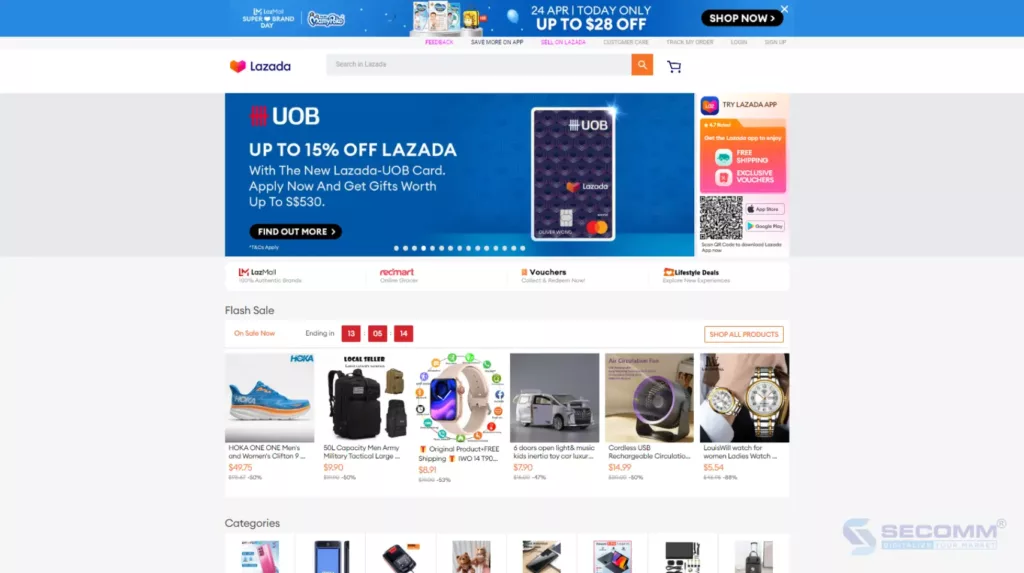
Lazada is one of the major players in the eCommerce world, winning over the trust of Singaporean consumers with its diverse range of services and products. Since being acquired by Alibaba, Lazada has experienced significant growth and strengthened its position in the Southeast Asian market. Today, Lazada serves not only as a platform for major brands but also as a gateway for small and medium-sized enterprises to enter the market effectively. Moreover, the online marketplace is renowned for its enticing promotional offers and swift delivery services. The incorporation of labels like “LazMall” and “LazGlobal” further simplifies the process for customers to discover and purchase quality products from brands worldwide.
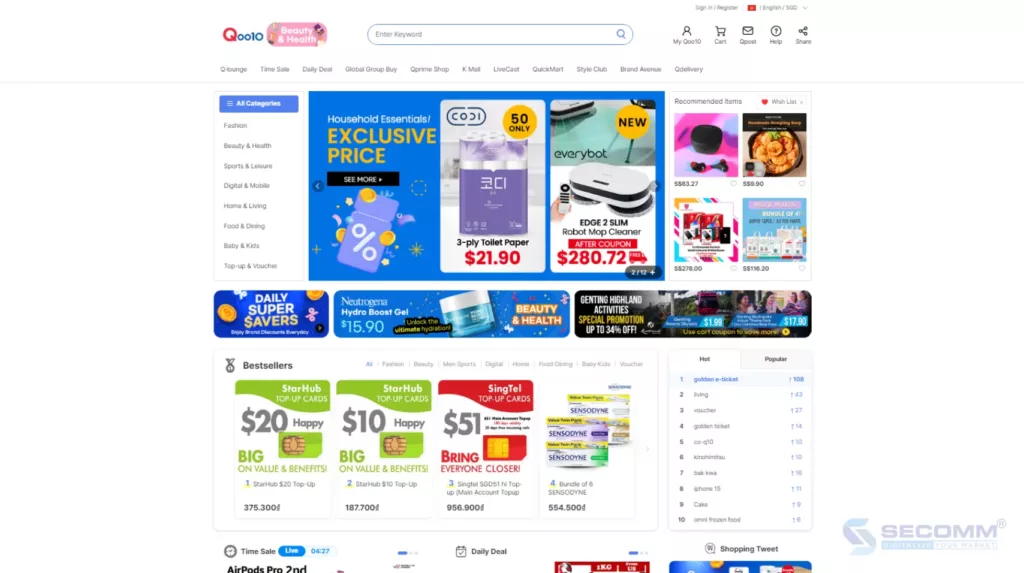
Qoo10, also known as Gmarket, stands as one of Singapore’s most popular and reliable eCommerce marketplaces. With its diverse range of online storefronts, Qoo10 offers users a stylish and varied online shopping experience.
A standout feature of Qoo10 is its emphasis on products from small and medium-sized retailers. Rather than focusing solely on major brands, Qoo10 provides a platform for small and medium enterprises to easily and effectively access the market. This creates a welcoming and diverse shopping environment where buyers can discover unique and high-quality products from smaller manufacturers and brands.
Moreover, the online marketplace is well-known for its appealing promotional programs and fast delivery services. The user rating and feedback system further bolsters trust and transparency in the online shopping process on this platform.
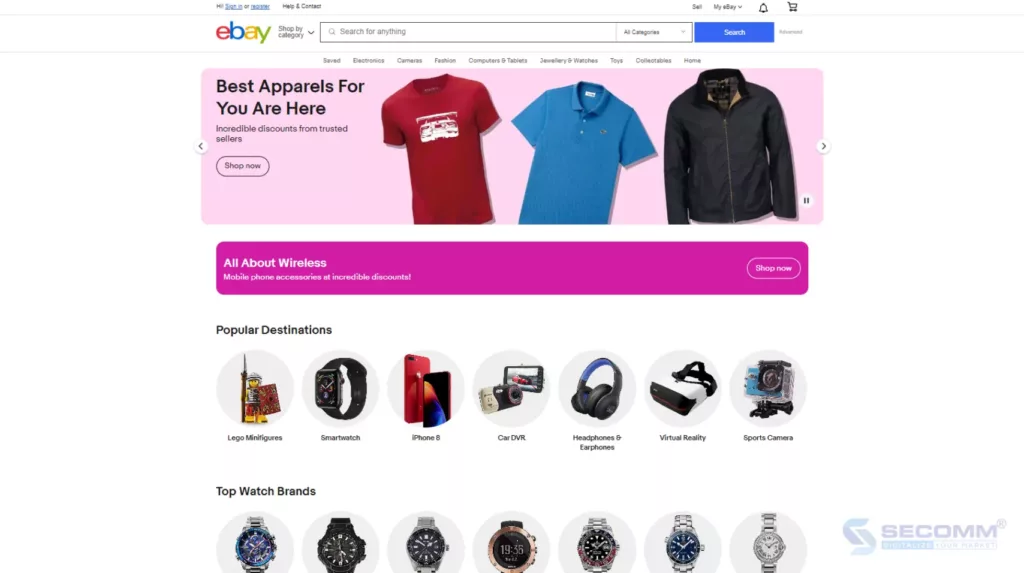
eBay is a well-established and trusted name in the global eCommerce landscape. It has won over Singaporean consumers with appealing and efficient online shopping experiences. eBay Singapore is renowned for its ability to connect buyers and sellers worldwide, creating a vast global online marketplace. With millions of items available for sale on the platform, ranging from brand-new to gently used products, customers can easily discover items that suit their needs and budgets.
Furthermore, the multi-vendor marketplace offers customers flexibility in payment and delivery options. Customers can opt for popular payment methods like PayPal or credit cards and also take advantage of international shipping services to have their purchases delivered directly to their doorstep.
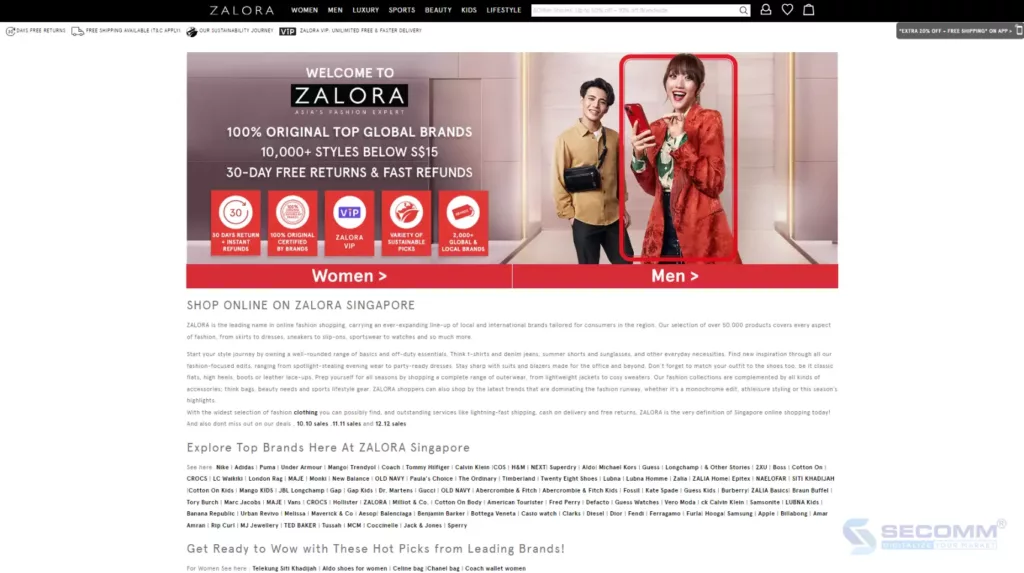
Zalora is a popular multi-vendor marketplace in Singapore, offering fashion and style products from both local and international brands. With its diverse array of items spanning from apparel, footwear, and accessories to jewelry and cosmetics, Zalora has become the go-to destination for fashion enthusiasts seeking to express their unique style. What sets Zalora apart is its dedicated focus on the fashion and style market, delivering users a flawless online shopping experience in this realm. Beyond just a platform for purchasing products from renowned brands, the eCommerce marketplace serves as a hub for individuals to explore and cultivate their style.
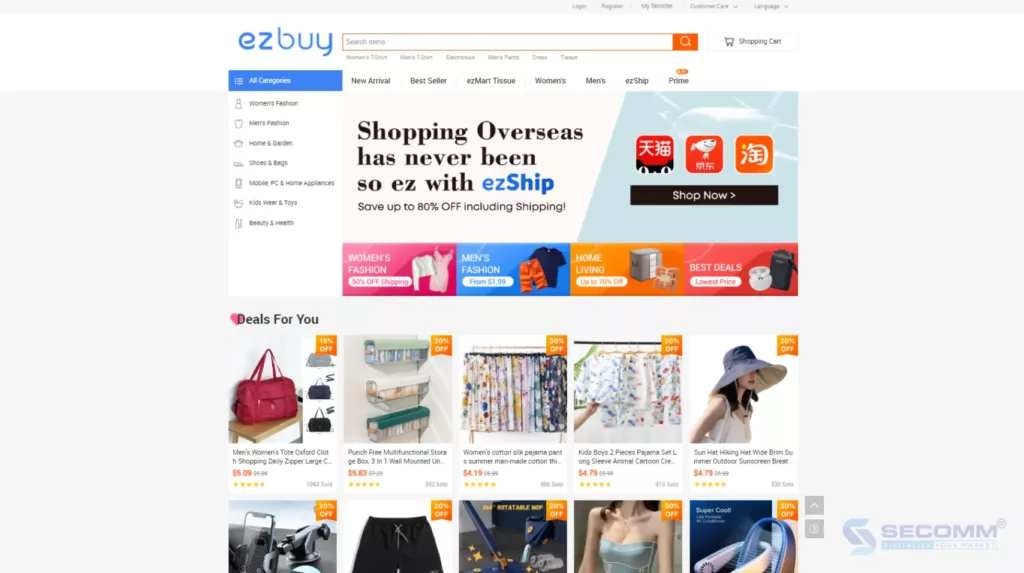
The online marketplace EZbuy is renowned for its convenient and cost-effective international shopping services. With EZbuy, customers can easily access and purchase hundreds of thousands of products from China, Korea, the US, and many other countries at reasonable prices with convenient shipping services.
Operating as an intermediary shopping model, the EZbuy eCommerce marketplace helps users circumvent complications related to import taxes, international shipping fees, and complex customs procedures. Instead of handling these procedures themselves, users can effortlessly shop for products from overseas through EZbuy and conveniently await delivery at home.
In summary, the Singapore eCommerce market is thriving with a variety of top-tier multi-vendor marketplaces. Each platform offers unique features and the best services to meet the shopping needs of customers. The success of these giants serves as motivation for many businesses to join and lays the groundwork for further development of the eCommerce market in Singapore in the future.
Need more advice for multi-vendor marketplace development? Contact SECOMM today!
 16
16
 3,518
3,518
 0
0
 10
10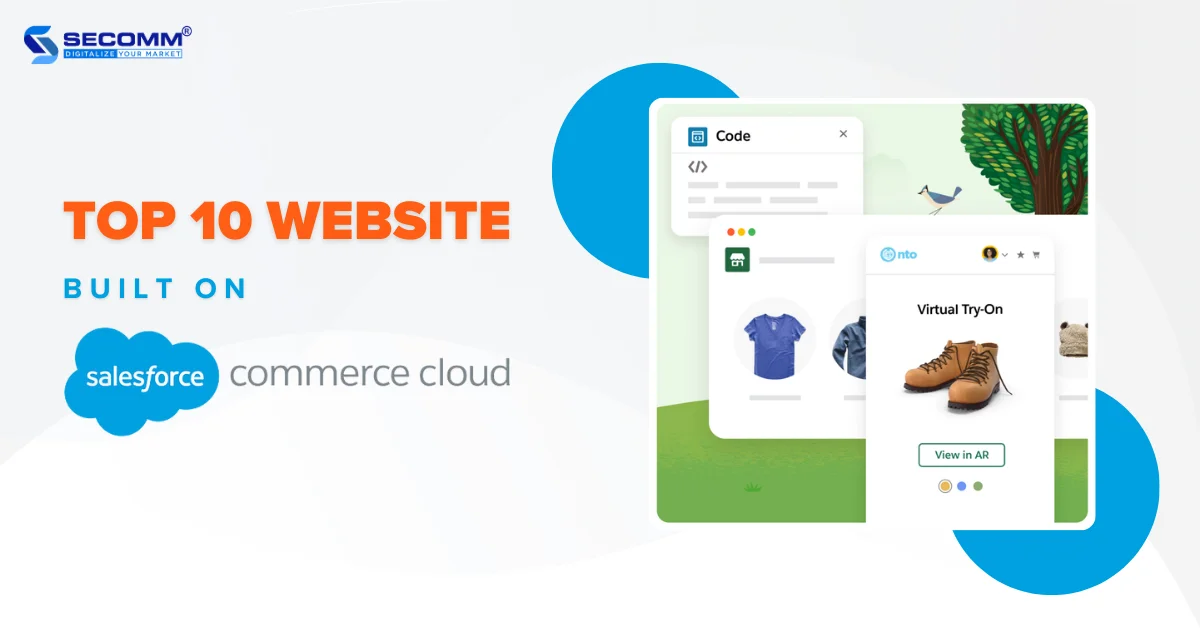
Salesforce Commerce Cloud is a scalable cloud-based eCommerce platform that enables brands to meet growing business demands.
Below is a list of the top 10 websites currently using Salesforce Commerce Cloud for reference by businesses.
Cotton:On is a well-known fashion brand from Australia, established in 1991. This brand specializes in youthful and dynamic fashion products suitable for the younger generation, including clothing for men, women, children, accessories, and travel items.
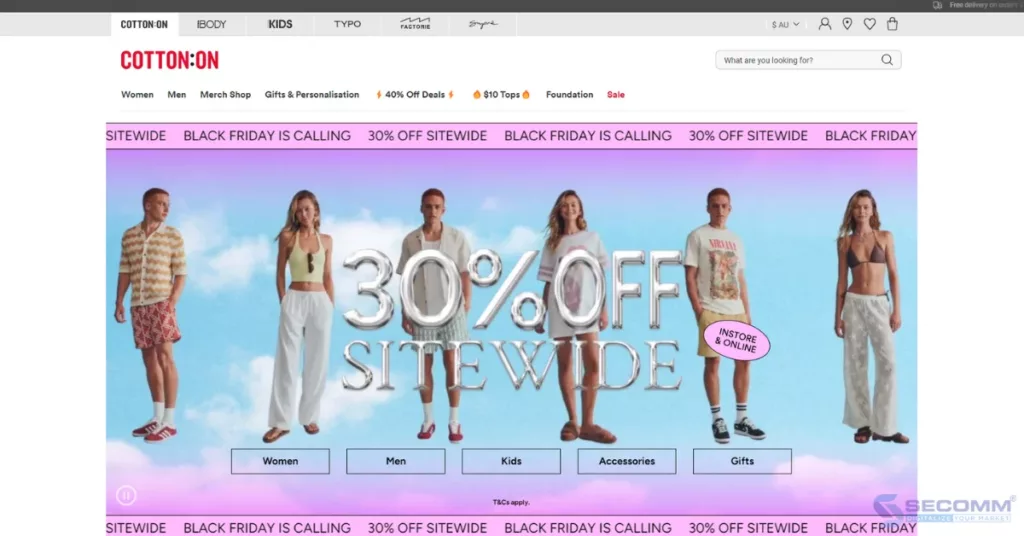
When using Salesforce Commerce Cloud, Cotton:On quickly built a multi-channel eCommerce website and activated 10 different websites globally within just 12 months.
“Salesforce has helped us scale our multi-channel capability and meet demand for more personal journeys” – Brendan Sweeney, General Manager, Cotton:On Group.
Versace is a luxury fashion brand from Italy, founded in 1978 by Gianni Versace. The brand specializes in high-end fashion products, including clothing, footwear, accessories, furniture, and fragrances.

Salesforce Commerce Cloud has helped Versace create an optimized user experience for its eCommerce website, making it easy for customers to search, shop, and make payments. The website is designed to be simple, user-friendly, and suitable for the brand’s upscale customer base.
Bvlgari is a luxury fashion brand from Italy that has used Salesforce Commerce Cloud to build its eCommerce website. This website is designed to provide an enhanced personalized shopping experience for Bvlgari’s customers.

Bvlgari has developed personalized product features that allow customers to create their own profiles and store information about their shopping preferences, purchase history, and delivery addresses. This feature helps Bvlgari better understand customer needs and provide them with personalized product recommendations and services.
Samsonite is a multinational manufacturer of luggage and travel accessories based in the United States. The company was founded in 1910 by Jesse Shwayder in Denver, Colorado, USA. Since then, Samsonite has become one of the world’s largest luggage manufacturers, with products sold in over 120 countries.

Samsonite has implemented Salesforce Commerce Cloud to enhance user experience, increase online sales, and analyze customer shopping behaviour.
Callaway Golf is an American golf equipment manufacturing company established in 1982 by Ely Callaway. The company specializes in designing, manufacturing, marketing, and selling golf equipment, specifically clubs and balls, as well as accessories like bags, gloves, and hats.
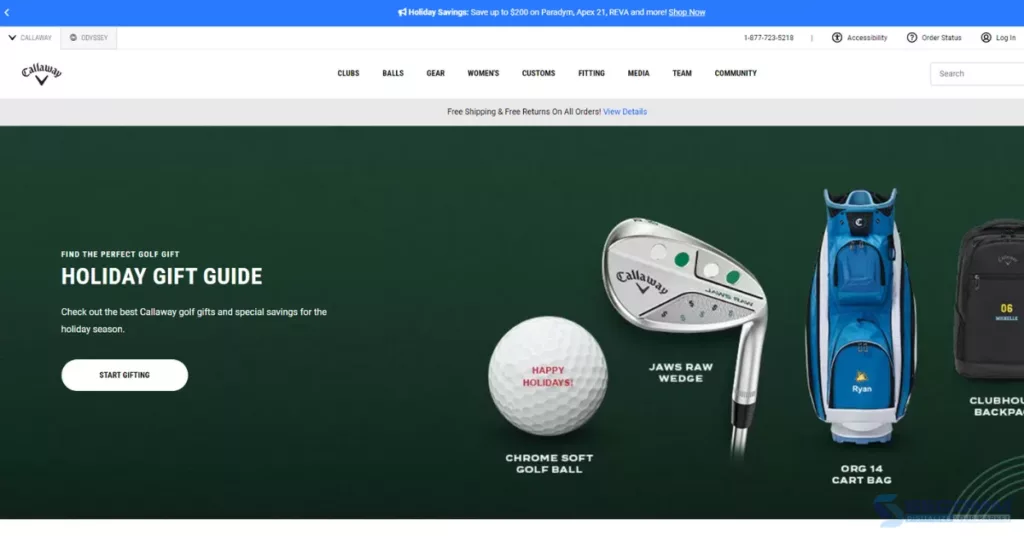
Callaway Golf has utilized the product filtering feature of Salesforce Commerce Cloud to help customers easily find products based on their needs. The brand has also employed the product recommendation feature to assist customers in discovering new products.
ECCO started as a multinational footwear business based in Denmark, founded in 1963 by Karl Toosbuy. The company specializes in designing, manufacturing, and selling shoes, bags, and other fashion accessories.
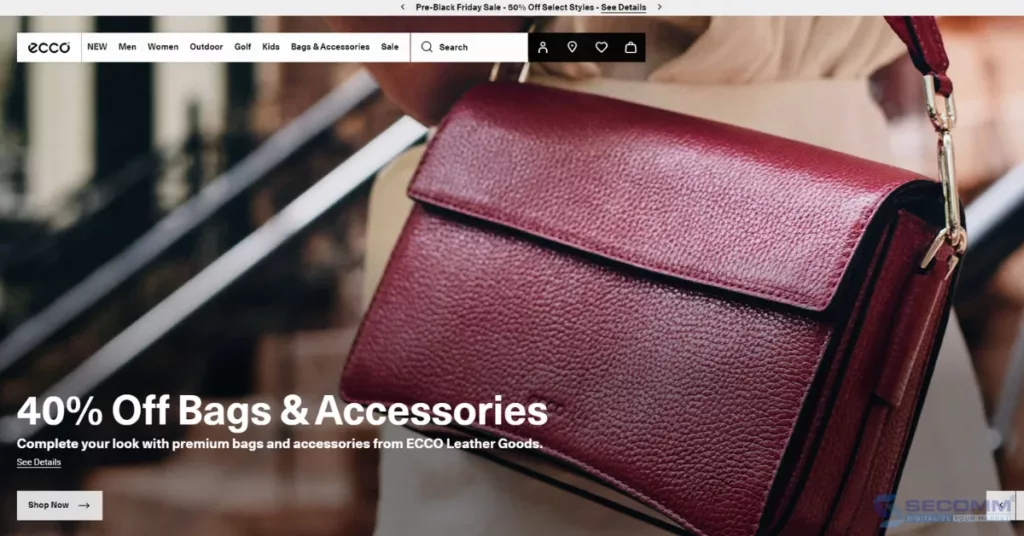
In early 2015, ECCO USA began testing the Endless Aisle, a supplementary feature of Salesforce B2C Commerce, along with other functionalities. This feature helps prevent lost sales by allowing collaborators to place orders based on online inventory.
Jimmy Choo is a luxury fashion brand from the United Kingdom specializing in shoes, handbags, accessories, and fragrances. The company was founded in 1996 by Malaysian-born haute couture shoe designer Jimmy Choo and British Vogue accessories editor Tamara Mellon.

Salesforce Commerce Cloud has helped Jimmy Choo enhance user experience, increase online sales, and analyze customer shopping behaviour. The brand has successfully leveraged Salesforce Commerce Cloud to drive the brand’s growth.
Brunello Cucinelli is a luxury fashion brand from Italy founded in 1978 by Brunello Cucinelli. The company is known for its cashmere sweaters, tailored suits, and other high-end fashion items.
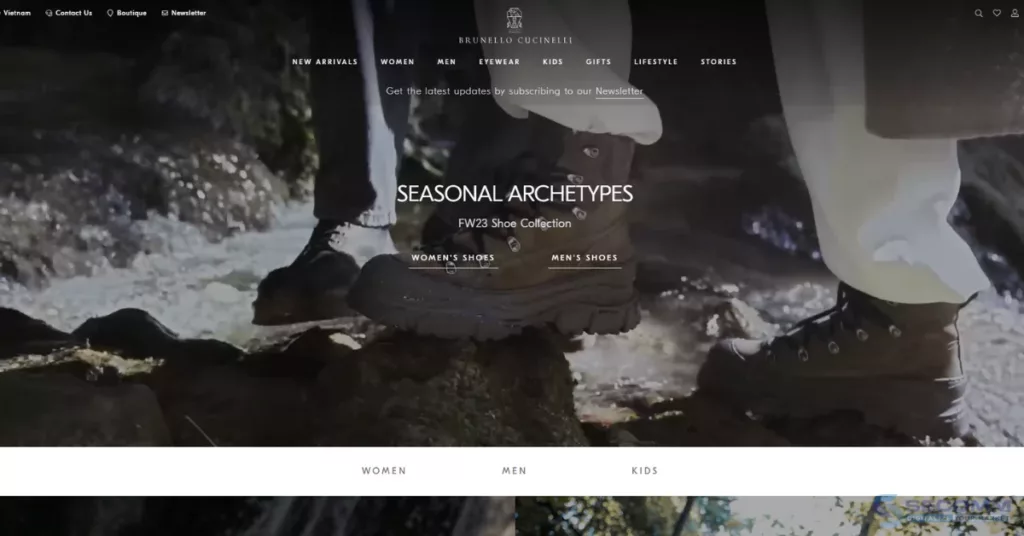
Brunello Cucinelli has utilized Salesforce Commerce Cloud to build an eCommerce website with features supporting user experience and boosting online sales.
GODIVA is a premium chocolate brand from Belgium, established in 1926 by Pierre Draps. The company specializes in high-quality chocolate made from the finest ingredients and crafted using traditional methods.

Salesforce Commerce Cloud has helped GODIVA analyze customer shopping behaviour. This data is utilized to enhance the customer shopping experience, develop new products and services, and optimize marketing strategies.
Toys”R”Us is a leading retailer of toys, games, entertainment, and educational products in Asia. Headquartered in Hong Kong, the company operates over 470 stores with more than 10,000 members across Asia, including Brunei, China, Hong Kong, Macau, Taiwan, Japan, Malaysia, Singapore, the Philippines, and Thailand.
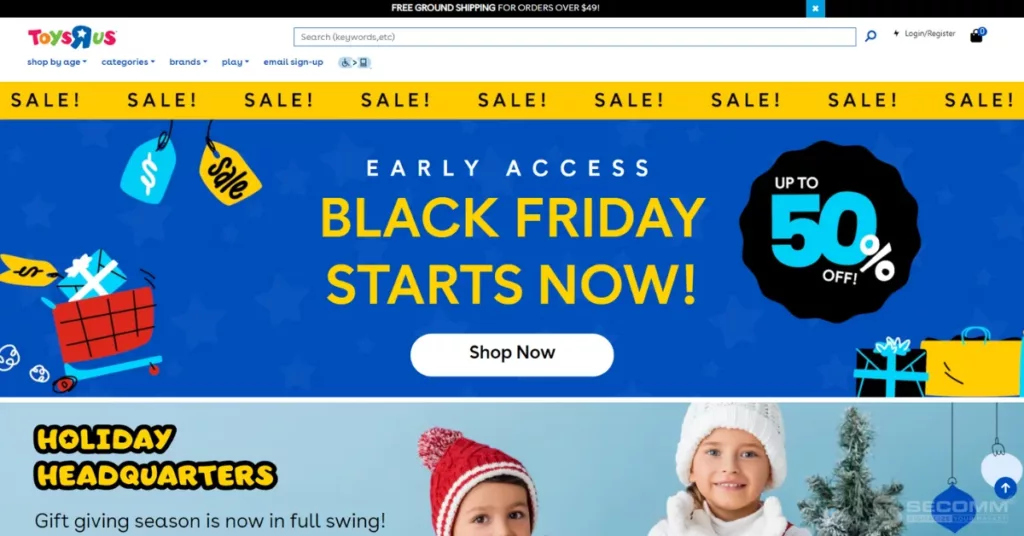
Tim Halaska, Regional Manager for Digital Strategy at Toys”R”Us Asia, acknowledges that traditional stores will always have a certain place in the company. However, COVID-19 and changes in consumer preferences have led to a more significant focus on eCommerce.
The Salesforce Commerce Cloud solution has helped Toys”R”Us streamline online sales and provide a unified experience that caters to consumer needs across Asia.
“Our challenge now is to capture the magic of that in-store experience and bring it online.” – Tim Halaska, Regional General Manager Of Digital Strategy, Toy”R”Us Asia.
Above are the top 10 websites built by Salesforce Commerce Cloud that have achieved success in both brand recognition and revenue. This success serves as inspiration for other businesses seeking the most suitable solutions to compete in the market.
With deep expertise and the development of complex eCommerce systems for clients such as Changi Airport Group (Singapore), Trentham Estate (Australia), and The Warehouse (Vietnam), SECOMM understands the challenges in choosing a platform and deploying eCommerce that businesses are facing.
Contact SECOMM now or call directly at the hotline number (028 7108 9908) for free advice on the eCommerce website building roadmap!
 2
2
 7,920
7,920
 0
0
 1
1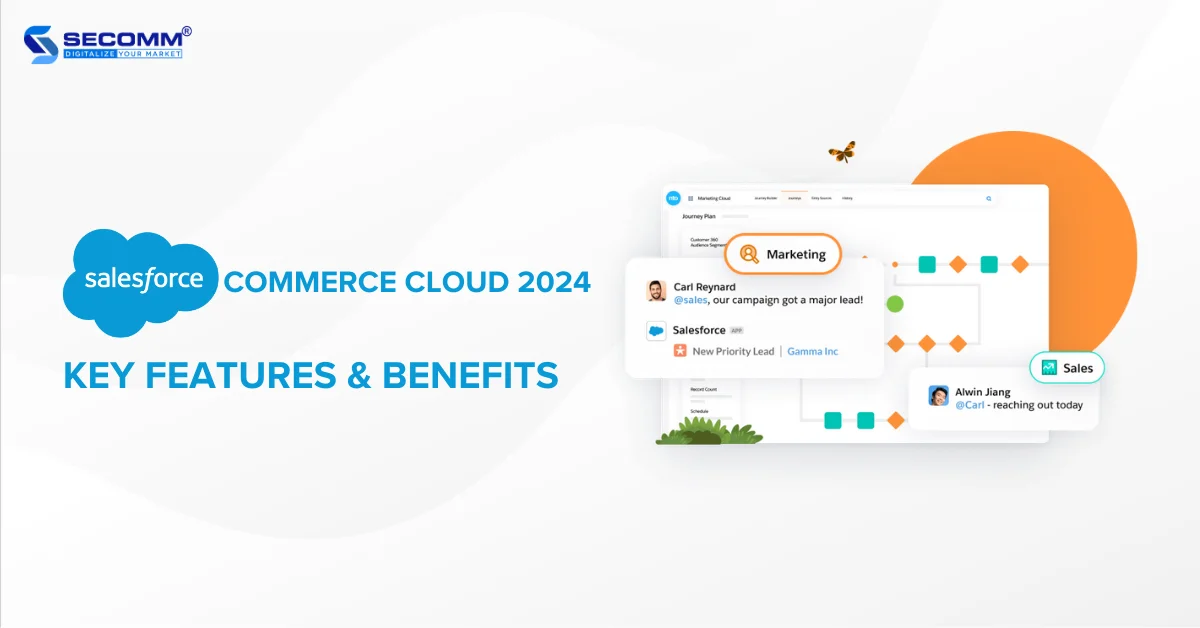
According to Builtwith, Salesforce Commerce Cloud is a platform used by over 12,000 eCommerce websites worldwide. This number has consistently increased over the years, reflecting the platform’s growing popularity.
Here is an analysis of the number of websites using Salesforce Commerce Cloud in different regions:
The United States is the largest country, with over 2,106 websites utilizing this platform.
Salesforce Commerce Cloud is a cloud-based eCommerce platform that helps businesses drive online sales and large enterprises.
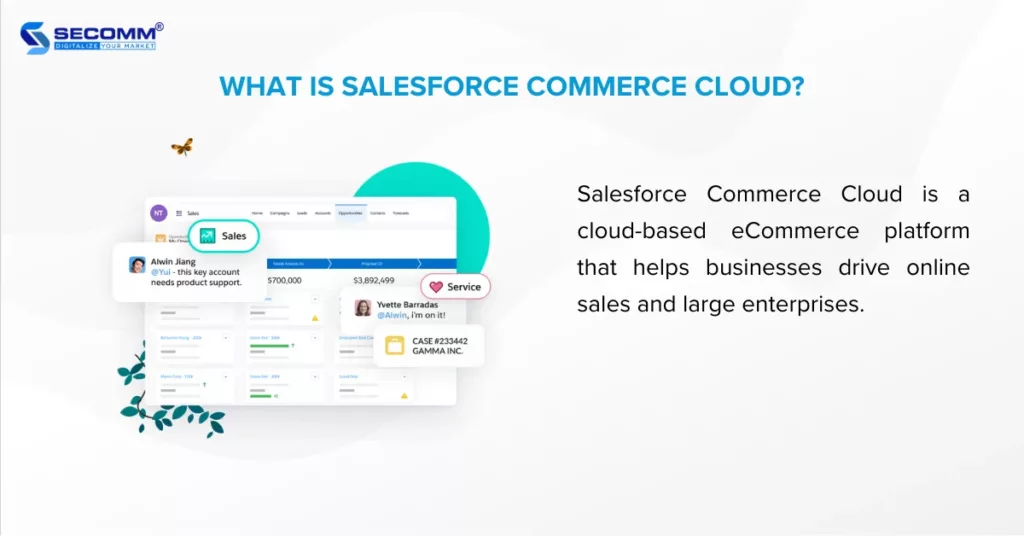
This platform provides a comprehensive set of tools to manage every aspect of eCommerce business, from product catalogue management and order fulfilment to marketing and customer service.
All static content (JS, CSS, and images) is distributed through CDN and eCDN (Embedded Content Delivery Network). Additionally, the platform can be configured to use external CDNs through the capabilities of the native platform. This ensures that platform resources are not consumed for static content. The remaining information and data will be handled by Salesforce servers. Data centres are distributed globally, placing them physically closer to end users.
In terms of structure, in such data centres, Salesforce can maintain multiple PODs (Point of Delivery). PODs allow for sharing and providing additional resources to stakeholders if there is a sudden surge in demand for those resources. PODs include firewalls, switches, load balancers, computing power, and file systems.
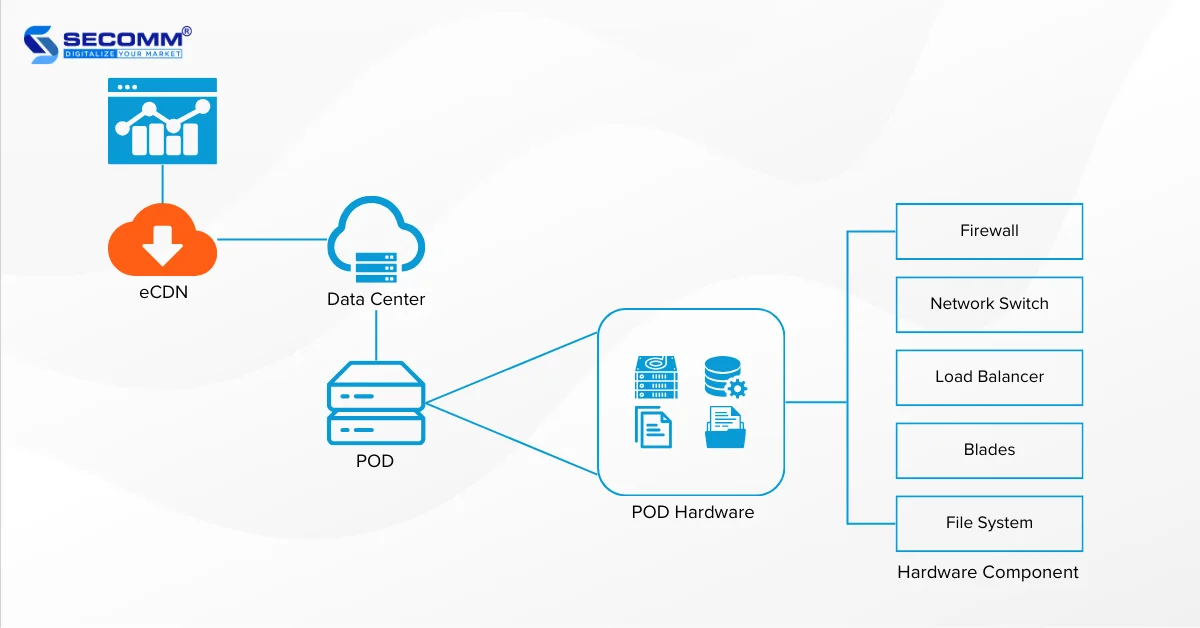
Salesforce Commerce Cloud has two main versions for building eCommerce websites: Salesforce B2C Commerce and Salesforce B2B Commerce, and more recently, B2B2C.
For the B2C model, it is further divided into three solution packages, including:

Similarly, the B2B model is divided into two solution packages, including:

For the B2B2C model, it will be calculated based on 1% Gross Merchandise Value.
Salesforce Commerce Cloud provides a range of powerful features to help businesses grow their eCommerce ventures, including:
Salesforce Commerce Cloud is one of the rare platforms that supports Headless Commerce by integrating with popular technologies and frameworks such as React, Angular, and Vue.js. This enables businesses to develop custom user interfaces tailored to the specific needs of the brand.
Related article:
In mid-2023, Salesforce introduced two new-generation AI products, including Marketing GPT and Commerce GPT, at the company’s Connections conference.
Marketing GPT and Commerce GPT empowers Salesforce’s Marketing Cloud and Commerce Cloud, allowing businesses to eliminate repetitive tasks, save time in their workflows, and deliver personalized campaigns and shopping experiences on a large scale.
With Marketing GPT, businesses can automatically generate more personalized emails and create smarter audience segments. With Commerce GPT, brands can provide personalized shopping experiences and customized promotions tailored to customer needs, utilizing the dynamic shopping journey provided by GPT.
Salesforce Commerce Cloud supports Omnichannel, meaning you can provide a seamless shopping experience across all channels, including websites, mobile apps, social media platforms (Facebook, Instagram, Zalo, etc), and eCommerce marketplaces (TikTok Shop, Shopee, Lazada, Sendo, etc).
This allows businesses to easily sell on multiple channels without the need to build and maintain separate solutions for each channel.
Salesforce Commerce Cloud is built on a cloud platform, making it easy for businesses to scale their eCommerce operations without worrying about investing in hardware and software. Salesforce Commerce Cloud also provides features and tools to help businesses efficiently manage traffic and performance, ensuring a seamless shopping experience for customers.
Salesforce Commerce Cloud is utilized by numerous large retailers and B2B enterprises worldwide to create and manage eCommerce websites, reaching a wider customer base.
Hugo Boss is one of the world’s leading premium fashion brands from Germany, established in 1924, with a widespread retail network including stores, distributors, and an eCommerce website. Hugo Boss employed Salesforce Commerce Cloud to build its eCommerce website in 2021.
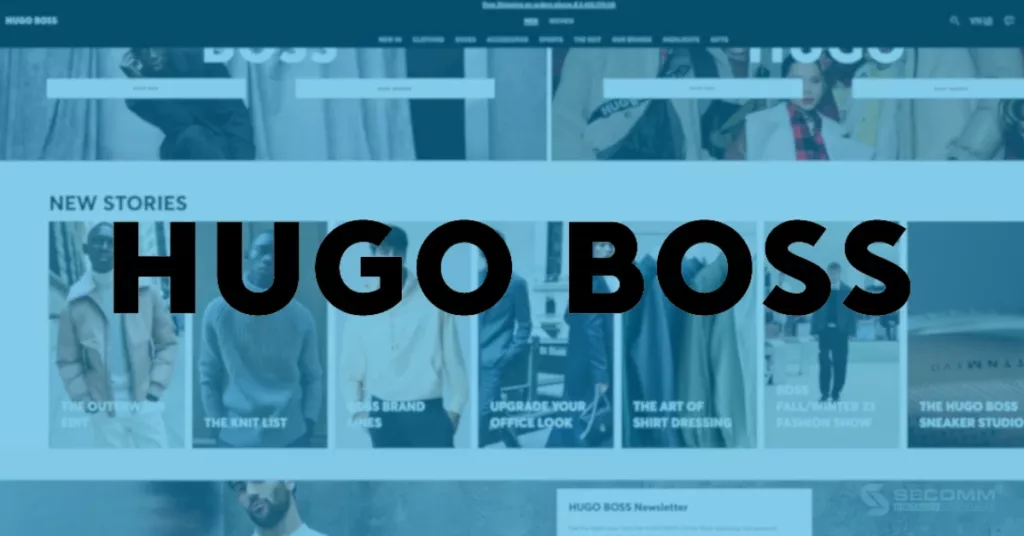
The platform provides features that help Hugo Boss create a seamless shopping experience, including synchronized product catalogues, cross-channel payments, and shipping and returns. Additionally, Hugo Boss’s website offers personalized features, such as product recommendations based on customer shopping history.
Bvlgari, a luxury fashion brand from Italy, has utilized Salesforce Commerce Cloud to develop its eCommerce website. The website is designed to enhance a personalized shopping experience for Bvlgari’s customers.

A notable personalized feature on Bvlgari’s new eCommerce website is the “My Bvlgari” feature, which allows customers to create their own profiles and store information about shopping preferences, purchase history, and delivery addresses. This feature helps Bvlgari better understand customer needs and provides them with tailored product suggestions and services.
Ralph Lauren is a premium American fashion brand founded in 1967, specializing in luxury fashion products for men, women, and children, including clothing, footwear, accessories, and fragrances.

Salesforce Commerce Cloud assists Ralph Lauren in synchronizing its product catalogue across all channels, including the website, mobile app, and physical stores. This ensures that customers can easily find the products they want to purchase, regardless of the channel they are using.
Salesforce Commerce Cloud is a powerful and flexible eCommerce platform, particularly well-suited for large enterprises to conduct online business more efficiently.
Related article: Top 10 websites built on Salesforce Commerce Cloud
With deep expertise and the development of complex eCommerce systems for clients such as Changi Airport Group (Singapore), Trentham Estate (Australia), and The Warehouse (Vietnam), SECOMM understands the challenges in choosing a platform and deploying eCommerce that businesses are facing.
Contact SECOMM now or call directly at the hotline number (028 7108 9908) for free advice on the eCommerce website building roadmap!
 2
2
 7,005
7,005
 0
0
 1
1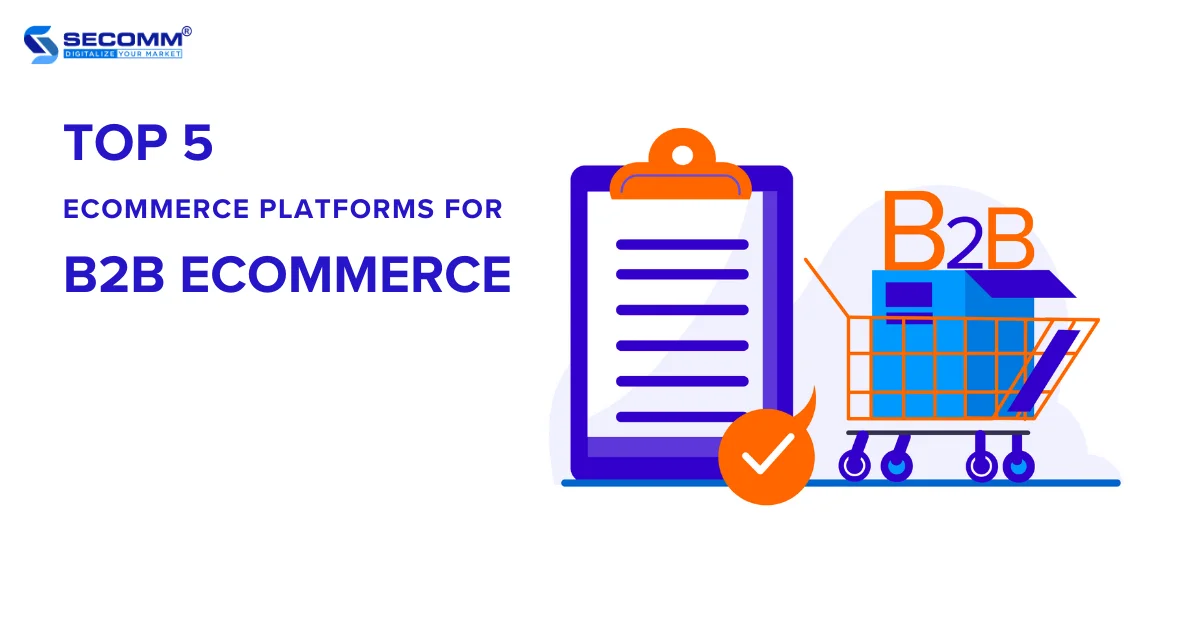
The global B2B eCommerce market is expected to reach $18.771.4 trillion by 2027.
According to McKinsey & Company, B2B enterprises are expanding their touchpoints in eCommerce, with 80% making online channels perform better than offline channels.
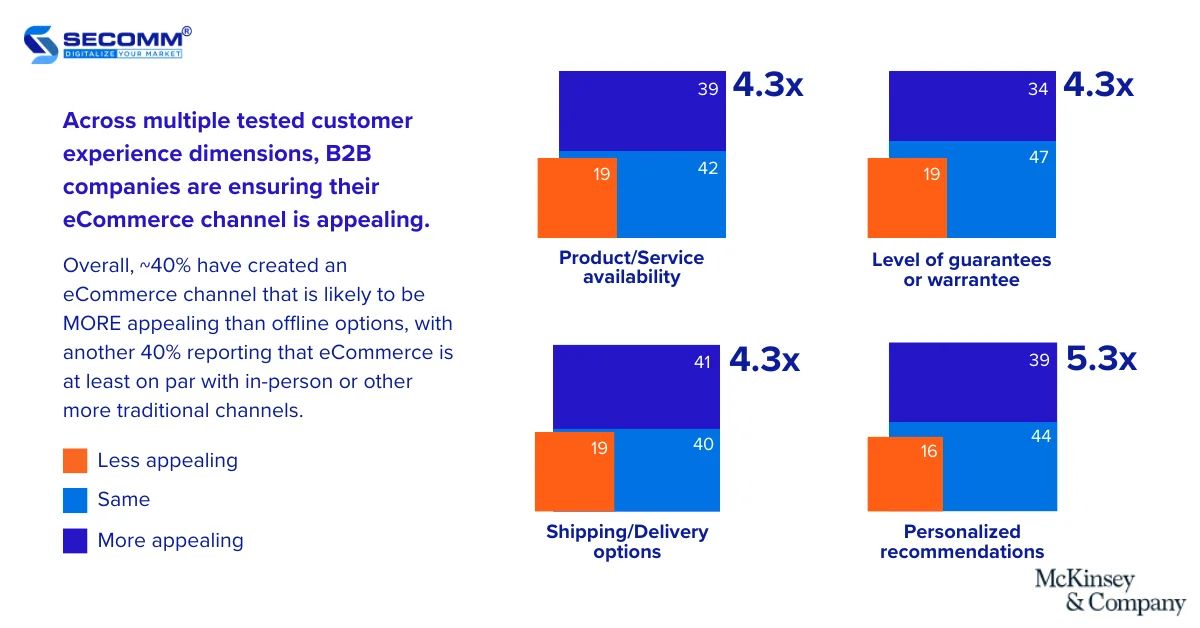
Therefore, B2B eCommerce is a rapidly growing market, with projected sales expected to reach 12.2 trillion USD by 2023. To succeed in this market, businesses always need a robust eCommerce platform.
It is crucial for businesses to clearly define the specificities and considerations of B2B eCommerce before deciding on which eCommerce platform to implement.
Specifically, Business-to-Business (B2B) eCommerce involves commercial transactions between businesses. As a result, B2B eCommerce has distinct characteristics compared to Business-to-Consumer (B2C) eCommerce, namely:
To succeed in B2B eCommerce, businesses need to take note of the following considerations:
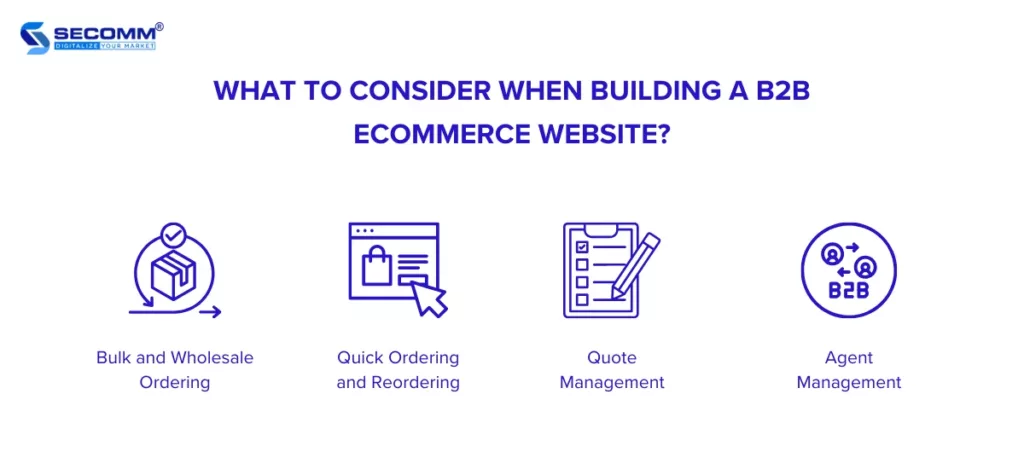
Bulk and wholesale ordering are crucial factors in the revenue of B2B businesses. The quantity and pricing can vary for each business depending on the customer group and the purchased product categories.
To efficiently handle these orders in B2B eCommerce, businesses need to use order management systems and establish clear, detailed, and appropriate order processing workflows.
The feature of quick ordering is often provided by B2B eCommerce platforms, allowing customers to create and place orders with just a few clicks. Quick ordering can be implemented through various methods, such as:
Unlike individual customers, B2B customers often repeat purchases of specific product categories in seasonal quantities. Therefore, B2B businesses should also incorporate a feature to remember previous orders for quick reordering.
Quote management in B2B eCommerce is a crucial process that helps businesses provide accurate and timely pricing information to customers, ultimately increasing sales and improving profits.
Specifically, in quote management, negotiating prices with multiple quote versions or from different suppliers is an important part of many B2B eCommerce models, allowing businesses to negotiate prices for large or complex transactions.
Managing information about agents, such as agent details, agent approval processes, agent hierarchies, credit limits, stock management for each agent, and managing discounts/commissions for agents, is essential.
Additionally, for B2B models involving multiple manufacturers and distributors, there may be a need for additional management of relationships between these entities and agents.
Therefore, depending on the current offline business model and the B2B eCommerce business model that the business aims to establish the most effective agent management process should be detailed.
Below are the top 5 eCommerce platforms for B2B businesses, capable of addressing the specificities of B2B eCommerce.
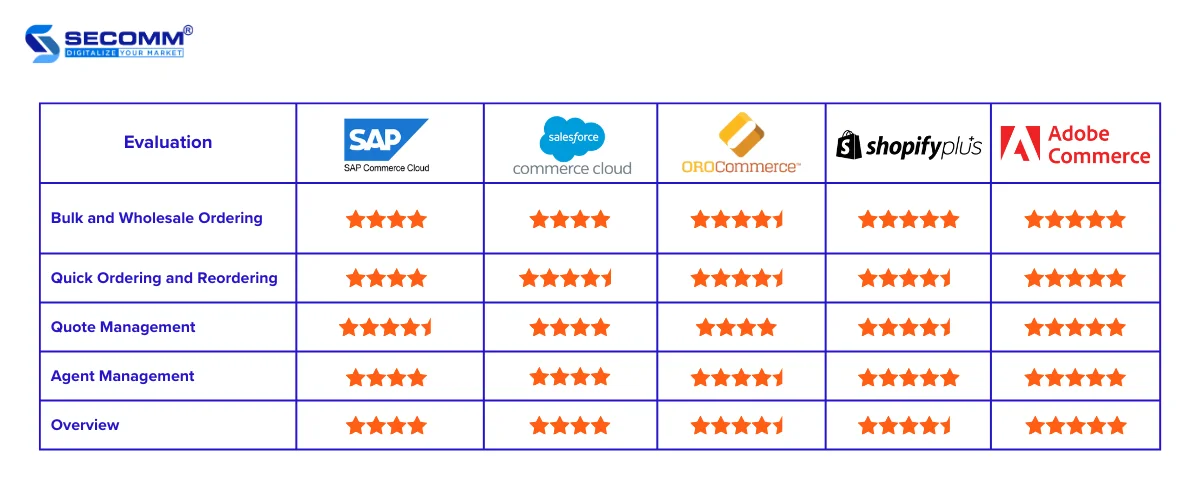
SAP Commerce Cloud is a powerful eCommerce platform suitable for B2B eCommerce businesses.
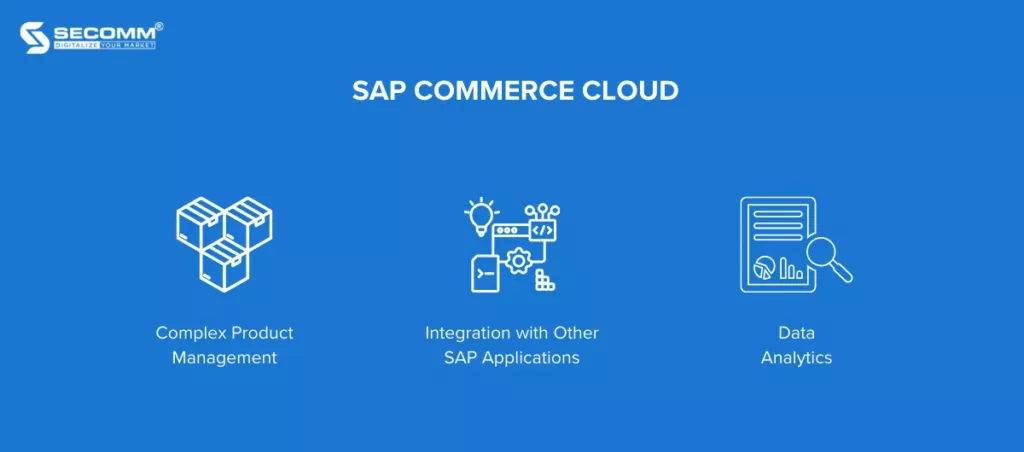
Here are some ways in which SAP Commerce Cloud can cater to B2B eCommerce:
Therefore, SAP Commerce Cloud can align with B2B eCommerce by offering features and customization capabilities to meet the specific requirements of businesses in the B2B industry.
Salesforce B2B Commerce is an eCommerce platform designed for large enterprises, including B2B businesses.
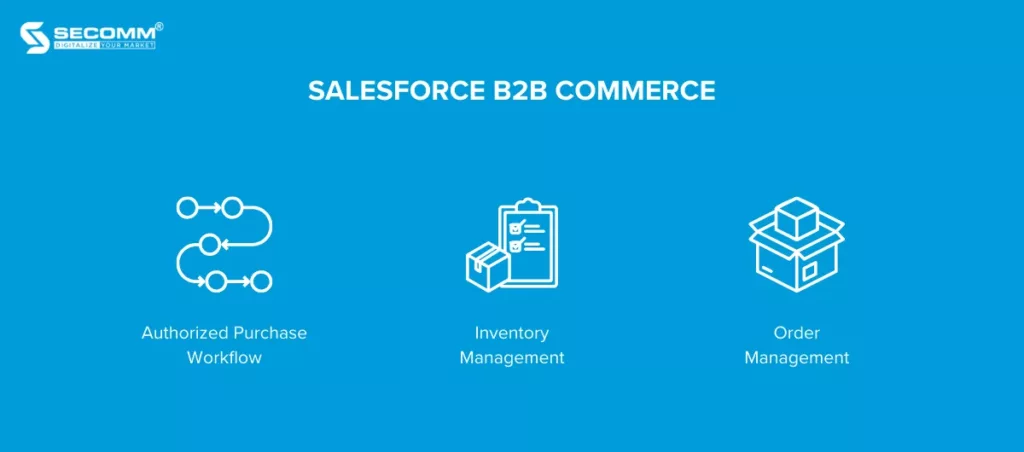
Here are some specific features and functionalities of Salesforce B2B Commerce that are suitable for B2B eCommerce:
In summary, the B2B functionalities of Salesforce B2B Commerce help B2B businesses enhance sales and customer service effectiveness.
OroCommerce is an open-source eCommerce platform designed for B2B enterprises. This platform provides powerful and flexible features, catering to the needs of B2B businesses of all sizes.
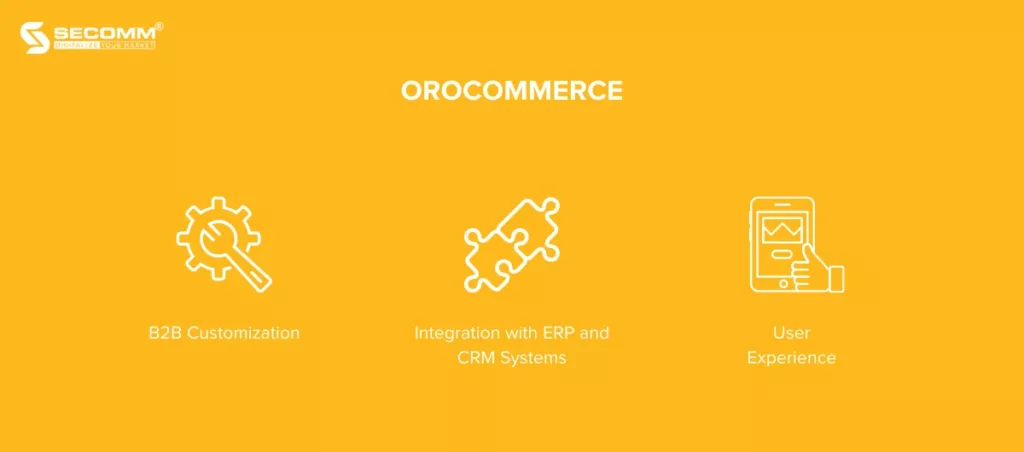
OroCommerce offers several features and functionalities specifically suitable for B2B eCommerce, including:
Overall, OroCommerce is a robust eCommerce platform worth considering for B2B enterprises.
Shopify Plus is a cloud-based SaaS eCommerce platform designed for large enterprises, especially B2B businesses.
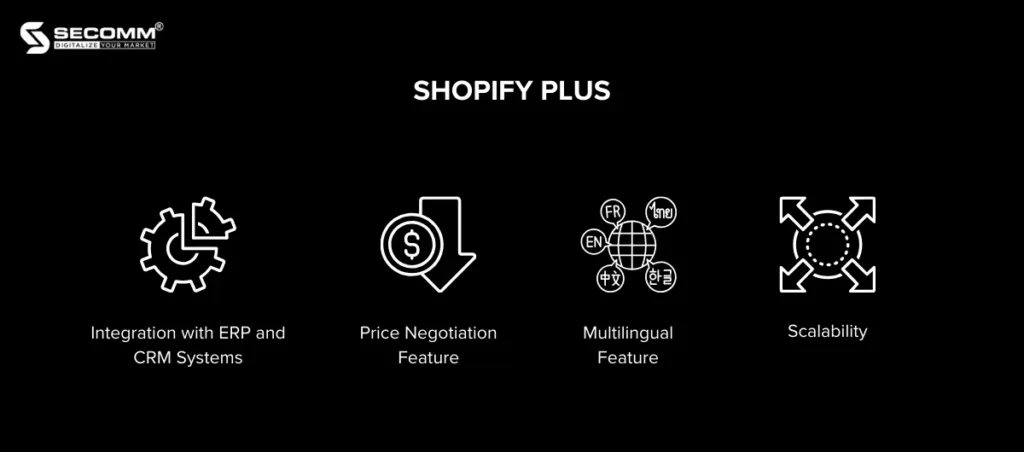
Shopify Plus provides powerful features and functionalities to meet the needs of B2B enterprises, including:
Some notable features of Shopify Plus that businesses can leverage include Shopify Flow, Shopify Launchpad, Shopify Payments, Shopify POS, etc.
Therefore, Shopify Plus is also an excellent choice for B2B businesses looking for a robust, flexible, and scalable eCommerce platform.
Xem thêm: 15 Lý do để chuyển đổi sang nền tảng Shopify Plus
Adobe Commerce (Magento) is a powerful and flexible eCommerce platform suitable for various types of businesses, including B2B enterprises.
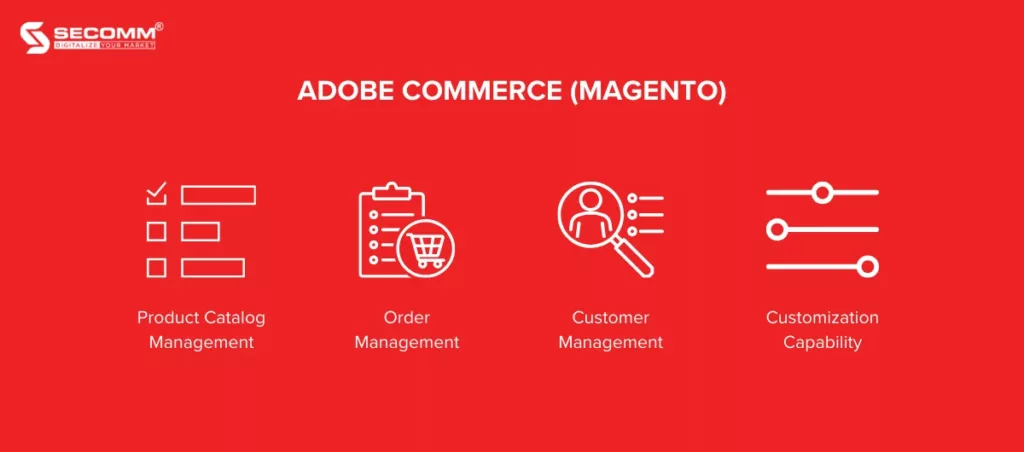
Adobe Commerce offers many features and functionalities that are well-suited for B2B eCommerce, including:
Moreover, Adobe Commerce can quickly deploy B2B-specific features thanks to its diverse ecosystem. It is also the most customizable platform among the five mentioned.
Additionally, Adobe Commerce has a large and active user community, providing support and resources for B2B businesses.
Read more: Shopify Plus vs Adobe Commerce: Key Differences 2023
Above are 5 popular platforms preferred by B2B businesses to build eCommerce websites, serving online business goals for brands.
However, choosing the most suitable platform for each business will depend on various factors, including business strategy, budget, deployment timeline, and the long-term direction set by business managers.
With deep expertise and the development of complex eCommerce systems for clients such as Changi Airport Group (Singapore), Trentham Estate (Australia), and The Warehouse (Vietnam), SECOMM understands the challenges in choosing a platform and deploying eCommerce that businesses are facing.
Contact SECOMM now or call directly at the hotline number (028 7108 9908) for free advice on the eCommerce website building roadmap!
 2
2
 8,217
8,217
 0
0
 1
1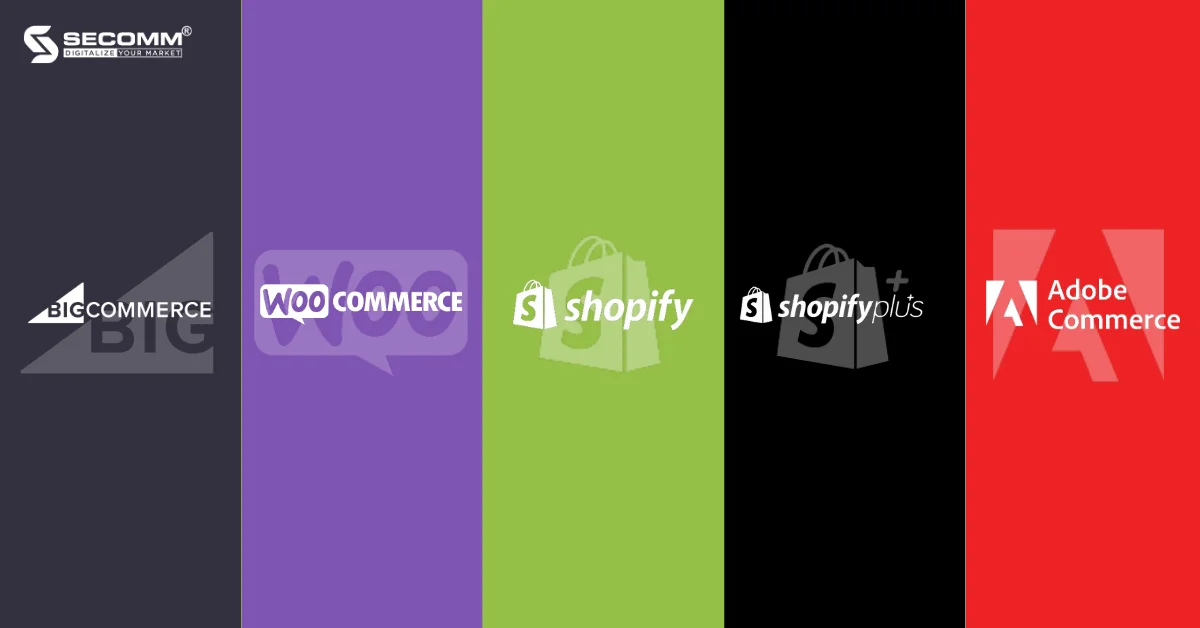
The global B2C eCommerce market is valued at 4.44 trillion USD in 2023 and is projected to reach 7.45 trillion USD by 2030, with a compound annual growth rate (CAGR) of 7.6% during the forecast period from 2021 to 2030.
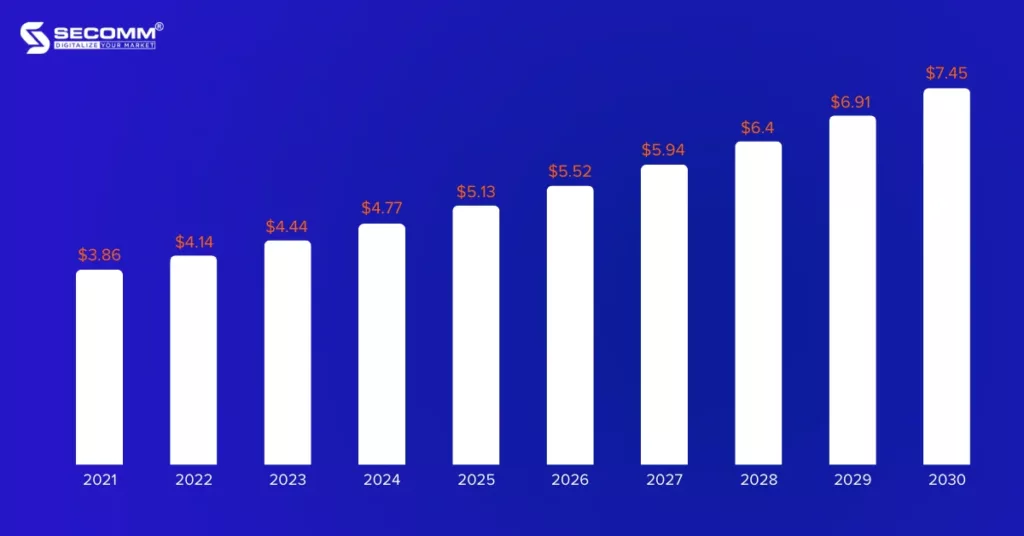
This demonstrates that eCommerce is increasingly thriving, becoming a crucial sales channel for B2C businesses. To build and develop a successful online store, businesses need to choose an eCommerce platform that aligns with their needs and business objectives.
B2C eCommerce platforms typically provide a seamless shopping journey, and user-friendly interfaces, allowing customers to easily navigate, search for items, and complete transactions quickly.
This is achieved through professional UI/UX design and advanced functionality systems for eCommerce websites.
An exemplary example is CHARLES & KEITH, a fashion eCommerce website, designed with sophistication and appeal, along with easy navigation and search capabilities.
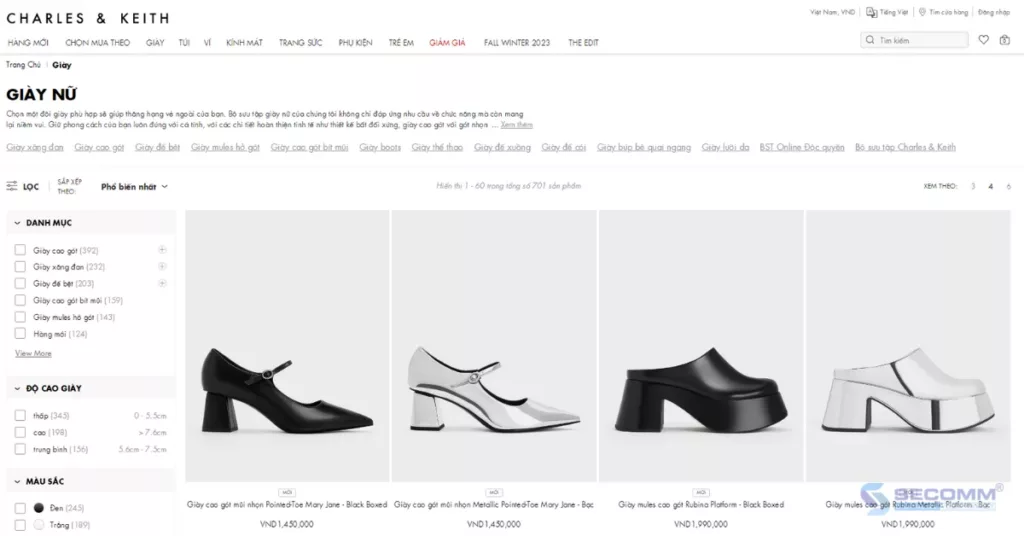
According to Statista’s statistics, the expected number of smartphone users worldwide is projected to reach 4.96 billion by 2025. This indicates that mobile commerce is virtually indispensable in B2C eCommerce strategies.
Consumers increasingly desire the ability to shop anytime, anywhere, even while on the move, and optimizing eCommerce websites for mobile devices will meet this consumer demand.
Choosing a suitable eCommerce platform will support a range of mobile-optimized themes catering to various industries and preferences, enabling businesses to establish an effective online store and navigate for mobile users.
Leading B2C eCommerce platforms will have a streamlined order processing system, ensuring a hassle-free payment experience for both business owners and buyers.
OneStep Checkout is a typical example that allows customers to complete their order payment on a single page. This simplifies and facilitates the payment process for customers, potentially increasing conversion rates.
Businesses can refer to PNJ’s Checkout page for comprehensive information on streamlining the shipping process all within one webpage.
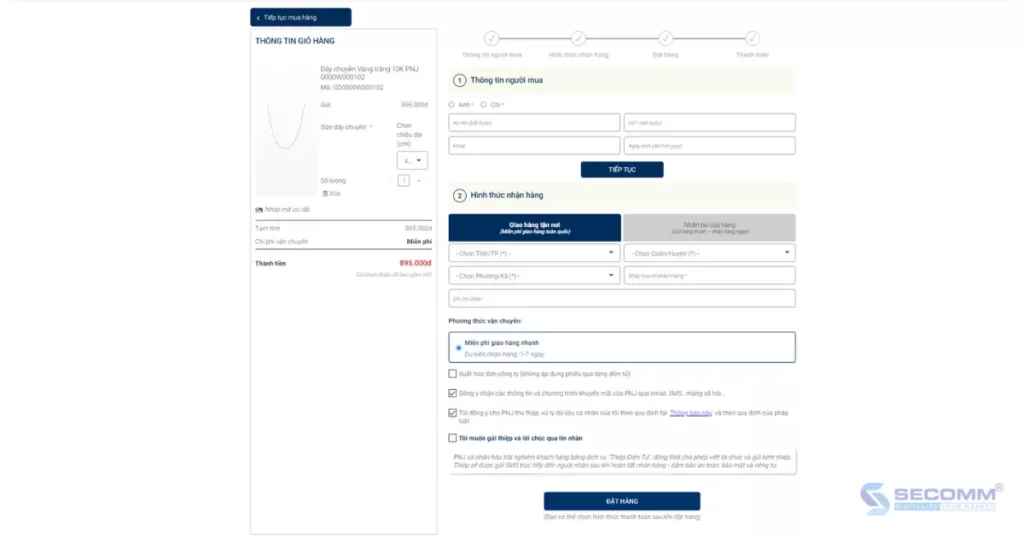
Personalization tools allow businesses to tailor content and promotions based on consumer behaviour and preferences, supported by AI.
By integrating personalized features at relevant touchpoints within an eCommerce website, businesses can enhance conversion rates and ROI (Return on Investment).
Major eCommerce brands like Amazon, Alibaba, Best Buy, etc., consistently incorporate product recommendation features to encourage shopping behaviour from customers.
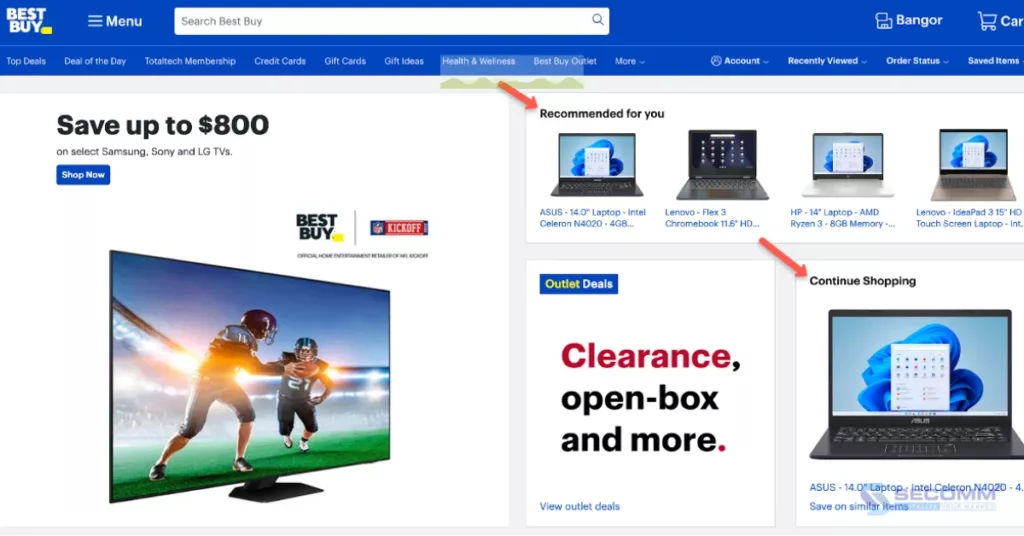
Another crucial aspect of B2C eCommerce is the ability for pages to load quickly and efficiently, ensuring the website maintains stable performance and effectively delivers content on all devices.
To ensure website performance, businesses should opt for major eCommerce platforms such as Adobe Commerce (Magento), Shopify Plus, BigCommerce Enterprise, etc. These platforms offer advanced performance features and robust caching mechanisms, tailored for various industries and preferences, enabling businesses to establish online stores with responsive feedback and faster page loading.
Below are the top 5 eCommerce platforms that SECOMM has evaluated as suitable for businesses following the B2C model.
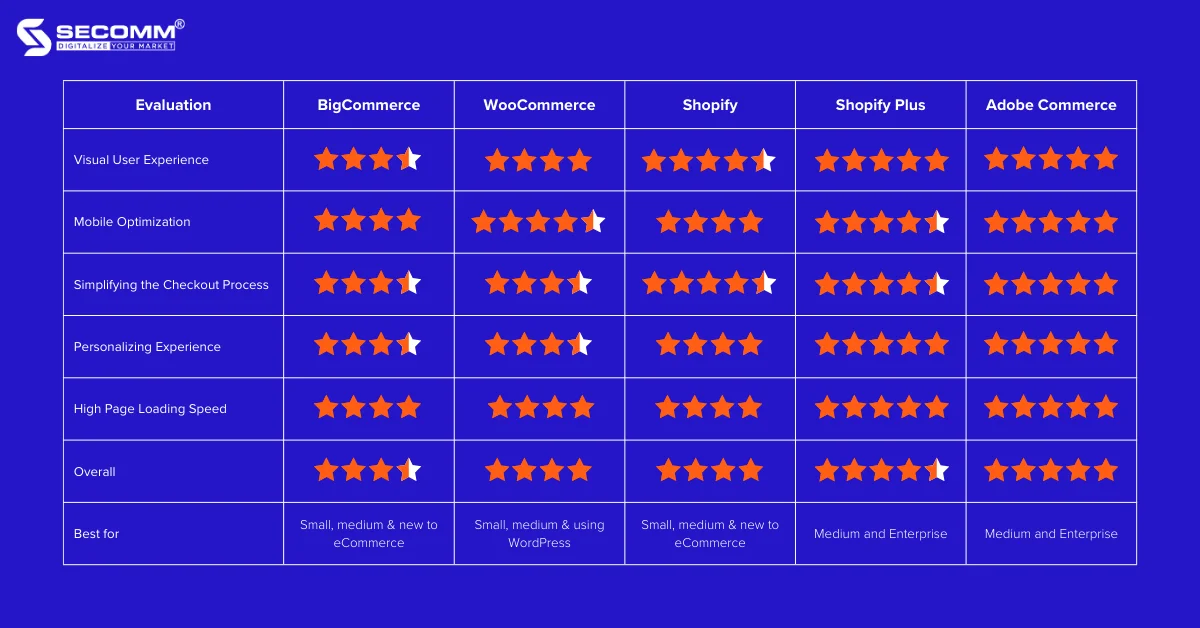
BigCommerce is an eCommerce platform designed for ease of use to assist businesses in initiating their journey to build an eCommerce website.
After years of development, BigCommerce has become one of the feature-rich platforms available for creating websites, optimizing search tools, marketing, etc., with reasonable deployment costs.
Compared to other popular platforms mentioned in this article, the performance, features, and application ecosystem of BigCommerce are not overly outstanding. However, BigCommerce remains a good choice for small, and medium-sized businesses, or those entering the market.
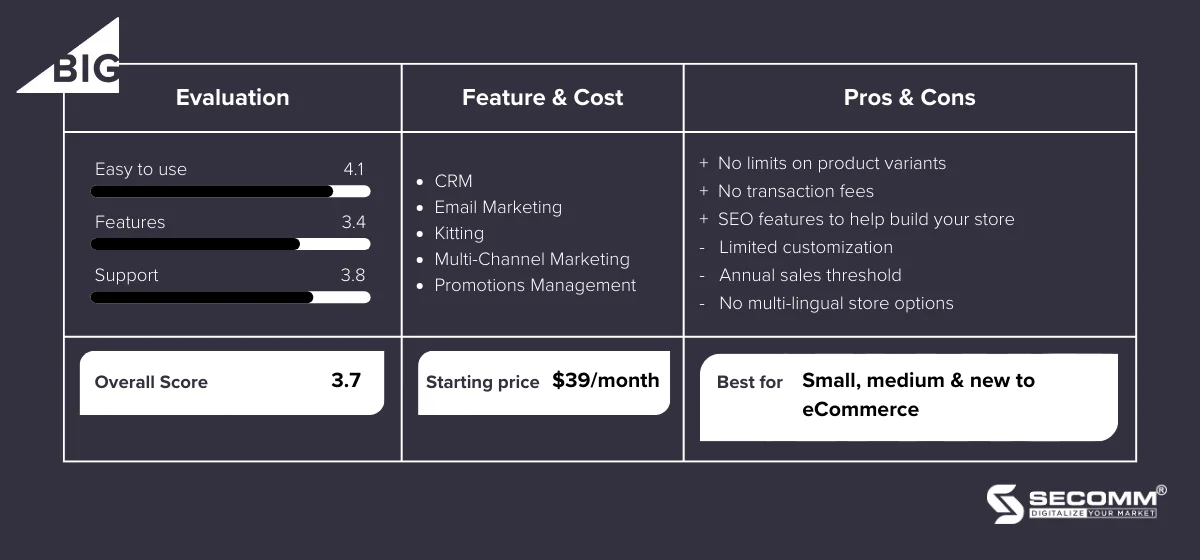
Read more: Shopify vs BigCommerce: Which platform is right for you?
WooCommerce is a free WordPress plugin that enables brands to establish an eCommerce website by adding eCommerce functionality to an existing WordPress site. The WooCommerce plugin helps transform a regular WordPress website into an eCommerce site with all the necessary features, easily customizable with just a few clicks.
Businesses can leverage the extensive ecosystem of WooCommerce to upgrade both functionality and design for the most suitable interface. Therefore, WooCommerce is also a good choice for small or medium-sized B2C businesses, especially those that have previously used WordPress.
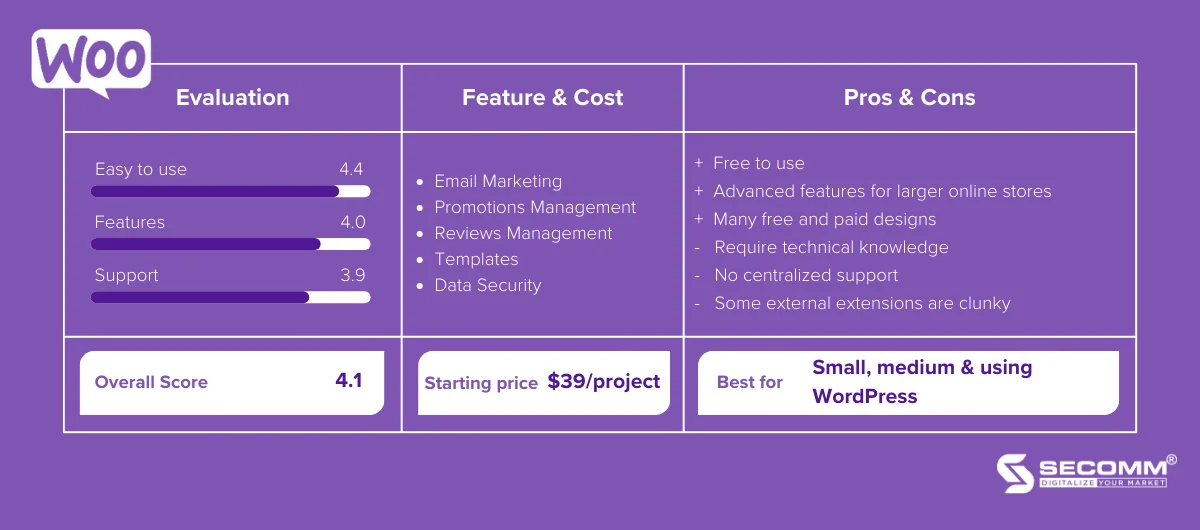
Shopify is one of the popular eCommerce platforms that businesses can use to build, develop, and manage online stores.
Shopify operates on the SaaS (Software as a Service) model, so businesses pay a monthly fee to use the platform and must adhere to its regulations.
However, Shopify manages hosting and takes responsibility for technical issues to ensure the safety and efficient operation of the business’s eCommerce website.
The platform provides the necessary features and benefits for businesses to successfully build and develop an online store. In terms of suitability for B2C businesses, Shopify is most suitable for small to medium-sized enterprises or those entering the eCommerce market.
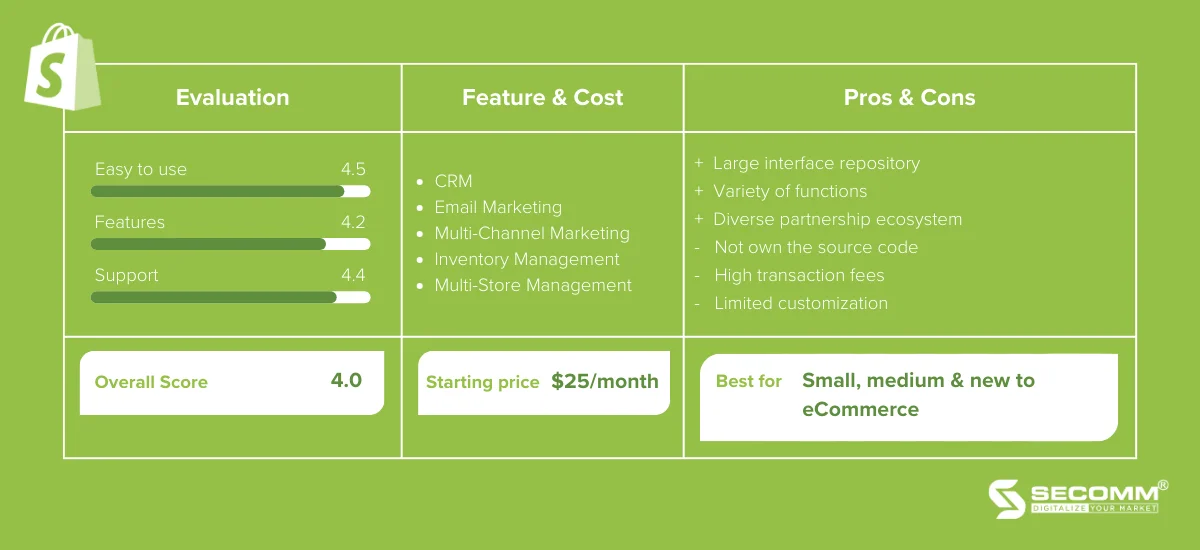
Shopify Plus is the enterprise-level version of the eCommerce platform provided by Shopify, specifically designed for large brands with an annual transaction value of over 1 million USD and high growth rates.
Unlike Shopify, Shopify Plus follows the PaaS (Platform as a Service) model, allowing businesses to utilize the development environment of Shopify Plus to develop databases, web servers, functionality, etc., for their eCommerce system.
The initial cost for using Shopify Plus is around $2,000 per month and increases gradually based on revenue. Therefore, using this platform to meet the needs of B2C eCommerce or any industry-specific requirements is relatively straightforward.
However, Shopify Plus is more suitable for medium to large-scale businesses as it requires technical knowledge and involves relatively high usage costs.
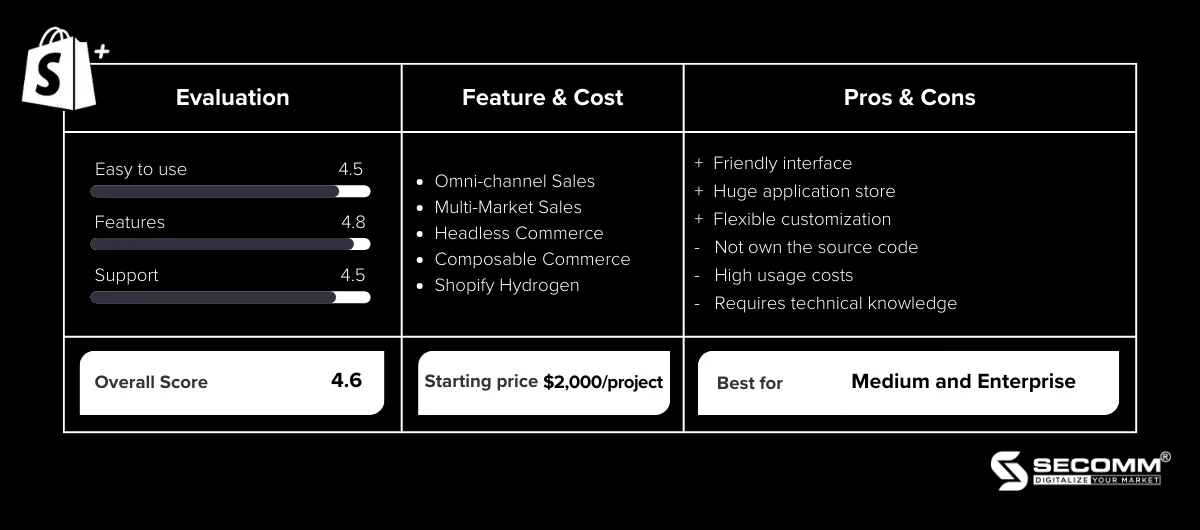
Read more:
Adobe Commerce is an open-source eCommerce platform specially designed to serve medium to large-scale businesses, offering high customization and scalability. Currently, Adobe Commerce has two main versions: Adobe Commerce Cloud and Magento Open Source.
As one of the leading platforms in eCommerce, Adobe Commerce is consistently highly regarded across all scales and industries, including B2C eCommerce businesses.
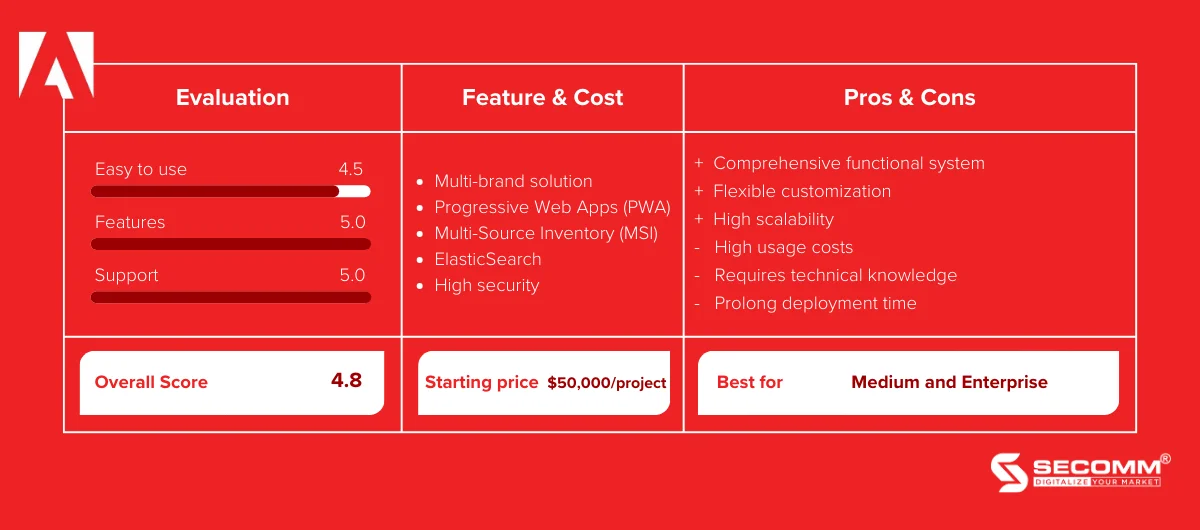
Read more:
Above are the 5 popular platforms that B2C businesses prefer to use for building eCommerce websites, catering to online business goals for their brands.
However, choosing the most suitable platform for each business will depend on various factors such as business strategy, budget, deployment time, and the long-term direction set by business managers.
With deep expertise and the development of complex eCommerce systems for clients such as Changi Airport Group (Singapore), Trentham Estate (Australia), and The Warehouse (Vietnam), SECOMM understands the challenges in choosing a platform and deploying eCommerce that businesses are facing.
Contact SECOMM now or call directly at the hotline number (028 7108 9908) for free advice on the eCommerce website building roadmap!
 2
2
 9,360
9,360
 0
0
 1
1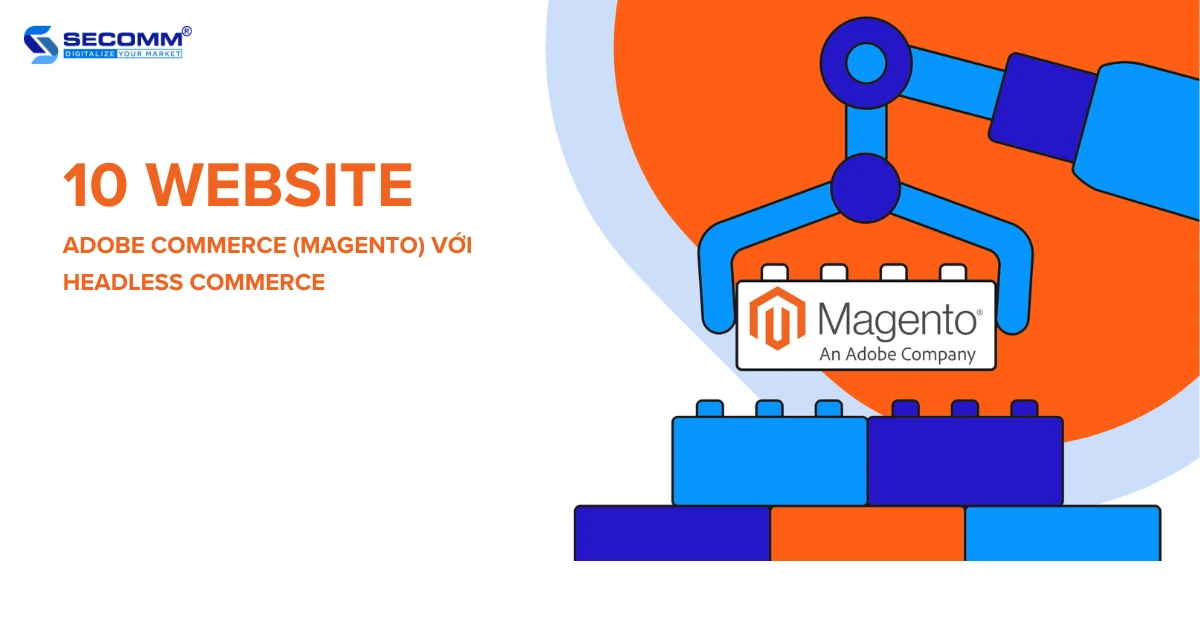
Headless Commerce is a significant revolution in the technology sector, changing the way businesses approach eCommerce. In this field, Adobe Commerce leads in providing solutions and tools for implementing Headless Commerce.
Below is a list of 10 well-known brands currently utilizing Adobe Commerce and Headless Commerce.
Samsung is a multinational conglomerate based in South Korea, operating in various sectors, with its most prominent being consumer electronics, generating a revenue of $234 billion in 2022.
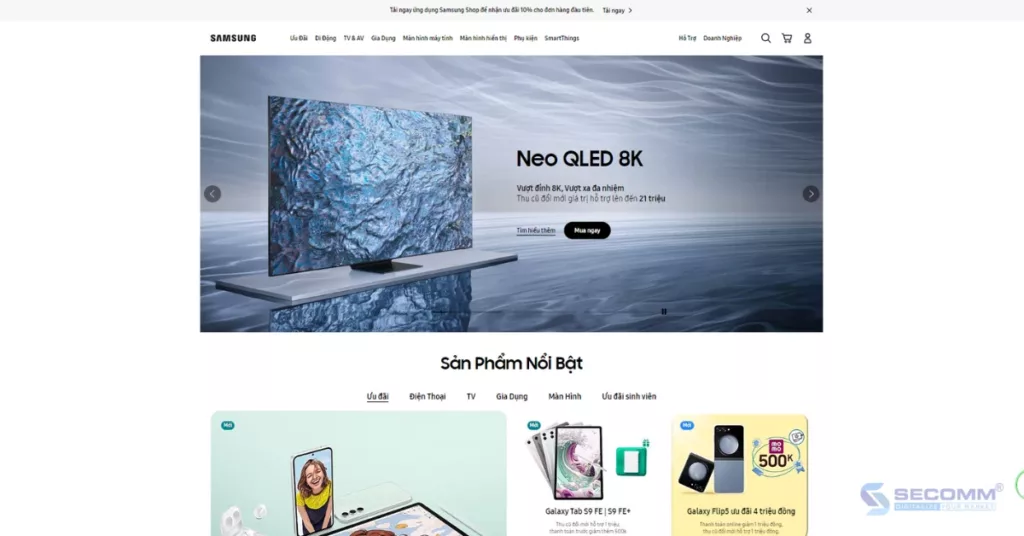
Samsung’s eCommerce website is built on the Adobe Commerce Cloud platform, utilizing Headless Commerce technology as its core. Thanks to this, Samsung has developed a virtual assistant to support customers in online and in-store shopping. In the U.S. market, customers can use this assistant to view product demos, receive usage instructions, and make online purchases. Customers have highly praised this feature for providing a more comfortable and convenient shopping experience.
Target Corporation is a major retail company in the United States, offering a wide range of products and services, including clothing, footwear, electronics, household goods, toys, and furniture. According to the financial report of Target Corporation in 2022, the revenue reached $106.8 billion, a growth of 8.4% compared to 2021.
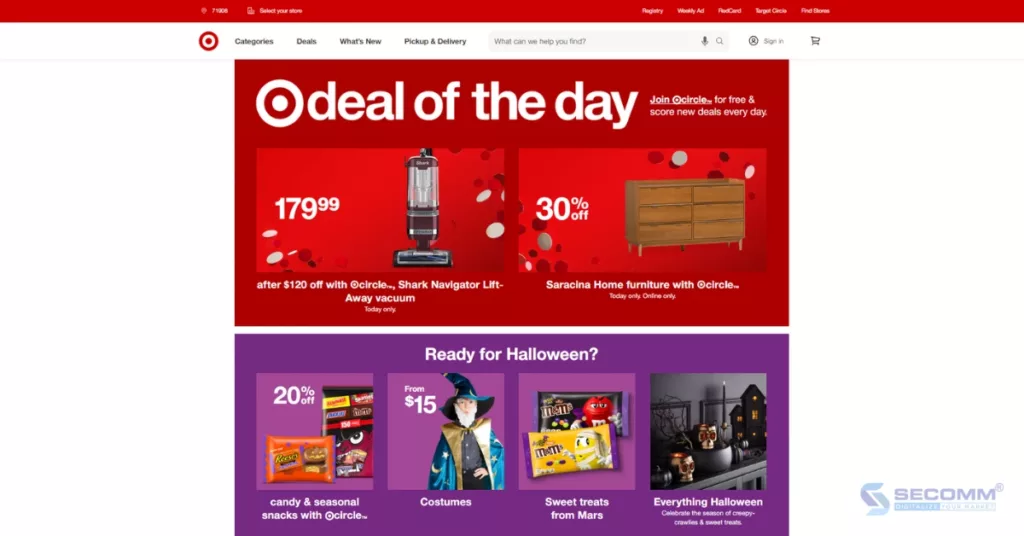
Target recognized that the brand was losing revenue as customers began their shopping journey on one device and ended it on another. The retailer has implemented Headless Commerce to deploy omnichannel sales to increase conversion rates on various devices, thereby making it easier for customers to complete their purchase transactions.
Toyota is one of the largest automobile manufacturers in the world, selling over 10 million vehicles globally each year. Toyota produces a variety of vehicles and accessories, including cars, trucks, buses, and sports utility vehicles, as well as engines, transmissions, and auto parts.

Toyota’s website utilizes Headless Commerce to leverage Application Programming Interfaces (APIs) for integration with legacy systems and inventory management, providing a personalized omnichannel experience.
Under Armour is an American sportswear company founded in 1996 by Kevin Plank. The company is headquartered in Baltimore, Maryland, and specializes in the production of sportswear, footwear, and accessories, with an annual revenue of over $10 billion.

Currently, Under Armour is using Headless Commerce to enhance the personalized fitness experience based on location, purchase history, and workout activities, as well as training logs. The Under Armour website features notable functionalities such as inventory alerts, traffic history, payment information, and content management using data from the order management system.
Kirkland’s is a chain of home décor, furniture, textiles, accessories, and gift stores in the United States. The company is headquartered in Brentwood, Tennessee, and operates 431 stores in 35 states and an eCommerce website.

Kirkland’s has implemented Headless Commerce to address website-related issues such as flexibility, custom design, and providing a smooth shopping experience (single-click login and biometric payment capabilities).
Coca-Cola is a carbonated beverage brand established in 1886. It is currently the world’s best-selling beverage brand, available in over 200 countries and territories, with over 2 billion cans sold every day.
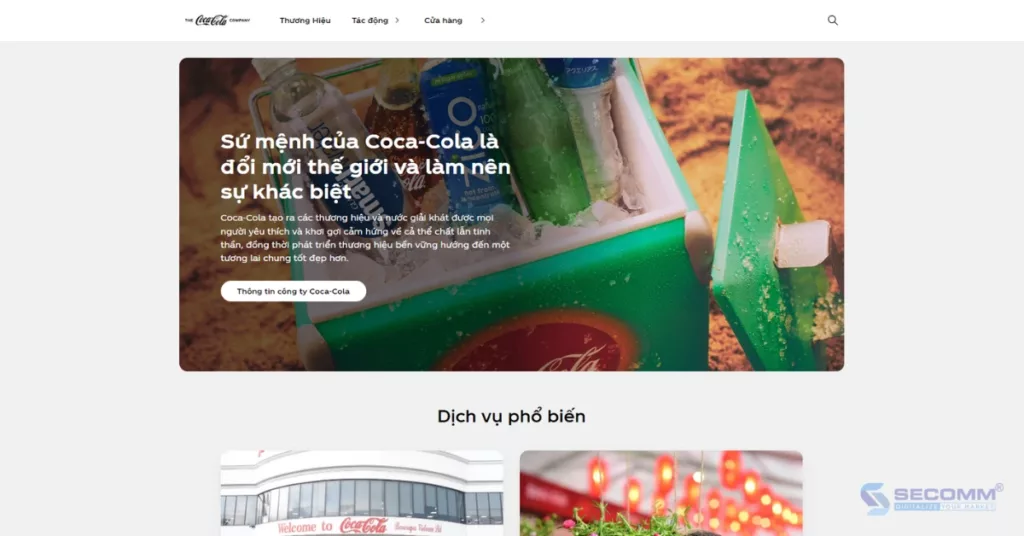
The Coca-Cola website utilizes Headless Commerce technology to leverage API integration, providing a seamless end-to-end omnichannel experience for global customers. This technology allows the business to expand through its markets, customize experiences, and integrate with third-party suppliers and solutions.
Technodom is one of the largest retailers in Central Asia, with an annual revenue of $800 million. This retail giant has around 9,000 employees, offering over 60,000 products and 4,000 categories.
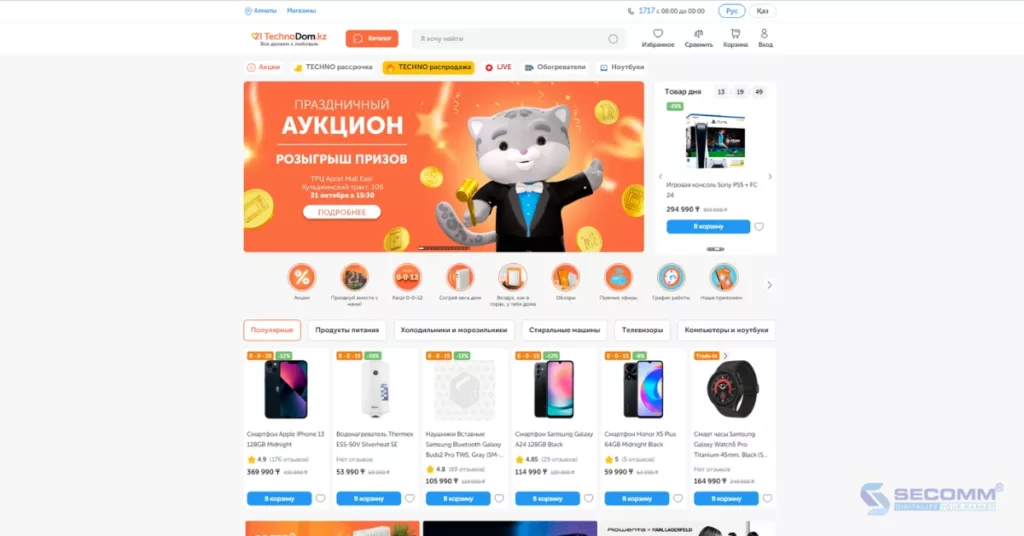
Technodom has implemented Headless Commerce on Magento with a page load speed of under one second, thanks to the PWA (Progressive Web App) pre-rendering solution. Additionally, the website’s backend is integrated with Akeneo PIM (Product Information Management) and ESB (Enterprise Service Bus), essential components for businesses to efficiently manage and distribute their databases.
Helly Hansen is a renowned Norwegian company that manufactures and retails clothing, sports gear, and outdoor accessories. Established in 1877, the company is now one of the world’s leading fashion and lifestyle brands, with a revenue of $2.8 billion in 2022.

Initially, Helly Hansen’s eCommerce website was built on the Magento platform. After a period of business operations, Helly Hansen decided to transition to Adobe Commerce to implement Headless Commerce. As a result, Helly Hansen’s website quickly saw a 24% increase in traffic, a 48% increase in mobile traffic, and a more than 45% increase in total revenue.
Kaporal is a French fashion brand specializing in jeans, T-shirts, shirts, jackets, and accessories. The brand was established in 2004 and is currently present in over 30 countries worldwide.
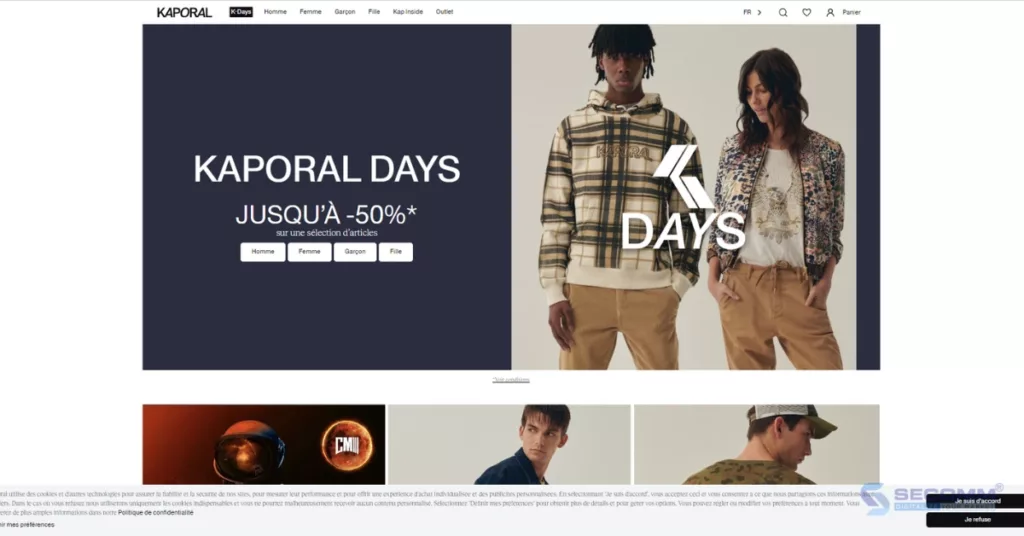
Similar to many longstanding Magento businesses, Kaporal has migrated its platform from Magento 1 to Magento 2 to take advantage of the Headless Commerce features from PWA Studio, addressing issues related to slow speed and poor mobile performance.
G-SP is a brand specializing in the business of spare parts and digital accessories, established in 2009. This Swedish company currently has offices in Sweden, the Netherlands, and China, offering over 10,000 products.

Similar to many other Magento stores, G-SP faced issues with website performance and stability. Therefore, G-SP opted for Headless PWA to enhance their digital conversions. The implementation of Headless PWA accelerated the mobile website speed by 2.7 times, which is particularly crucial for a complex Magento website with numerous plugins and categories like G-SP.
Above is the list of the top 10 eCommerce websites currently using the Adobe Commerce (Magento) eCommerce platform and Headless Commerce globally.
With deep expertise and the development of complex eCommerce systems for clients such as Changi Airport Group (Singapore), Trentham Estate (Australia), and The Warehouse (Vietnam), SECOMM understands the challenges in choosing a platform and deploying eCommerce that businesses are facing.
Contact SECOMM now or call directly at the hotline number (028 7108 9908) for free advice on the eCommerce website building roadmap!
 2
2
 3,370
3,370
 0
0
 1
1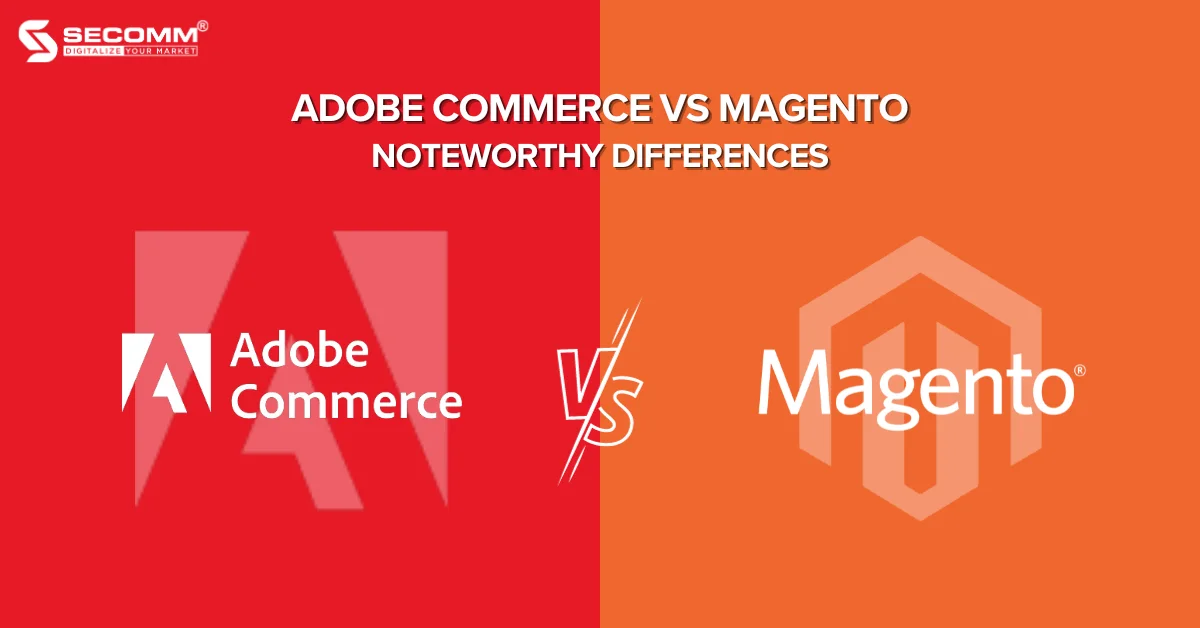
Magento and Adobe Commerce are considered popular eCommerce platforms, used by hundreds of thousands of businesses worldwide.
Both platforms have strong growth potential in the future, given the increasing trend of eCommerce and the demand for robust and flexible eCommerce solutions.
Magento is an open-source eCommerce platform used by over 300,000 eCommerce websites before being officially acquired by Adobe in 2018. Magento is known for its performance, user-friendliness, scalability, and security, especially in Magento 2.0.
Since its establishment, Magento has provided two main versions for businesses:
Currently, there are two main versions:
Magento Open Source and Adobe Commerce. Adobe Commerce is further divided into two versions, On-Premise (referred to as Adobe Commerce) and On-Cloud (referred to as Adobe Commerce Cloud).
Magento Open Source is a free, open-source eCommerce platform that requires users to have technical knowledge and skills to install, build, and manage the website. This platform also takes time and money to deploy basic to advanced features.
Key features include:
Depending on the complexity of the system, the cost of deploying a Magento website can fluctuate around $50,000 for the first year.
This is a paid on-premises service from Adobe, so this platform includes all the premium features of Magento Open Source and more.
After merging with Adobe, Magento Commerce was renamed Adobe Commerce and is considered part of the Adobe Experience Cloud—a set of solutions designed to help businesses make informed decisions and provide enhanced customer experiences based on detailed information and data.
Adobe Commerce is often integrated with Adobe Experience Manager, Adobe Analytics, and Adobe Target. Through Adobe Commerce, businesses have access to smart business services provided by Adobe, as well as machine learning capabilities and personalization provided by Adobe Sensei.
This makes Adobe Commerce the perfect eCommerce platform for businesses with complex needs and a desire to leverage leading capabilities to provide superior experiences for customers across multiple devices and channels. However, due to the relatively complex functional eCommerce website system on Adobe Commerce, businesses will need to be autonomous in the complex infrastructure as well.
The following diagram illustrates the reference architecture for deploying Adobe Commerce on AWS infrastructure. Other cloud service providers such as Azure, Google Cloud, and Alibaba Cloud also have similar infrastructure designs and services.
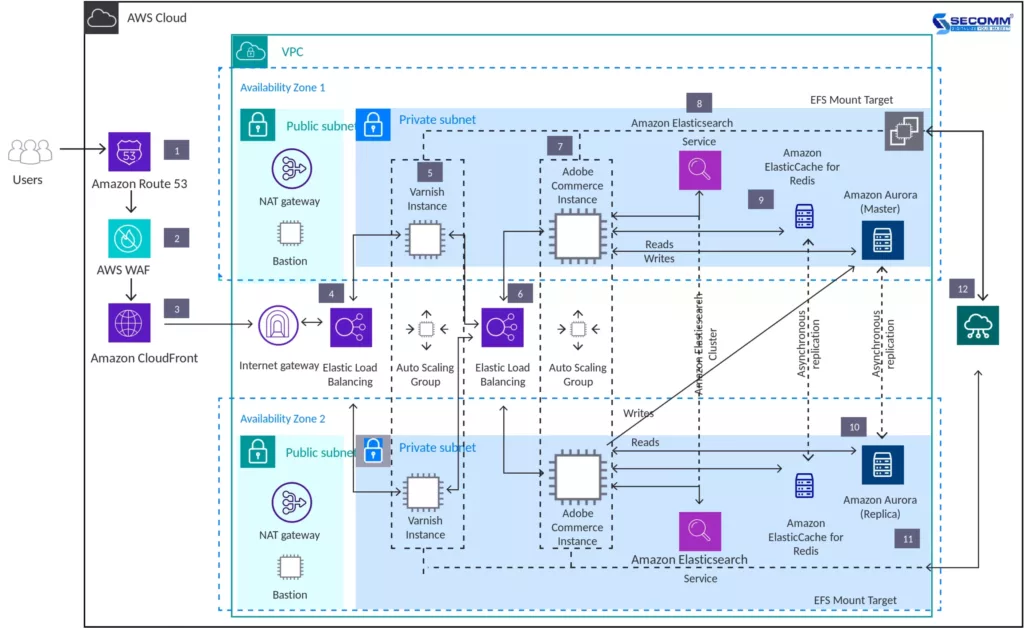
With all the reasons mentioned above, Adobe Commerce will have relatively high deployment costs, around $130,000 per project for the first year, depending on the complexity of the website system.
In contrast to the self-hosted version like Adobe Commerce, Adobe Commerce Cloud is a version that includes cloud services.
Specifically, this platform includes all the features of Adobe Commerce along with enhanced Adobe Cloud infrastructure, including integrated GIT (distributed source code management software) and specific environments for development, staging, and building the website system.
This means that developers using this platform can write code, test, and deploy on suitable environments, ensuring smooth performance.
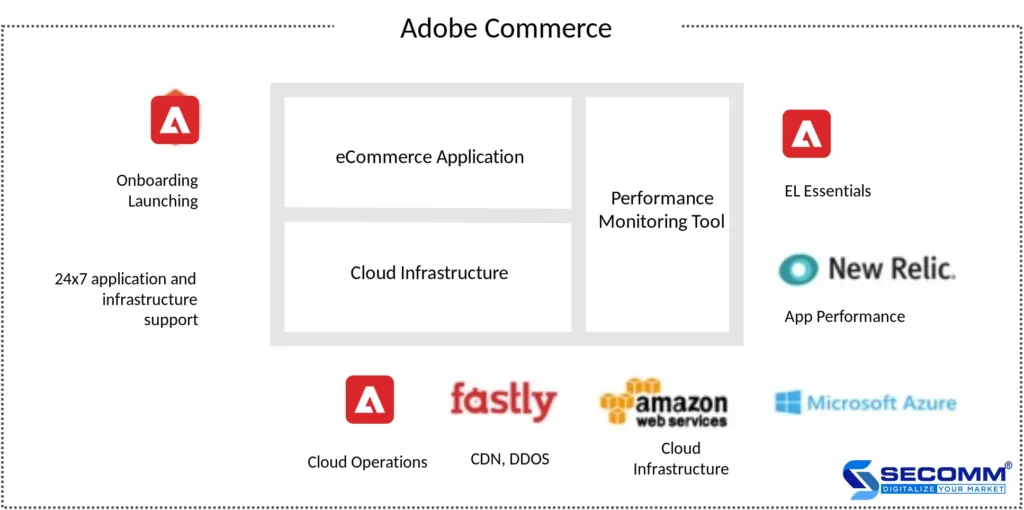
Similar to Adobe Commerce, Adobe Commerce Cloud is also suitable for large enterprises with special requirements because this version can meet all specialized needs, with flexibility and scalability through available management features.
However, the cost for enterprises to deploy Adobe Commerce Cloud will be higher than Adobe Commerce, around $150,000 per project for the first year, depending on the complexity of the website system.
Read more: The cost of building an Adobe Commerce (Magento) website
Although Adobe Commerce and Magento share the same core technology platform, they have functional differences. Magento includes some core features, and businesses can develop or integrate additional features through extensions.
On the other hand, Adobe Commerce includes features from Magento Open Source, along with additional features developed by the Adobe team.
Similarly, Adobe Commerce Cloud includes features from Adobe Commerce, along with advanced and more specialized features designed to address specific challenges for each business.
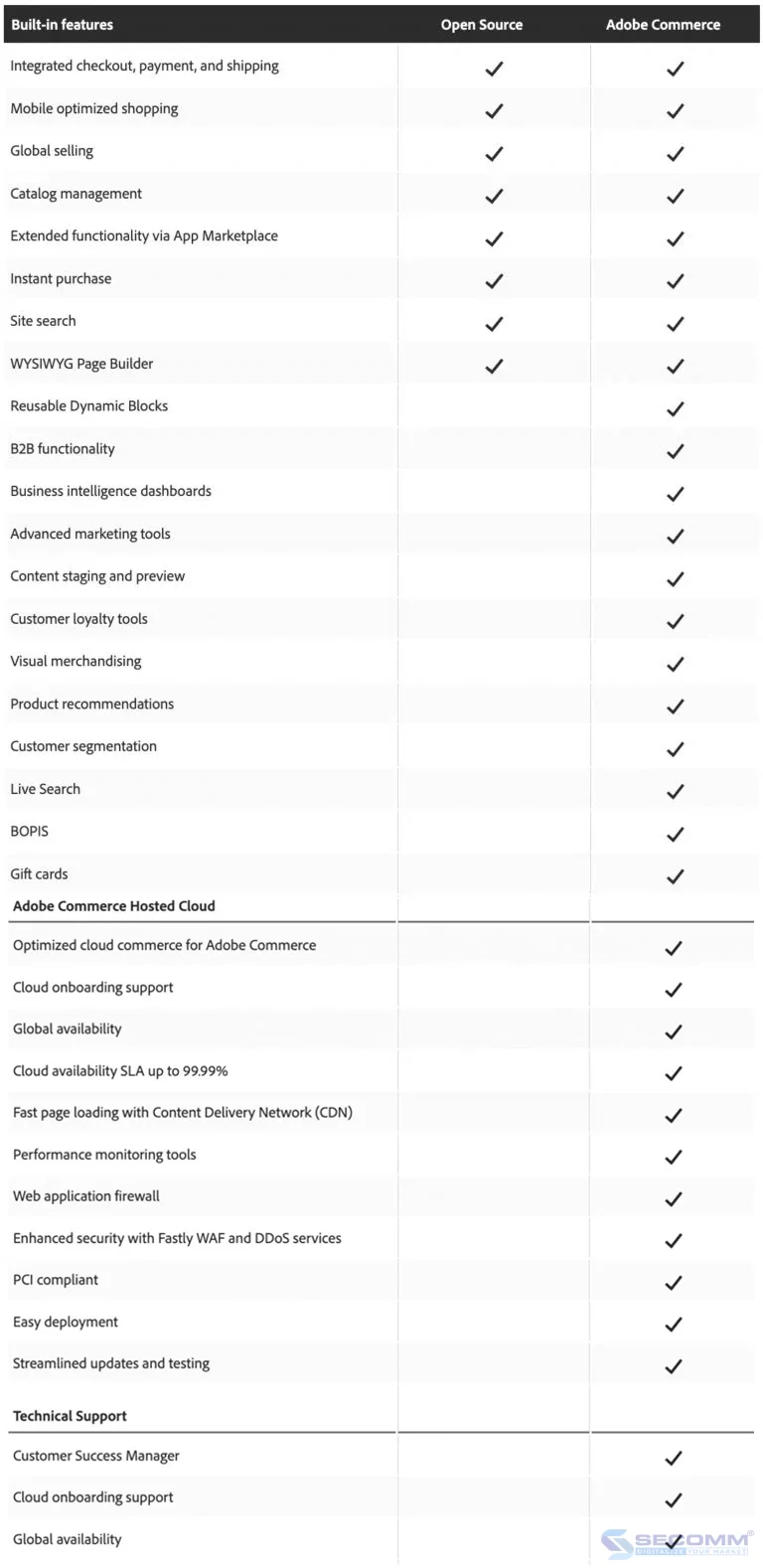
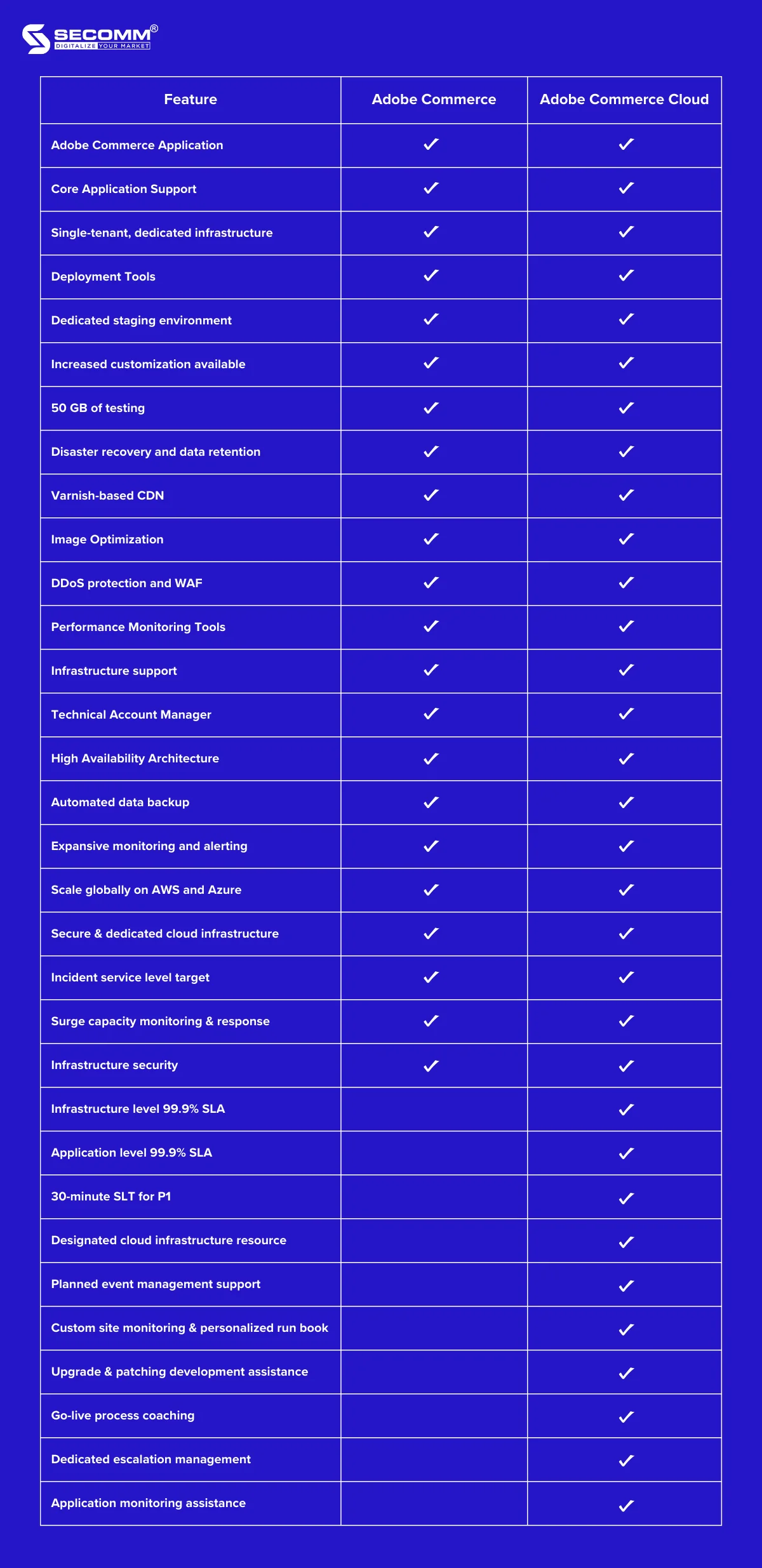
Besides the features, Magento and Adobe Commerce (both versions) also have some other differences.
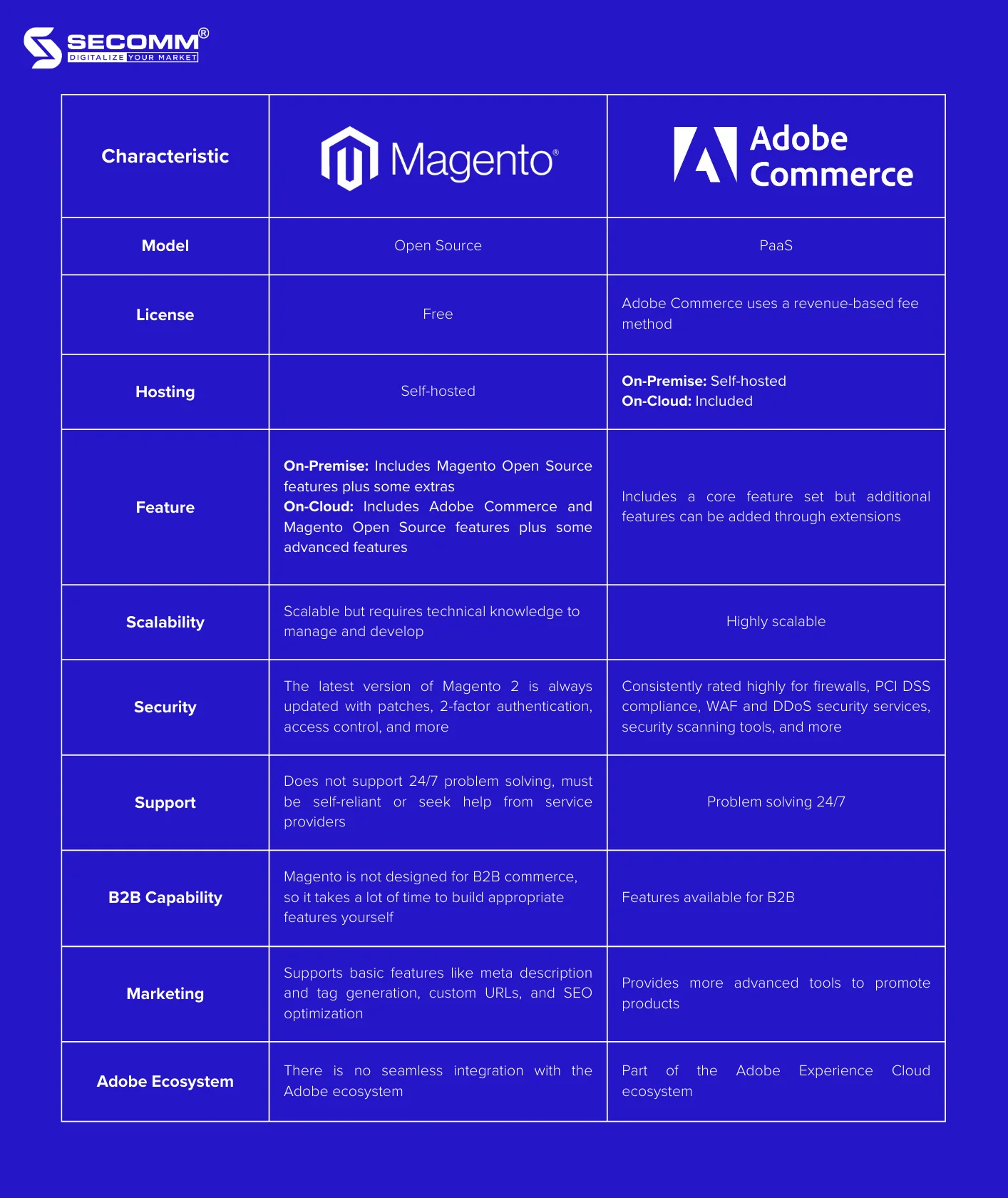
Magento and Adobe Commerce are both powerful eCommerce platforms that can meet the needs of businesses of all sizes. However, there are some notable differences between these two platforms.
Choosing the right eCommerce platform for a brand depends on the specific needs and budget of each business. If a business is a small to medium-sized enterprise, newly entering the market, and only requires basic and advanced features, then Magento Open Source is a good choice.
However, if the business is large and complex, requiring extensive features and scalability, then Adobe Commerce is a better choice.
With deep expertise and the development of complex eCommerce systems for clients such as Changi Airport Group (Singapore), Trentham Estate (Australia), and The Warehouse (Vietnam), SECOMM understands the challenges in choosing a platform and deploying eCommerce that businesses are facing.
Contact SECOMM now or call directly at the hotline number (028 7108 9908) for free advice on the eCommerce website building roadmap!
Read more:
 8
8
 6,419
6,419
 0
0
 1
1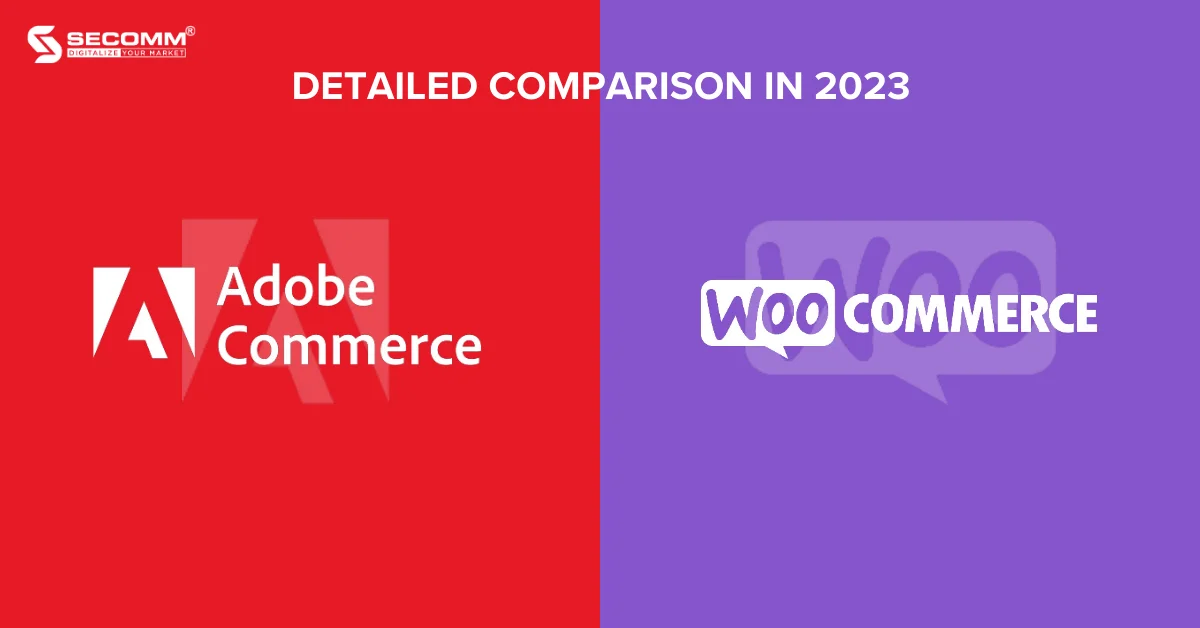
Among the eCommerce platforms that businesses consider choosing to develop their online stores, the two names Adobe Commerce and WooCommerce are always put on the scale for comparison.
Both are suitable for small and large businesses to build websites due to their flexible customization capabilities and high scalability. However, there are significant differences between WooCommerce and Adobe Commerce that are worth noting.
Adobe Commerce, formerly known as Magento Commerce, is an open-source eCommerce solution designed for medium to large-scale businesses, particularly those undergoing rapid growth and with high demands for customization and scalability.
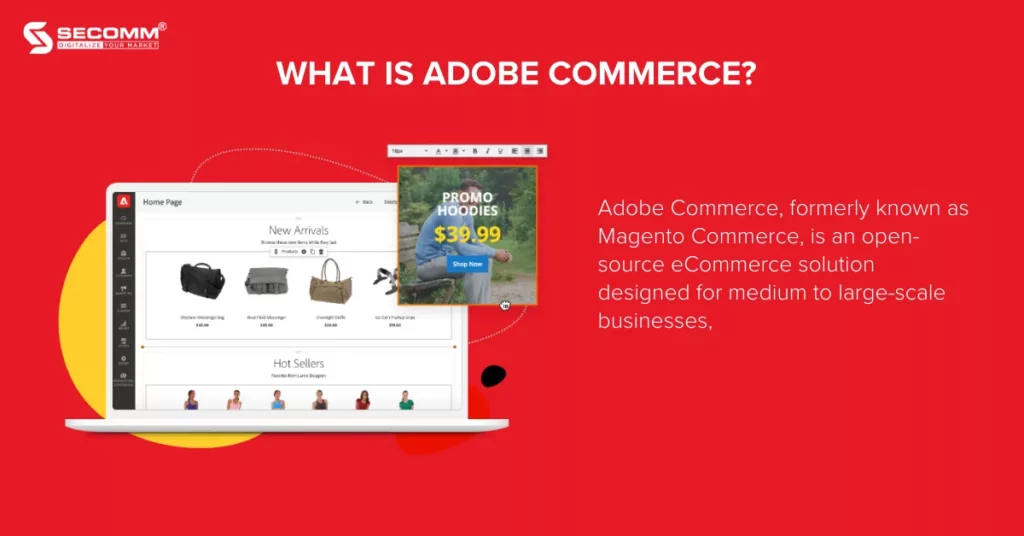
Currently, Adobe Commerce offers two different version options:
Related article: Top 20 eCommerce websites using Adobe Commerce (Magento)
WooCommerce is an open-source eCommerce plugin developed for the WordPress platform, a widely used Content Management System (CMS) for creating and managing websites.
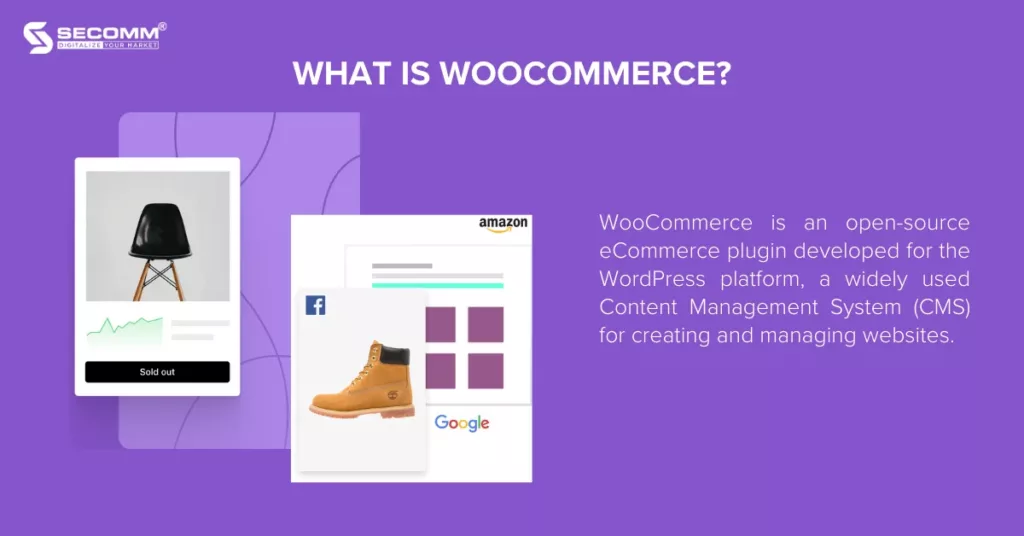
Consequently, WooCommerce is favoured by many businesses utilizing WordPress to develop their eCommerce websites.
Related article: Top 20 eCommerce websites using WooCommerce
Adobe Commerce and WooCommerce are two popular eCommerce platforms, but each platform serves different business needs due to differences in deployment costs, feature systems, scalability, and security.
The deployment costs of Adobe Commerce will depend largely on the version chosen by the business.
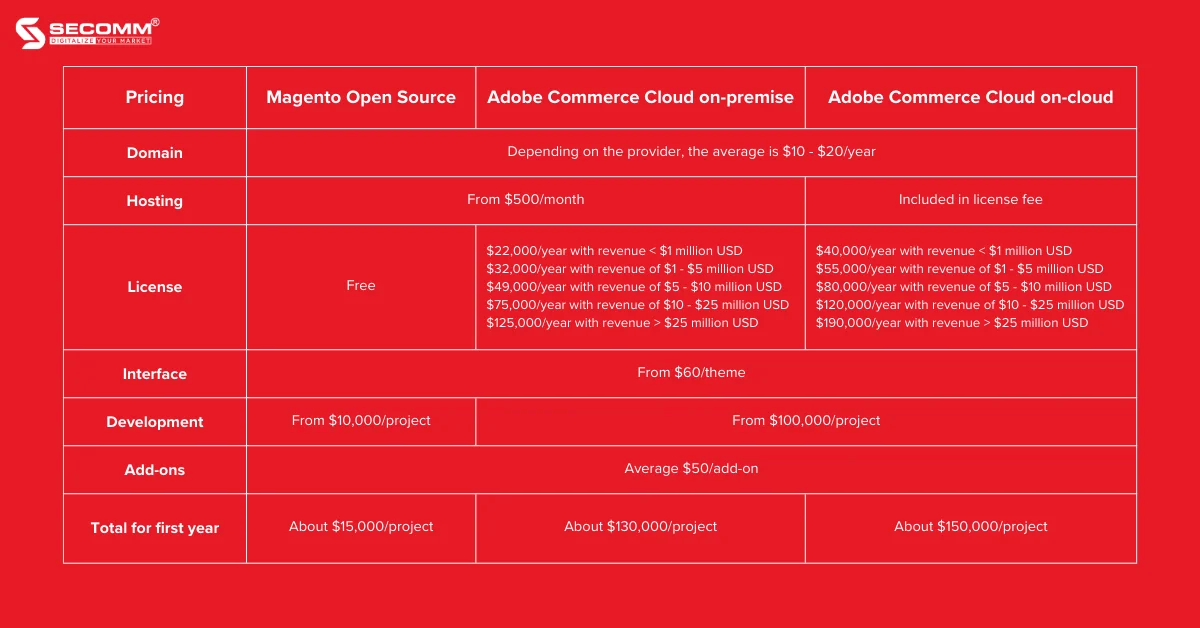
It can be seen that the deployment cost for an eCommerce website on Adobe Commerce is relatively high, starting from $15,000 per project for the Magento version and $130,000 per project for the first year with the Adobe Commerce version.
In contrast, the cost of using WooCommerce is entirely free, and the website construction cost is also relatively more budget-friendly compared to Adobe Commerce. Below are some estimated costs for deploying an eCommerce website on WooCommerce:
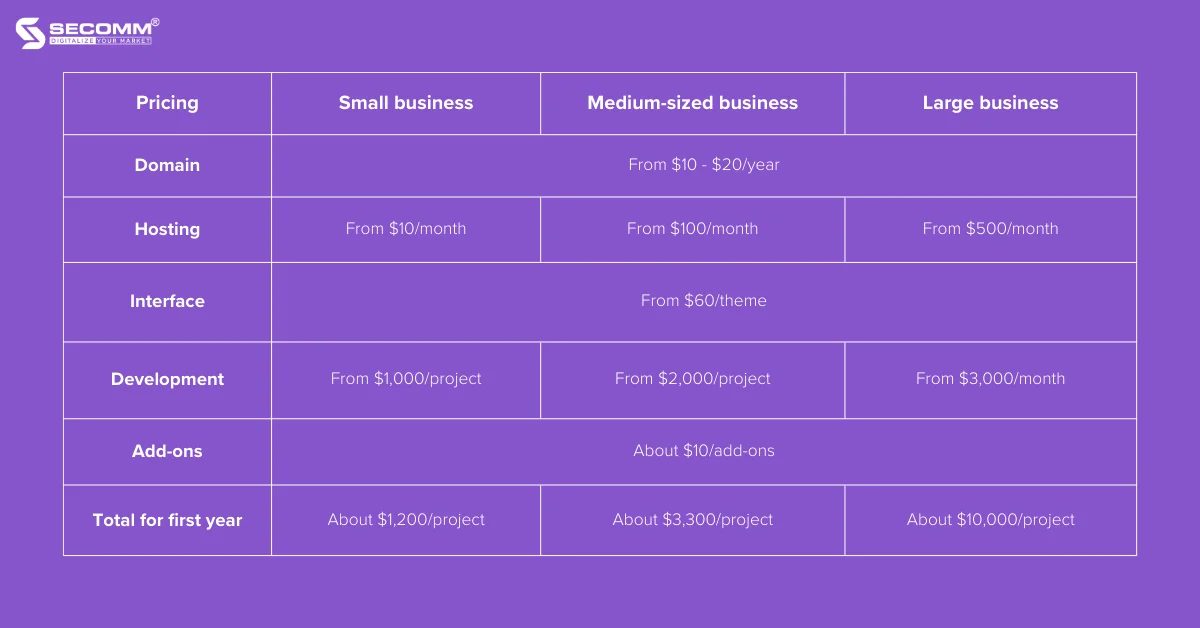
Note: These are only cost estimates. Actual costs may vary depending on factors such as needs, service providers, and optional features.
Adobe Commerce and WooCommerce are both comprehensive eCommerce platforms covering everything from A to Z. Both have their advantages and disadvantages, catering to the diverse functional needs of businesses.
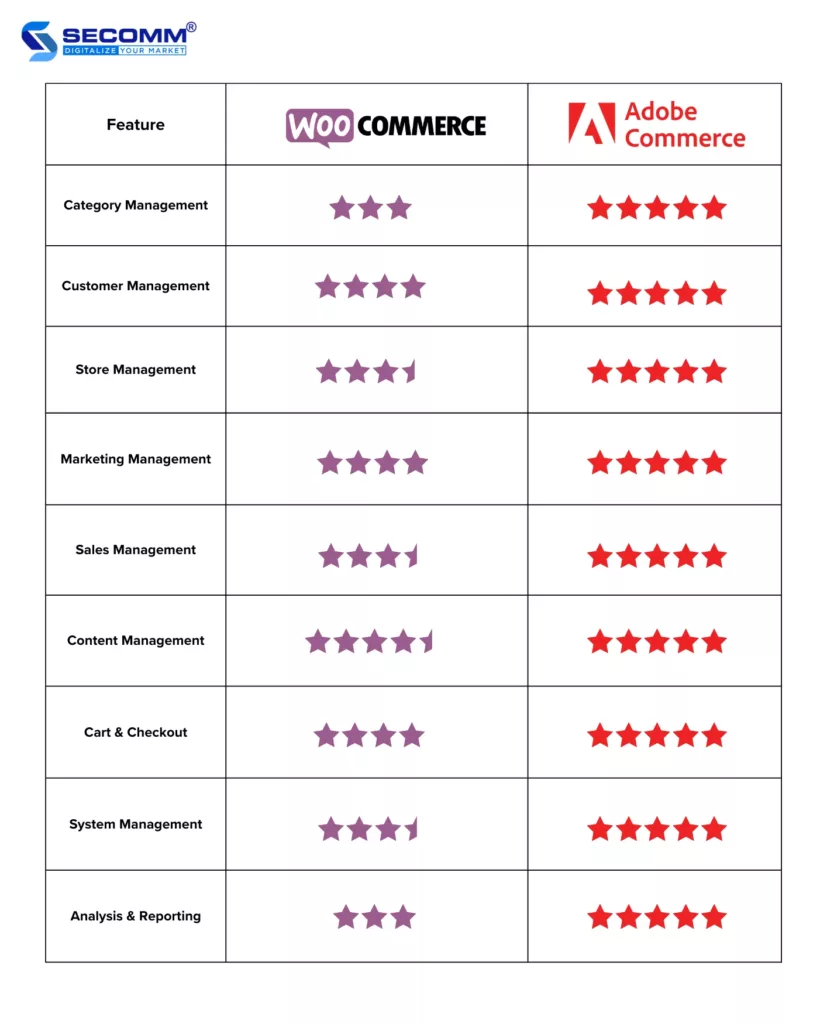
In addition to the basic feature set, businesses also need to consider advanced features that the system can accommodate.
It can be seen that the feature system of Adobe Commerce is more comprehensive than WooCommerce, covering both basic and advanced functionalities.
Therefore, for small to medium-sized businesses just starting in eCommerce, WooCommerce is a suitable choice. If the brand is a large enterprise with the need to build a large, complex online store, Adobe Commerce would be a perfect choice.
Read more: Top 10 Features To Increase eCommerce Website Revenue
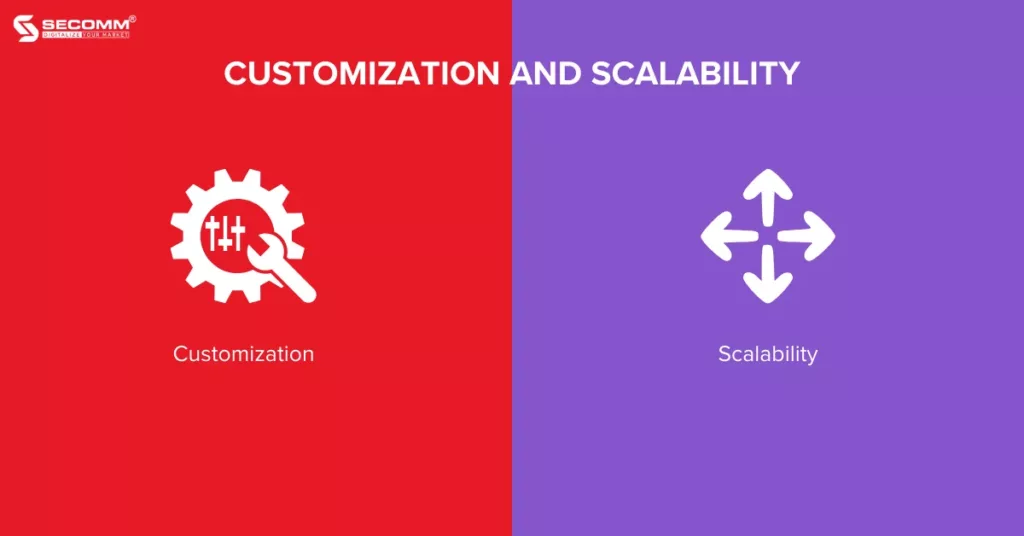
Adobe Commerce is an open-source platform, especially the Magento Open Source version, meaning developers can access the source code, making customization easier. This allows businesses to create features and integrate customizations to meet specific needs.
Similarly, WooCommerce also provides high customization capability with numerous available themes, plugins, and apps.
However, as a WordPress plugin, WooCommerce’s customization capability is not as extensive as Adobe Commerce.
Both platforms have high scalability to handle traffic and large transaction volumes. However, Adobe Commerce’s scalability is higher than WooCommerce’s, especially for businesses with large, complex product catalogues or significant inventory management needs.
In summary, Adobe Commerce offers higher customization and scalability capabilities compared to WooCommerce. Still, the website development process with Adobe Commerce is more complex, requiring developers with substantial experience and technical expertise.
Adobe Commerce and WooCommerce both provide features and tools for securing customer and business data. However, there are some notable differences in security capabilities between these two platforms.
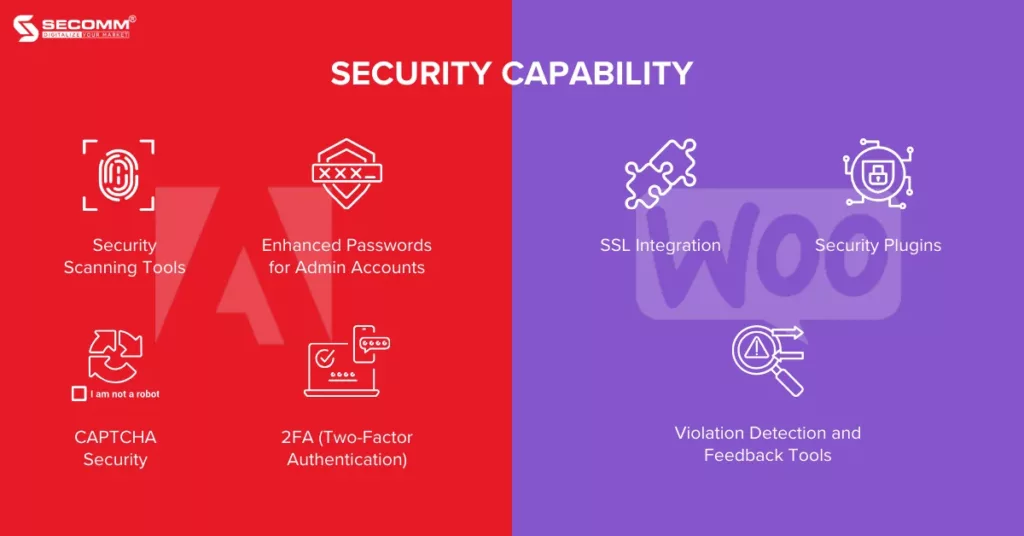
Adobe Commerce offers a range of security features and tools, including:
WooCommerce also provides some security features and tools, including:
Similar to the above factors, Adobe Commerce is generally considered to have higher security compared to WooCommerce.
It can be seen that Adobe Commerce is rated higher than WooCommerce in many aspects. However, while WooCommerce is known for being a user-friendly platform, making it easy for businesses without strong technical capabilities to quickly deploy, Adobe Commerce requires a professional team to build and manage a highly customized, scalable, and complex system.
In general, WooCommerce is suitable for small to large businesses using WordPress, wanting to start e-commerce deployment, and requiring basic customization and expansion solutions. However, Adobe Commerce offers flexibility, customization, and scalability, making it more suitable for corporations with complex system requirements.
In reality, the more flexible and customizable platforms with high scalability, the more complex and costly the deployment process becomes. Therefore, businesses need to consider the scale and development needs to make an appropriate choice.
With deep expertise and the development of complex eCommerce systems for clients such as Changi Airport Group (Singapore), Trentham Estate (Australia), and The Warehouse (Vietnam), SECOMM understands the challenges in choosing a platform and deploying eCommerce that businesses are facing.
Contact SECOMM now or call directly at the hotline number (028 7108 9908) for free advice on the eCommerce website building roadmap!
Read more: Shopify Plus vs Adobe Commerce: Key Differences 2023
 2
2
 6,328
6,328
 0
0
 1
1Subscribe to get the latest eBook!
Hotline